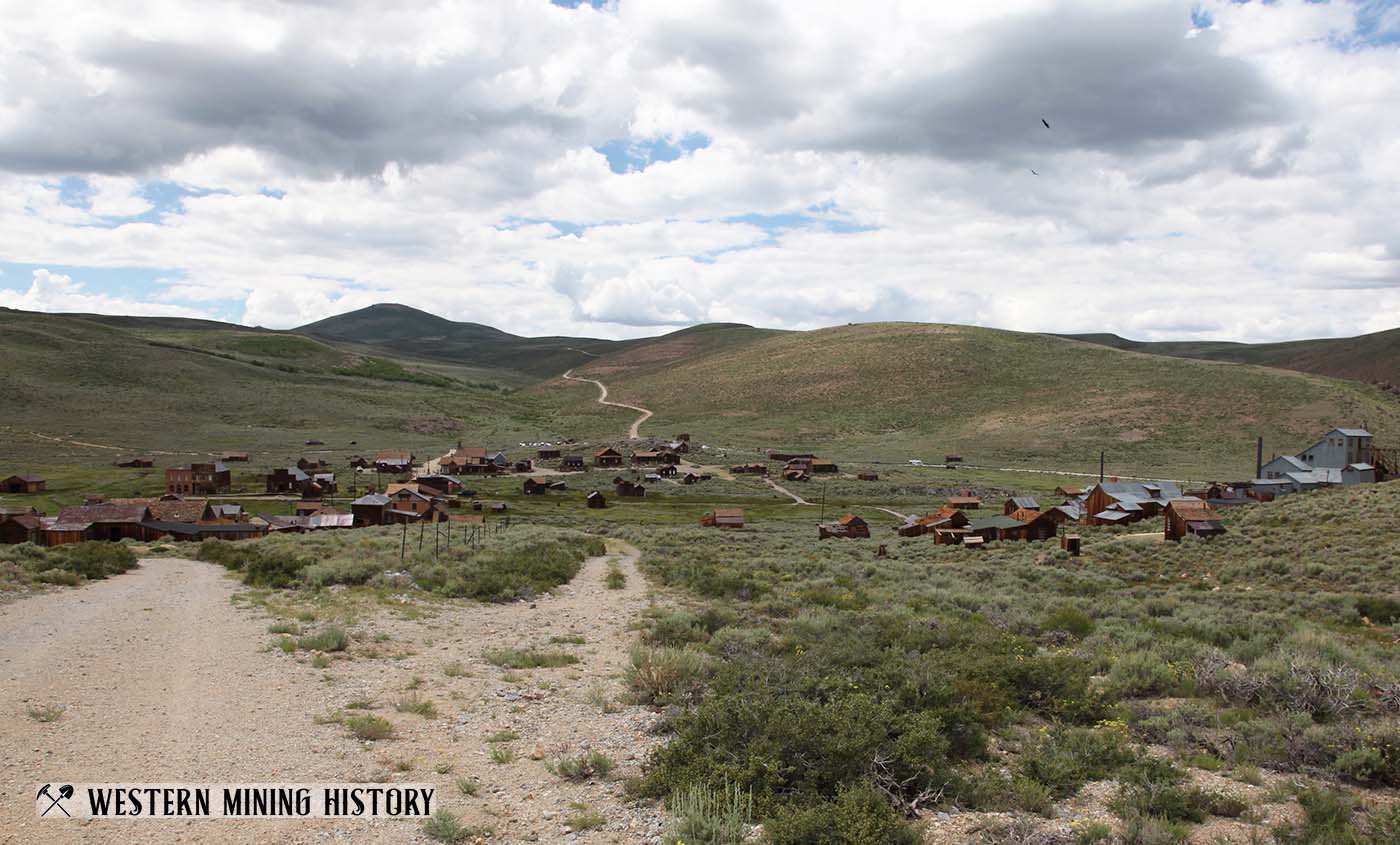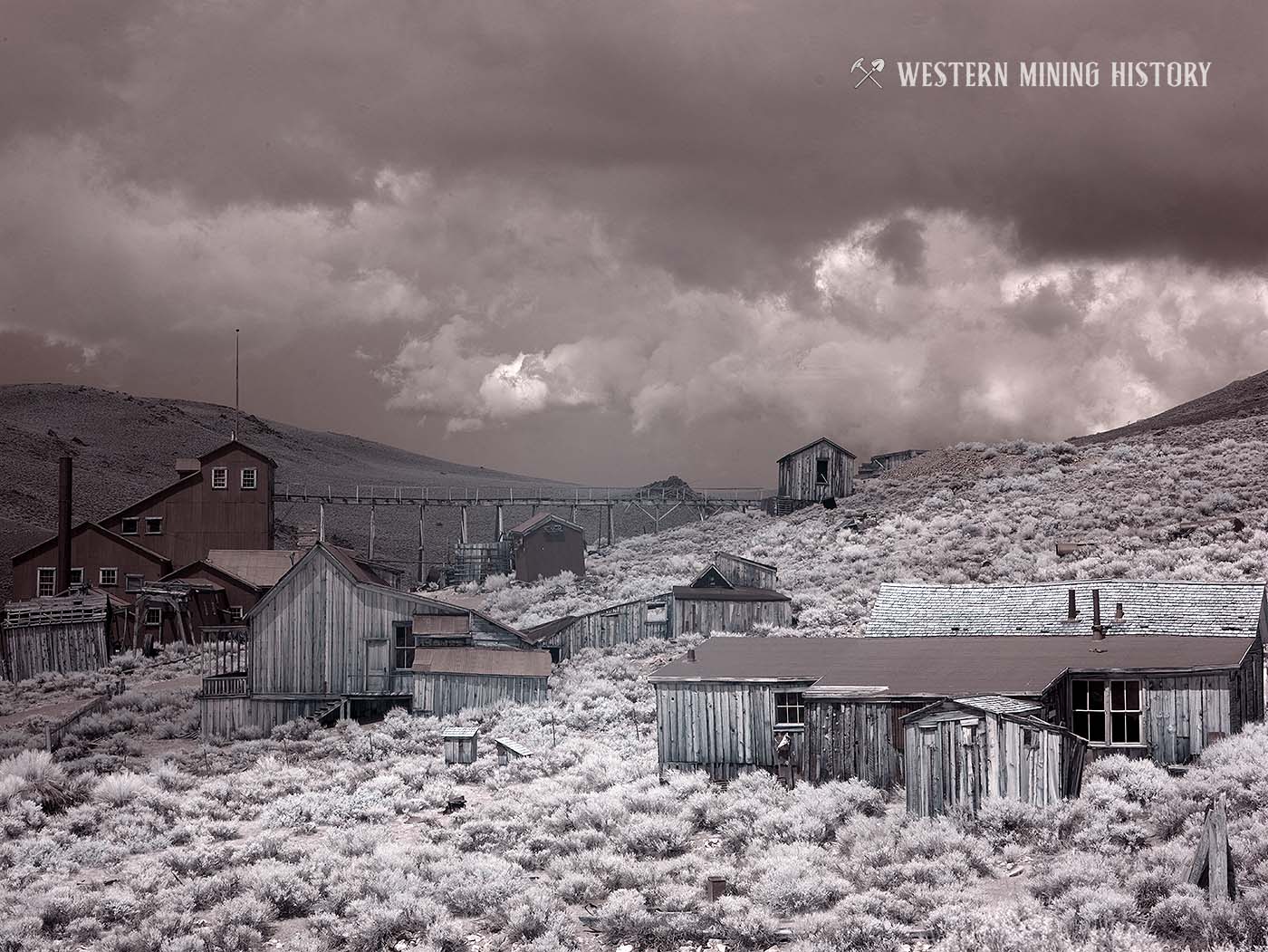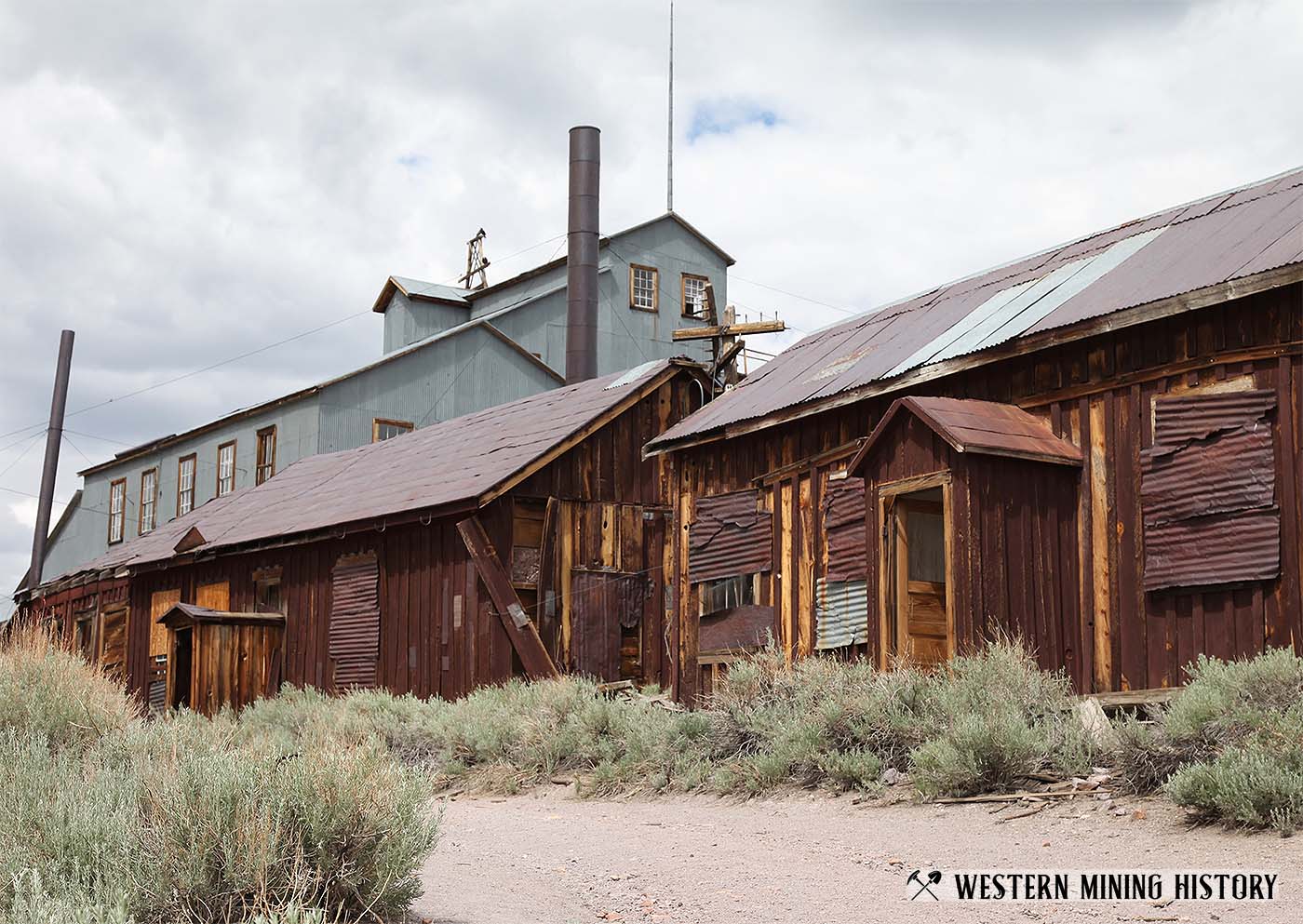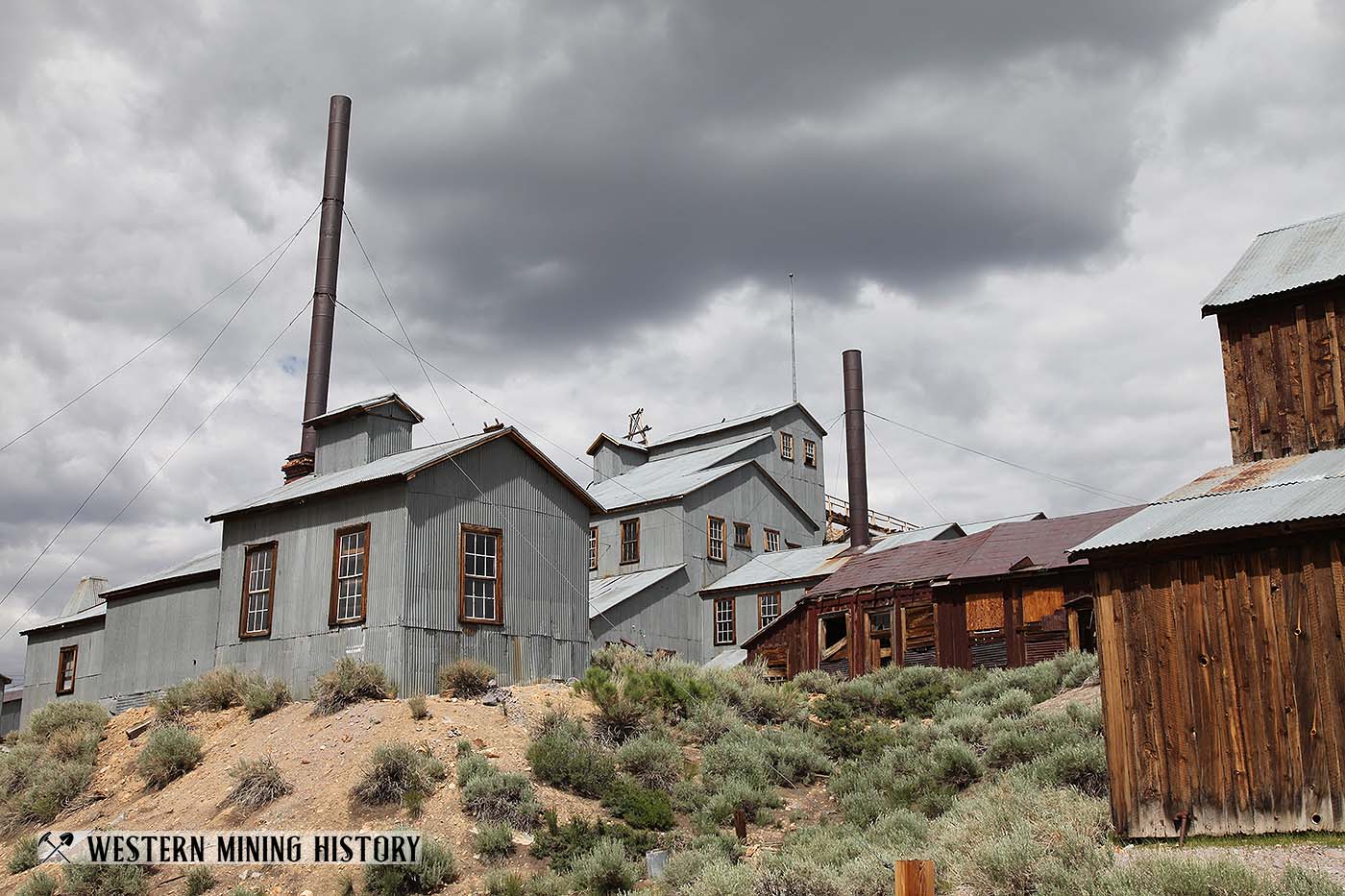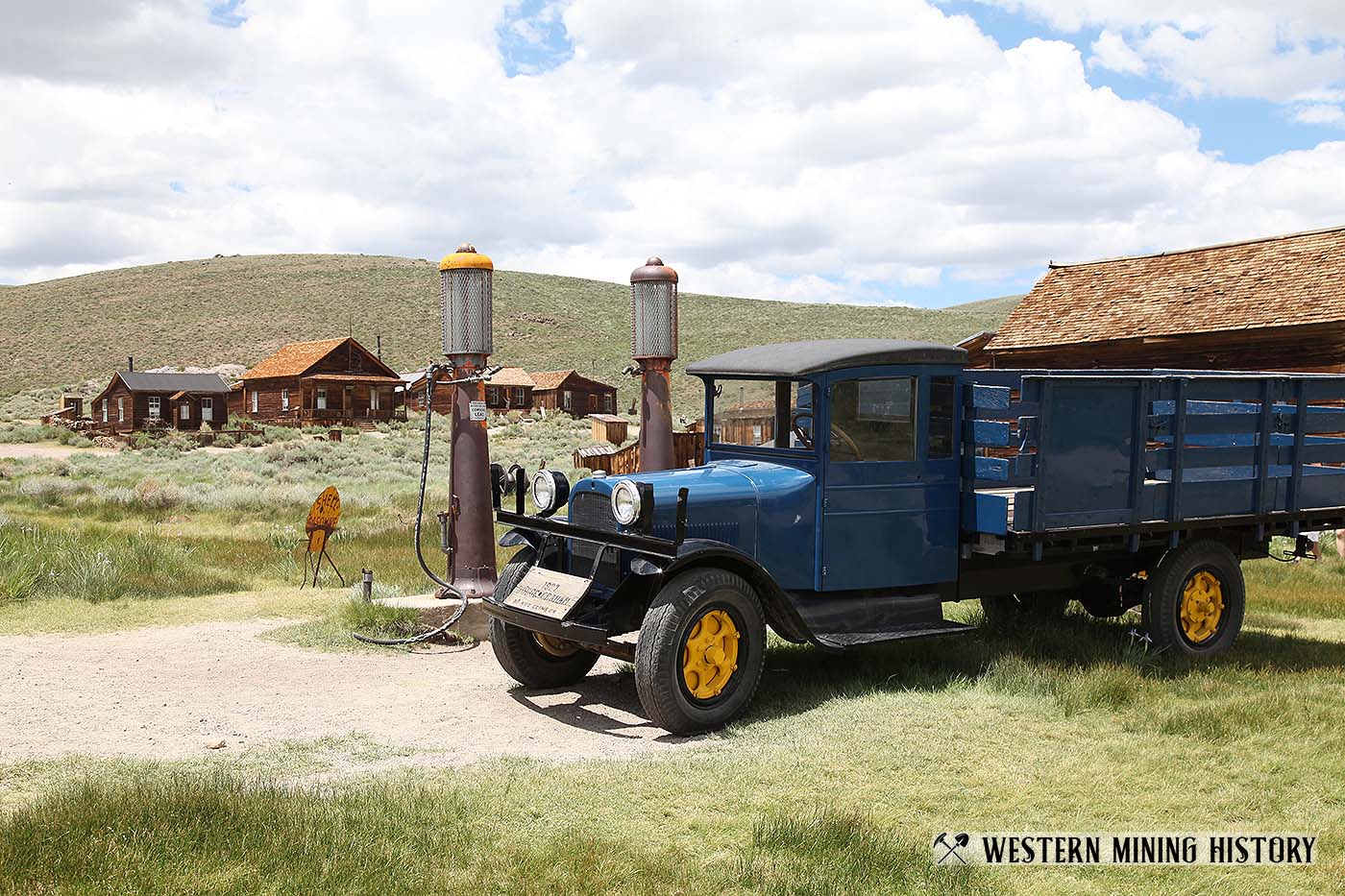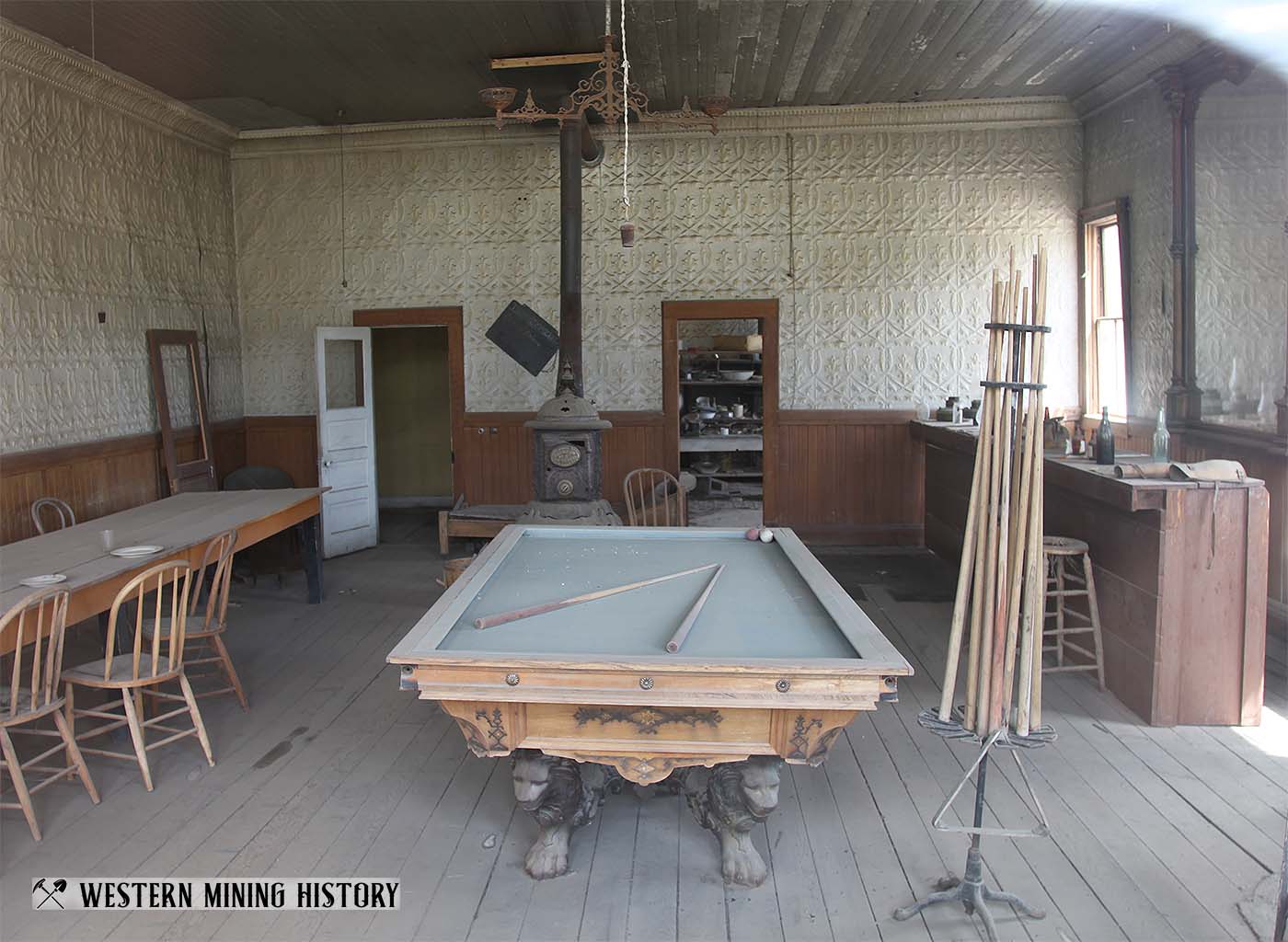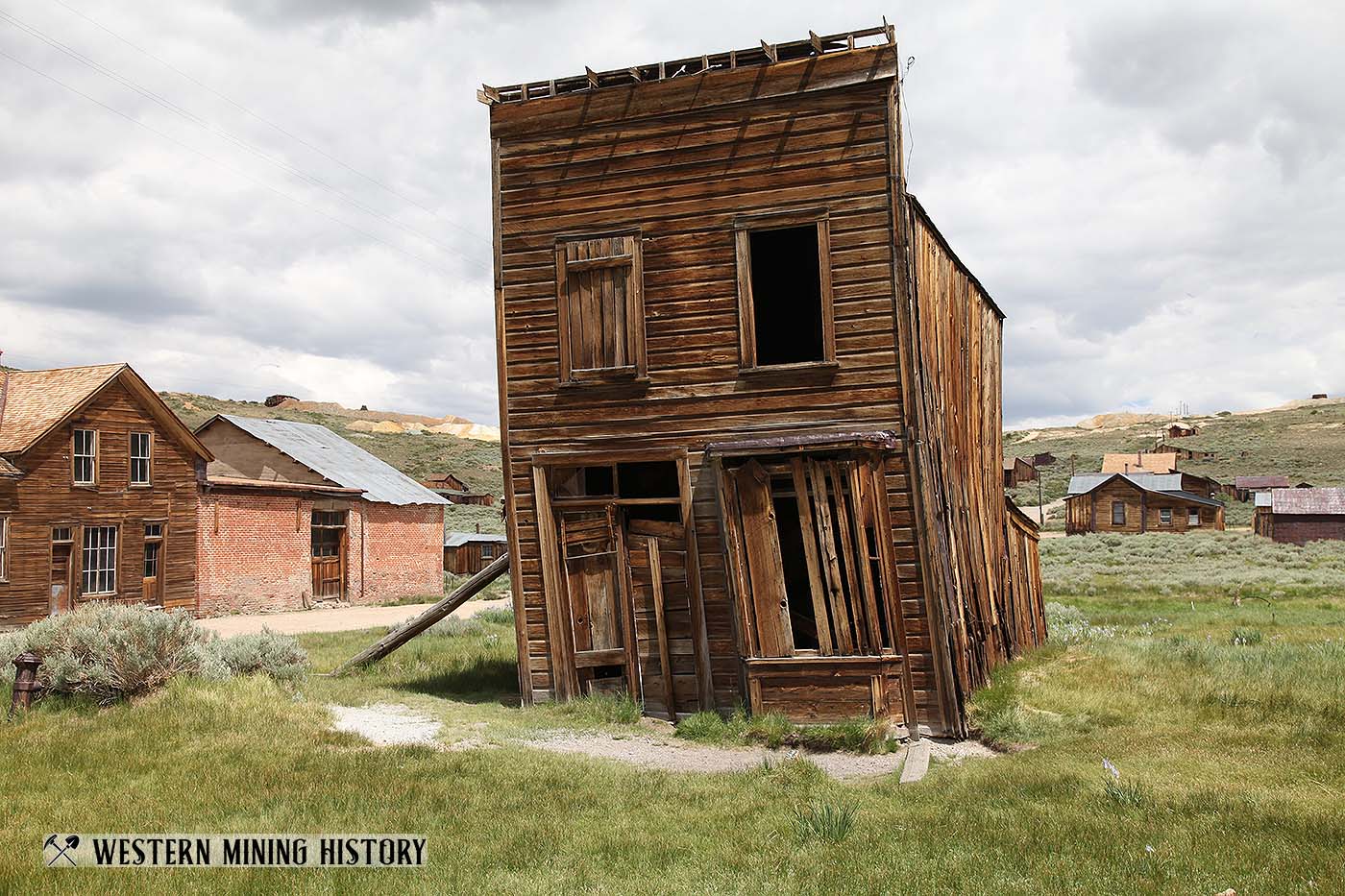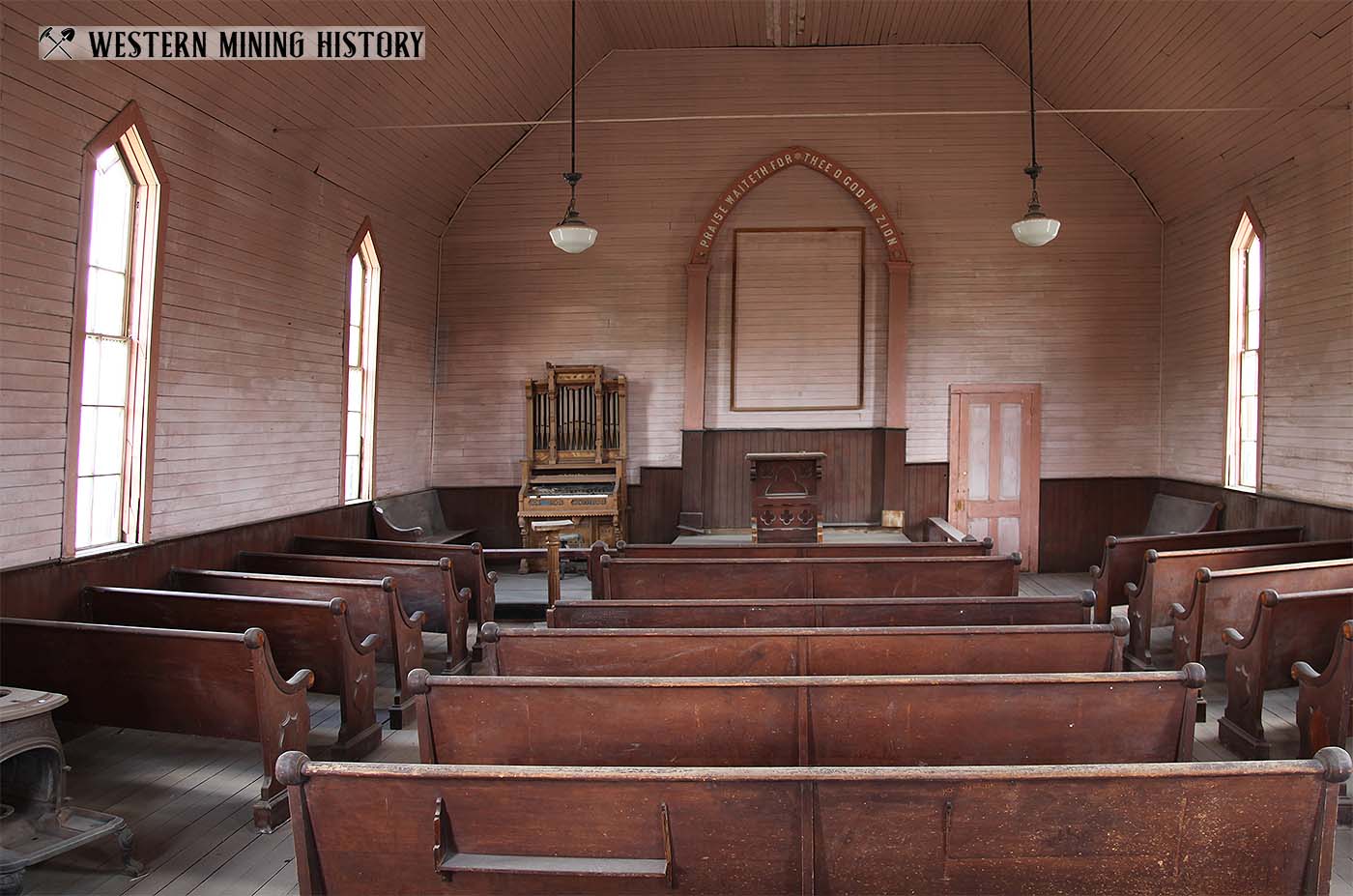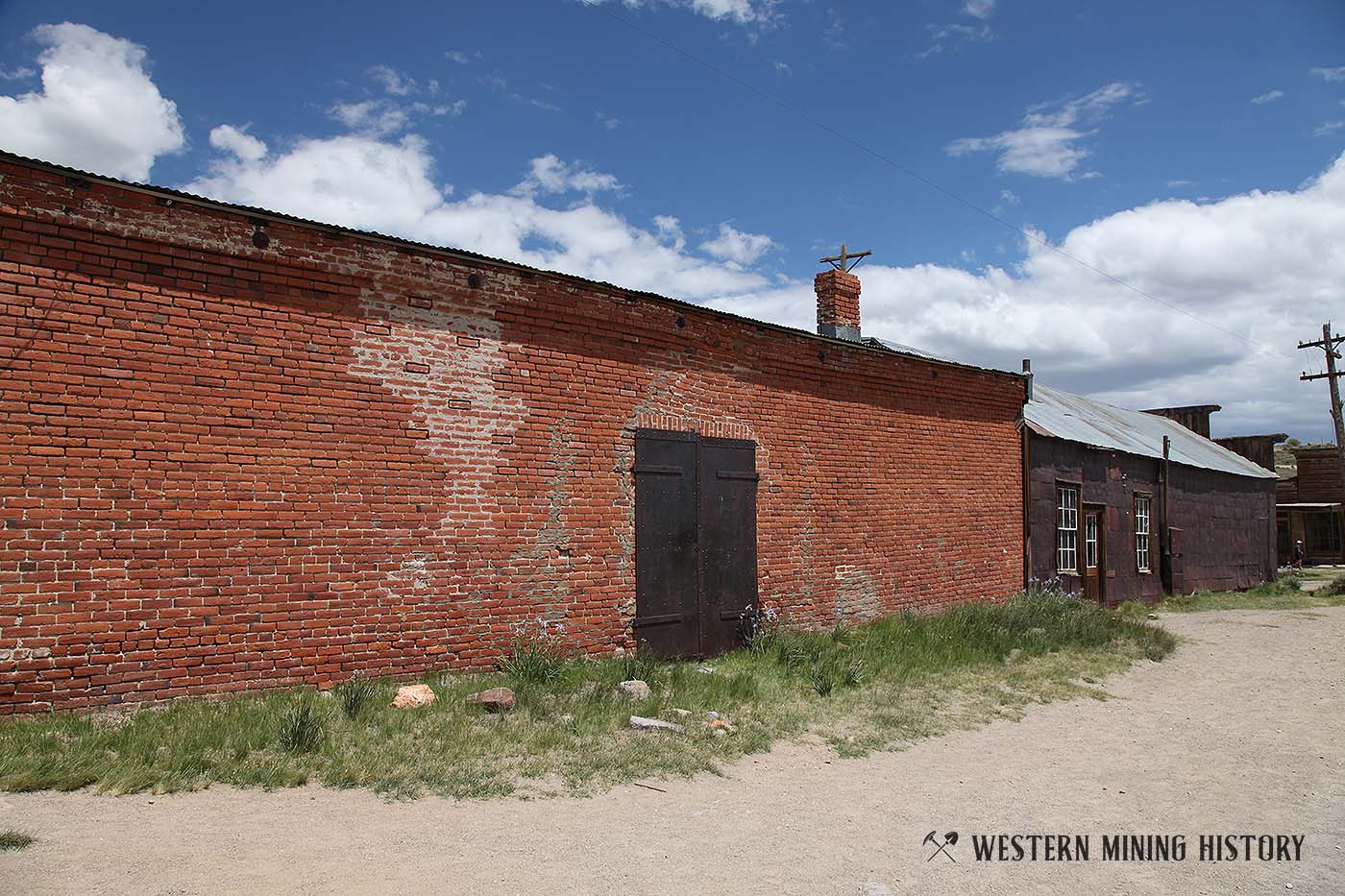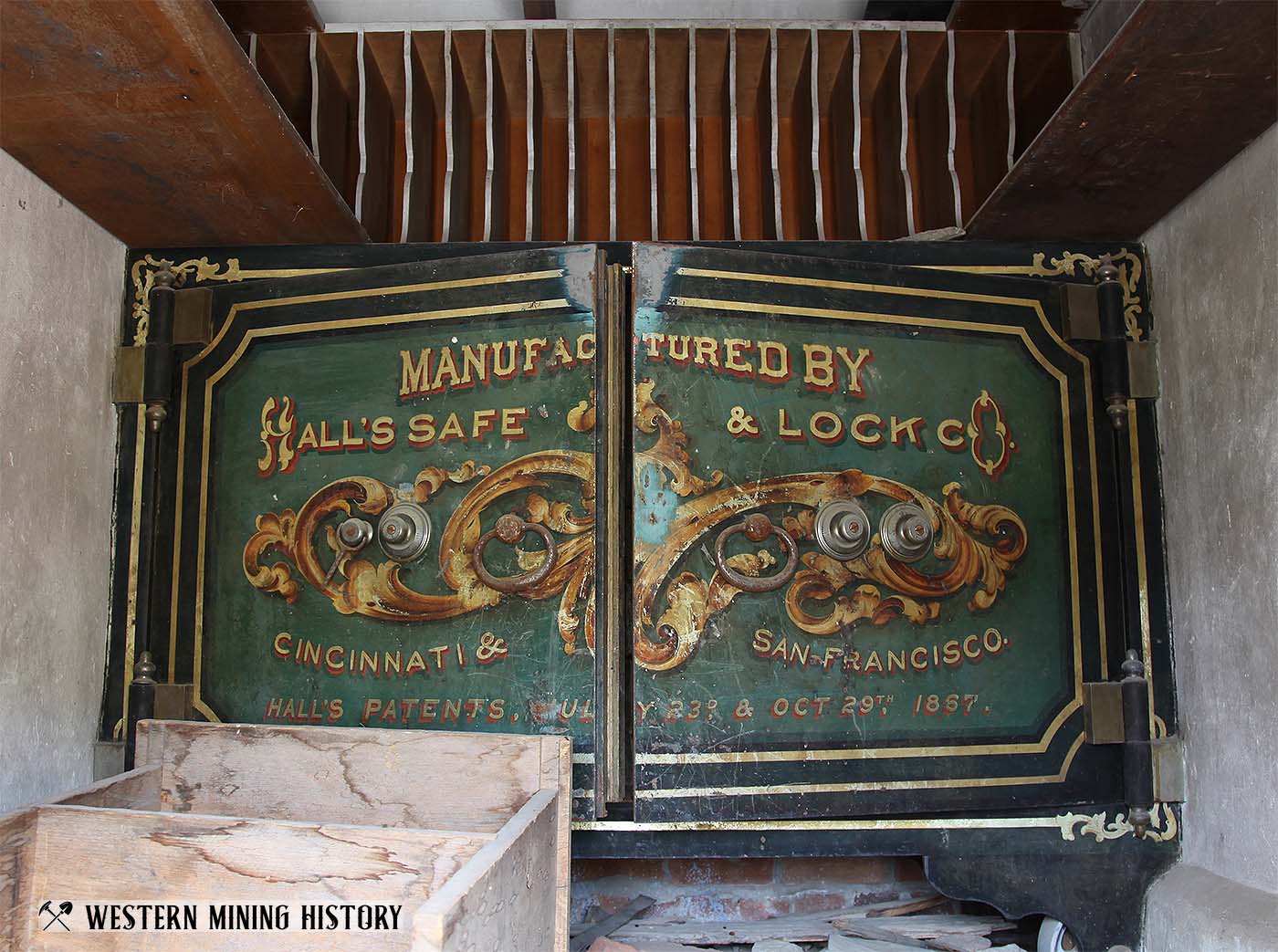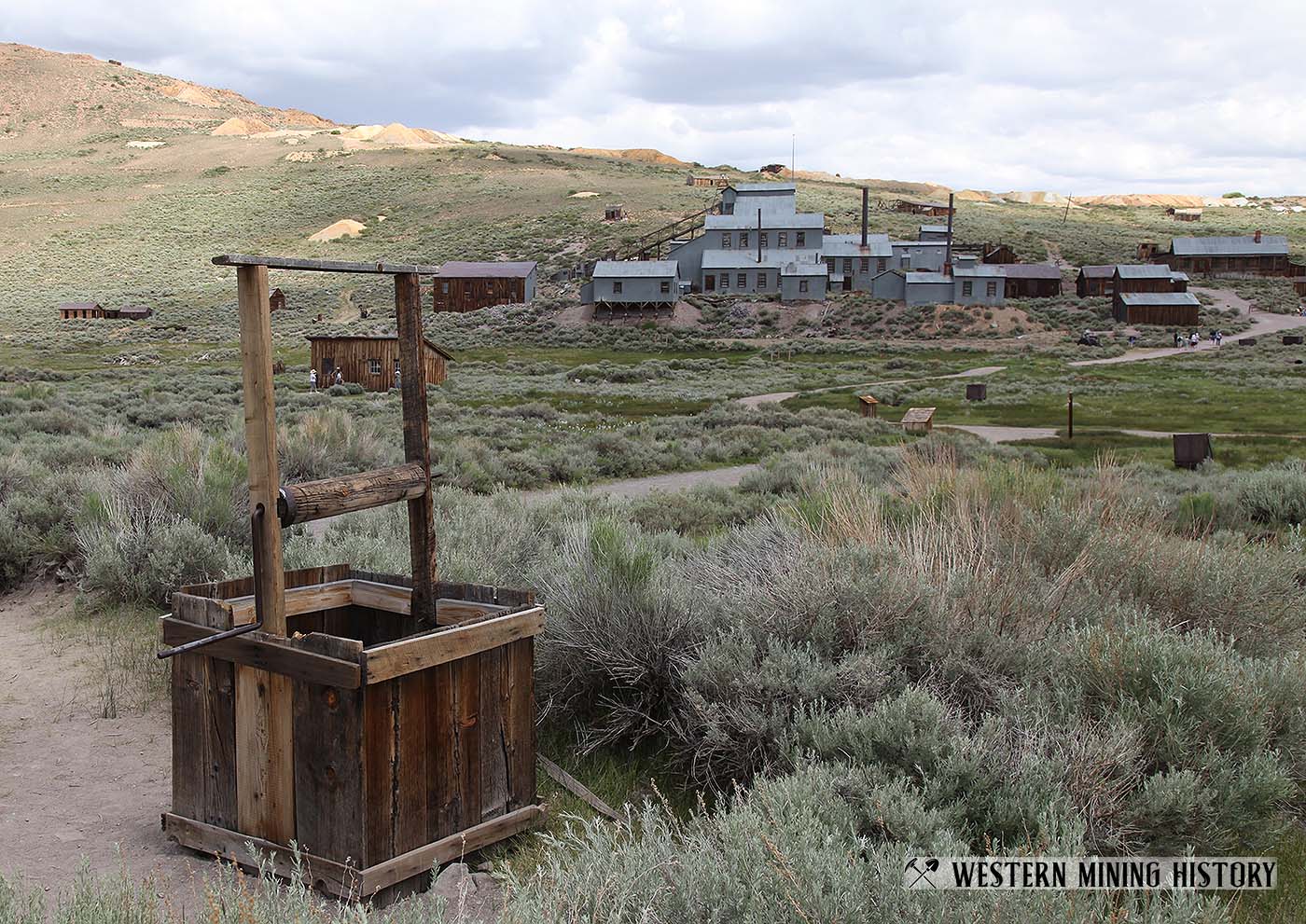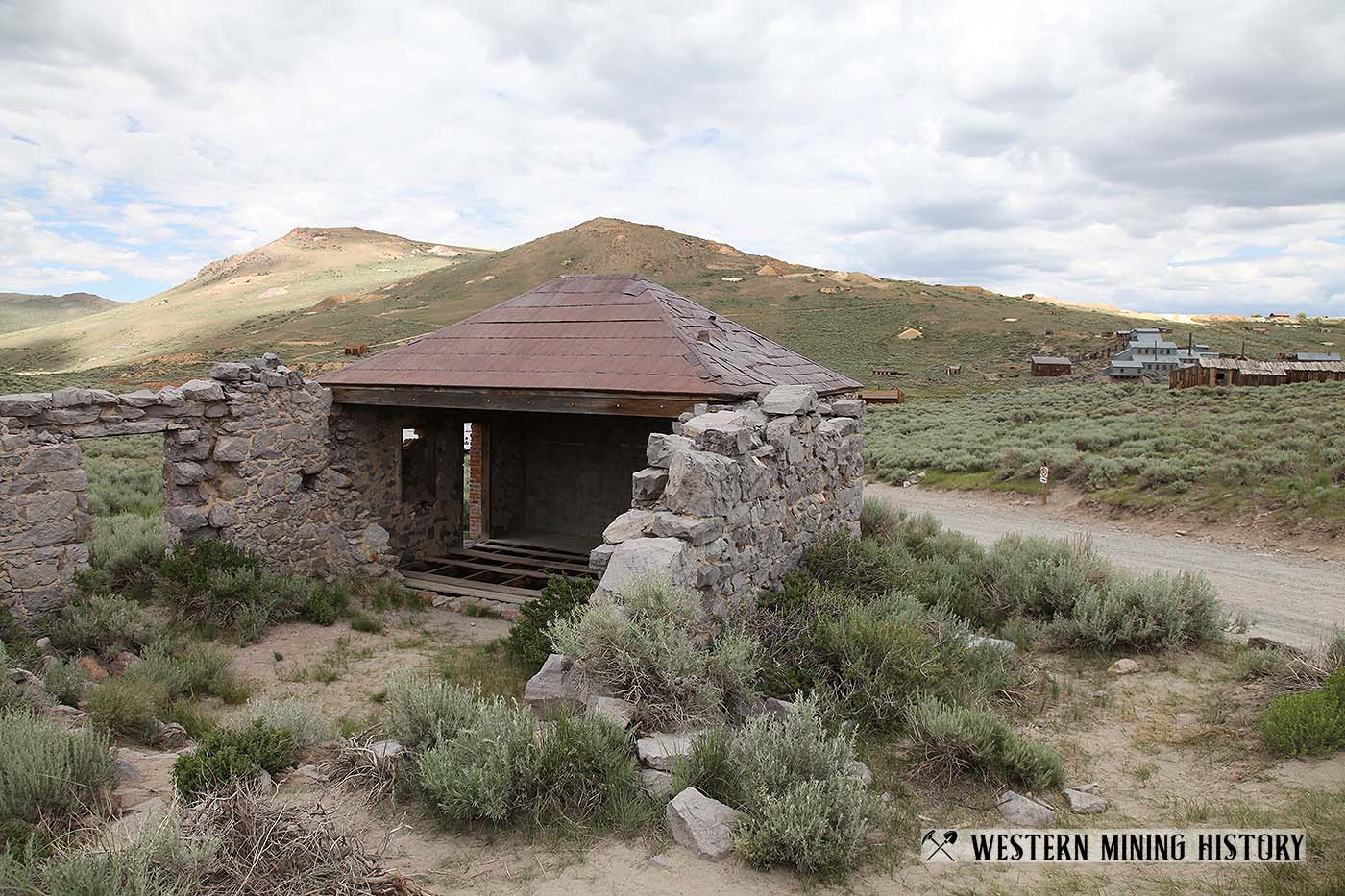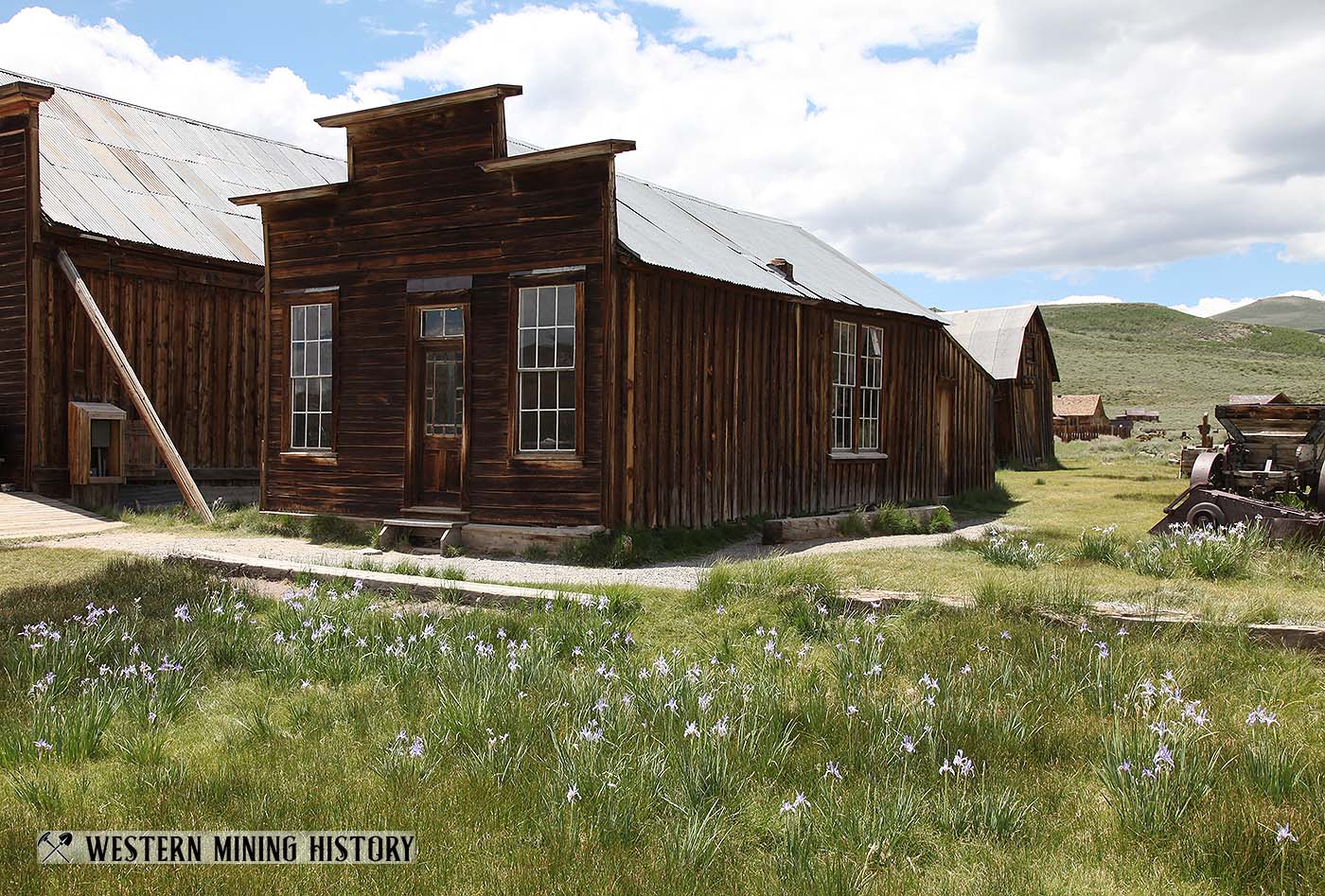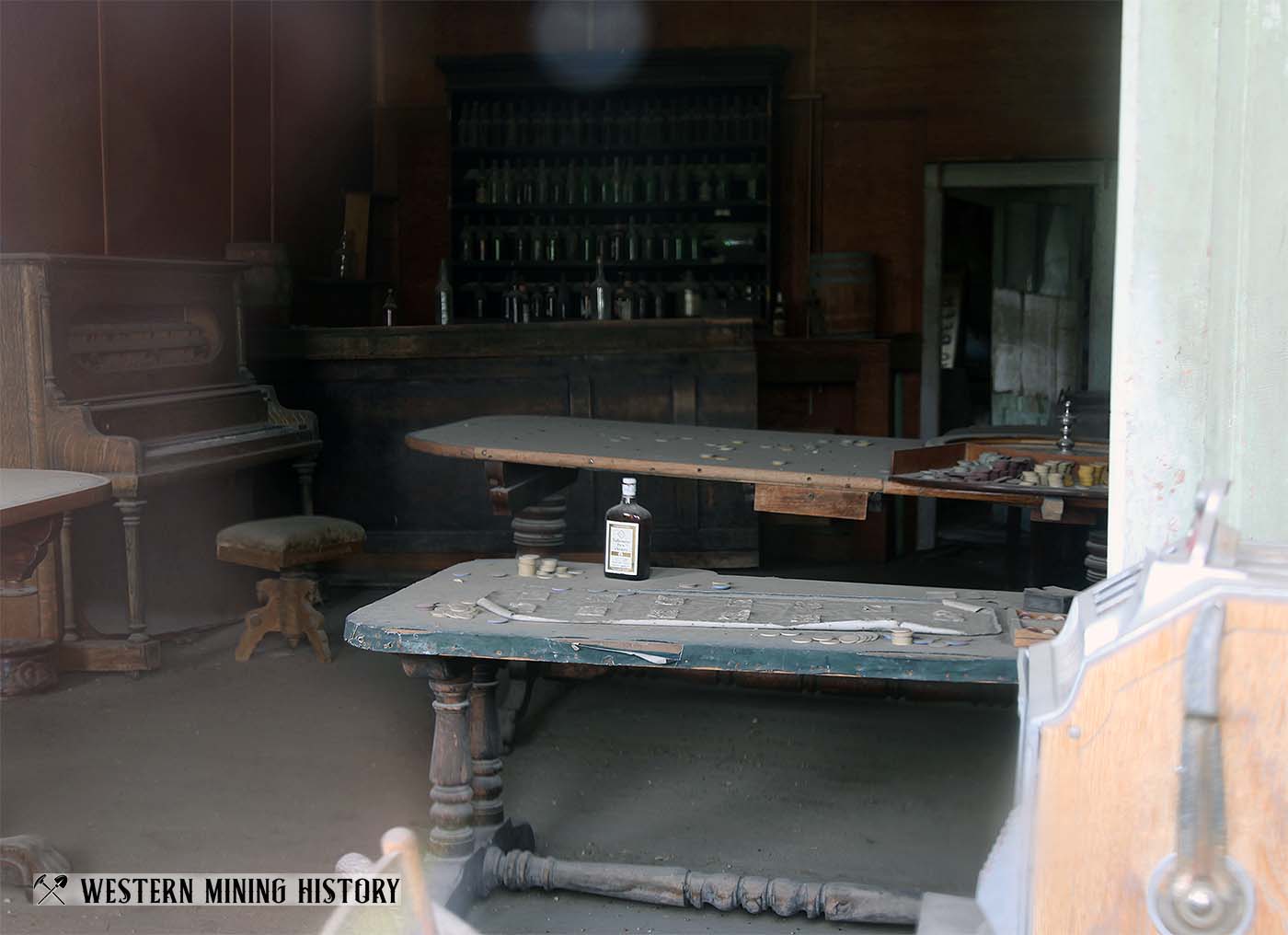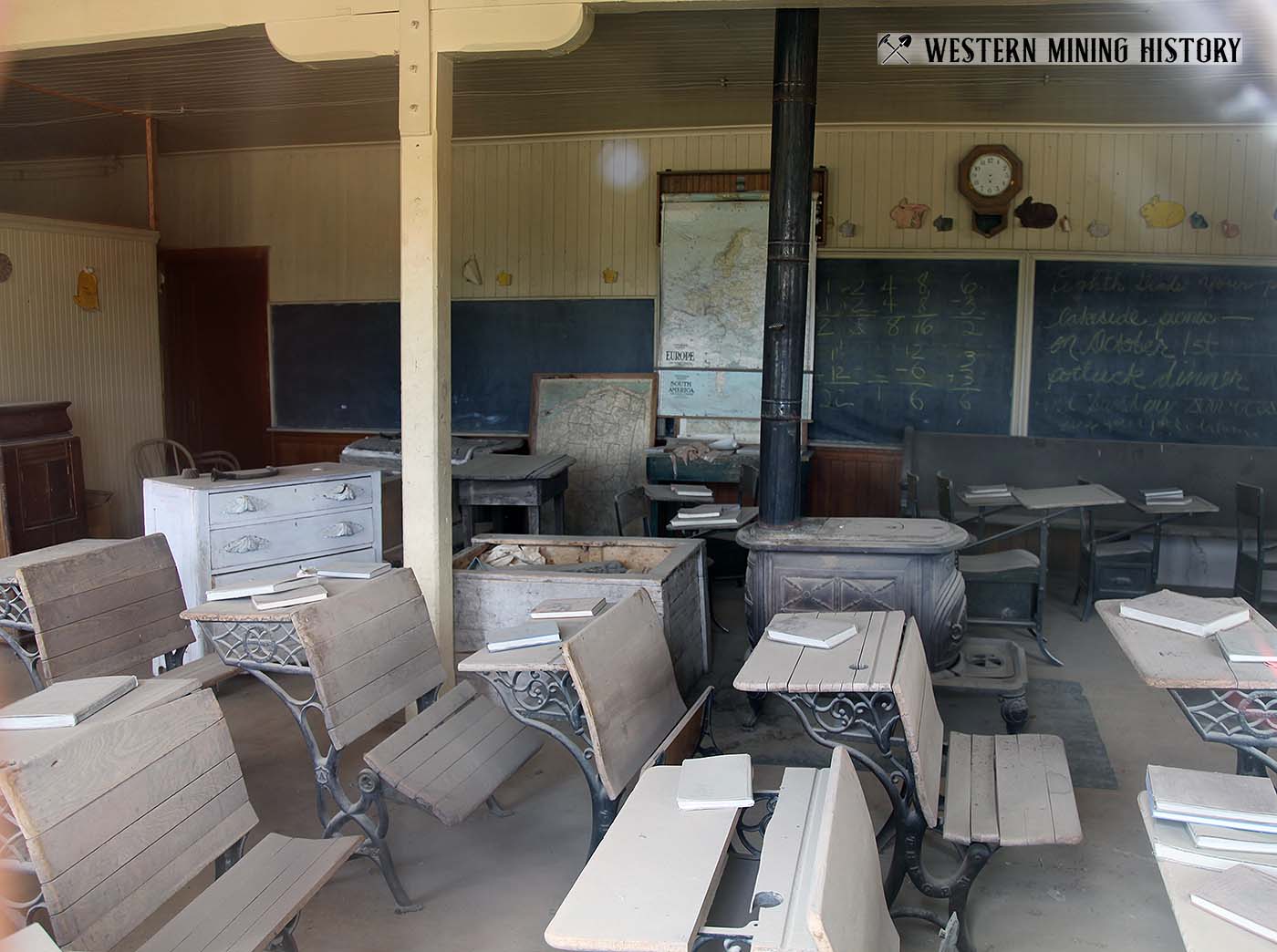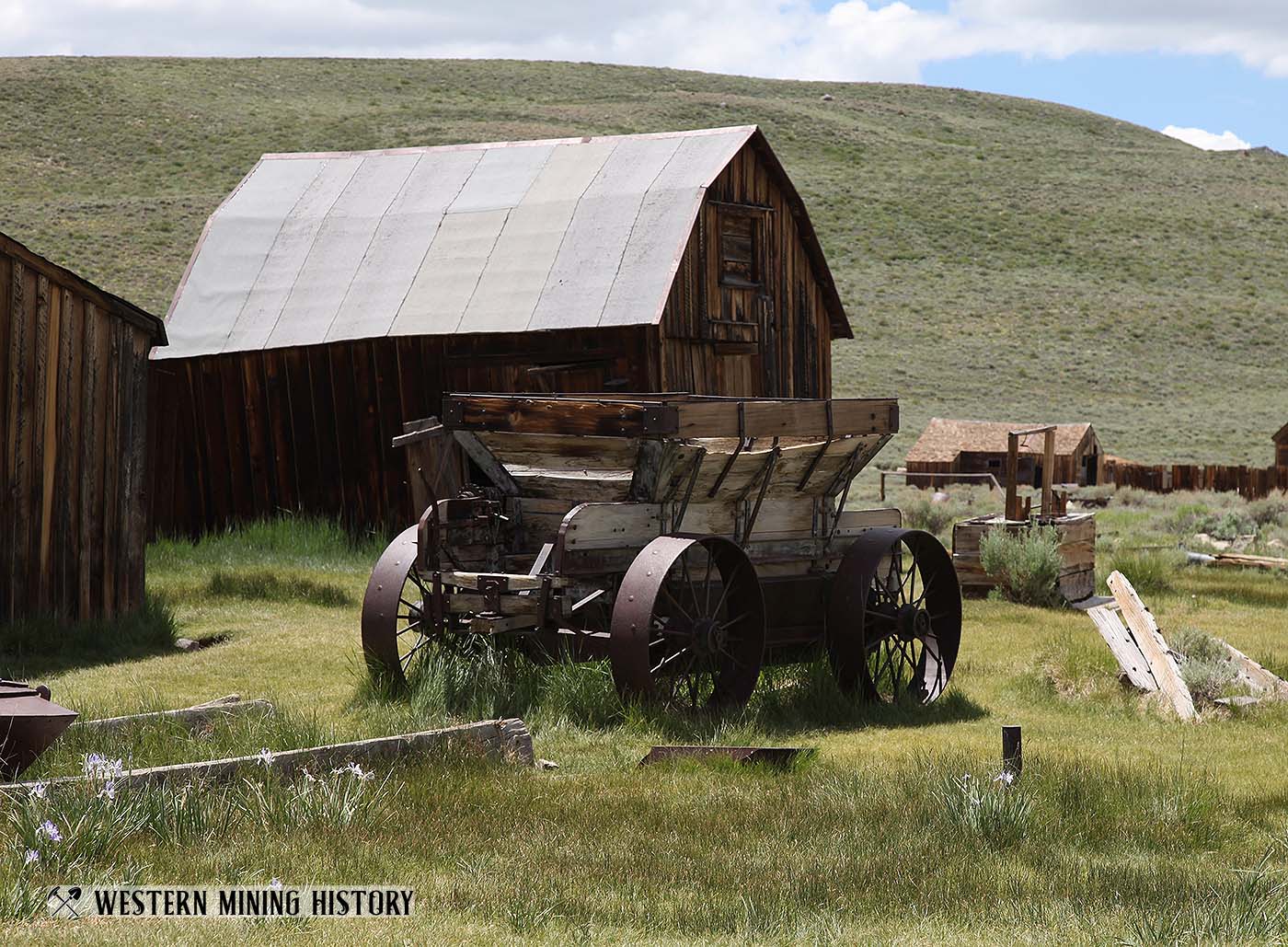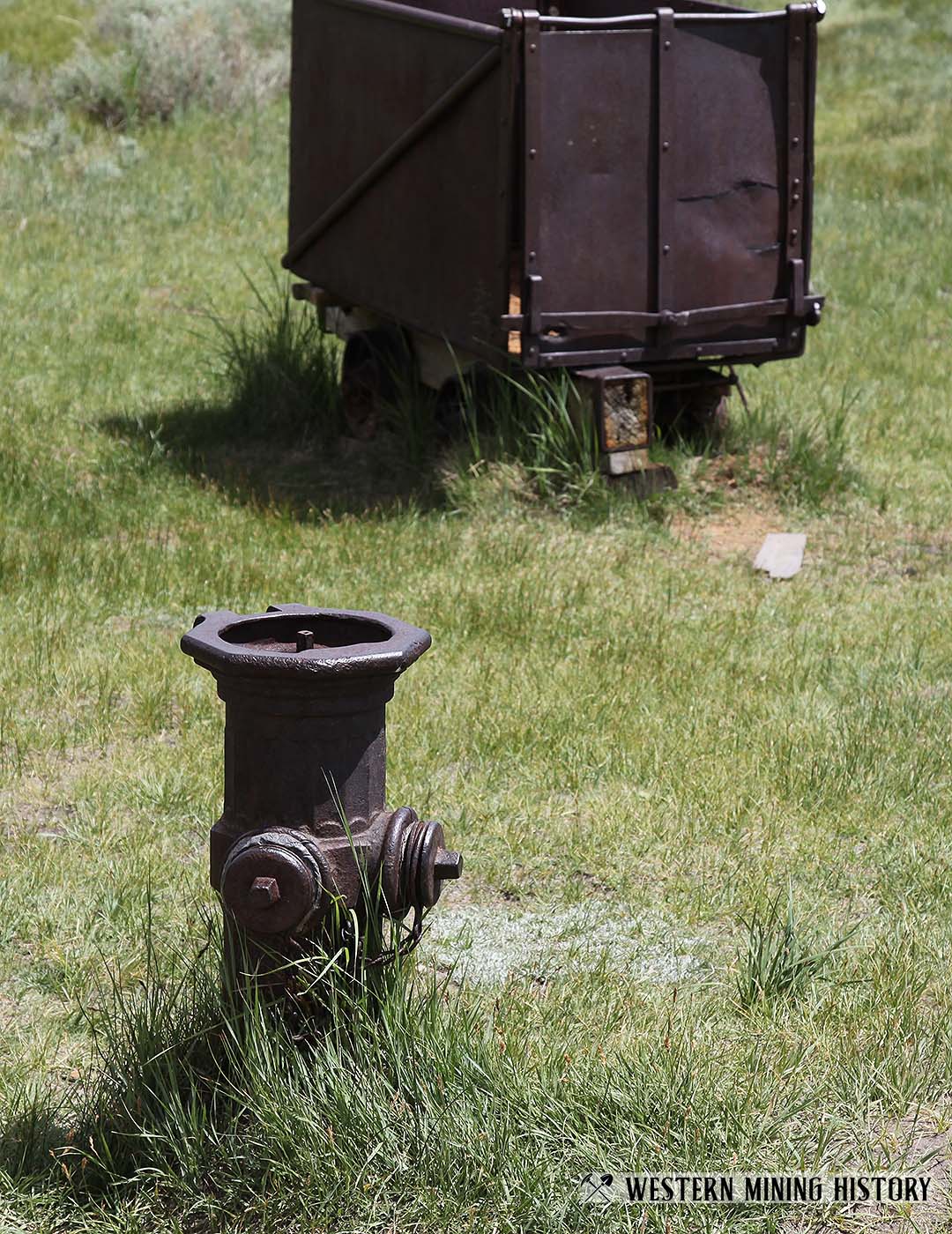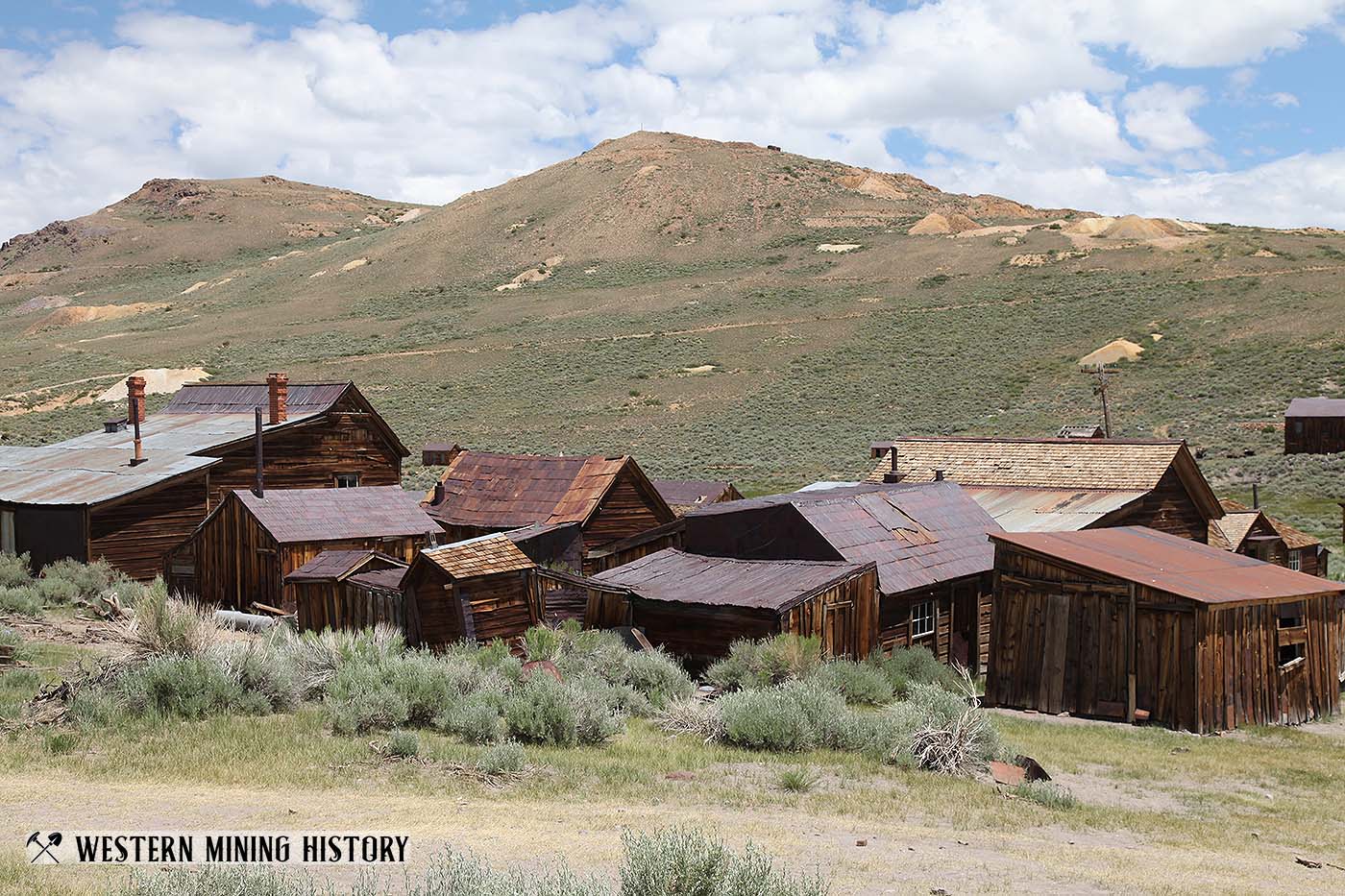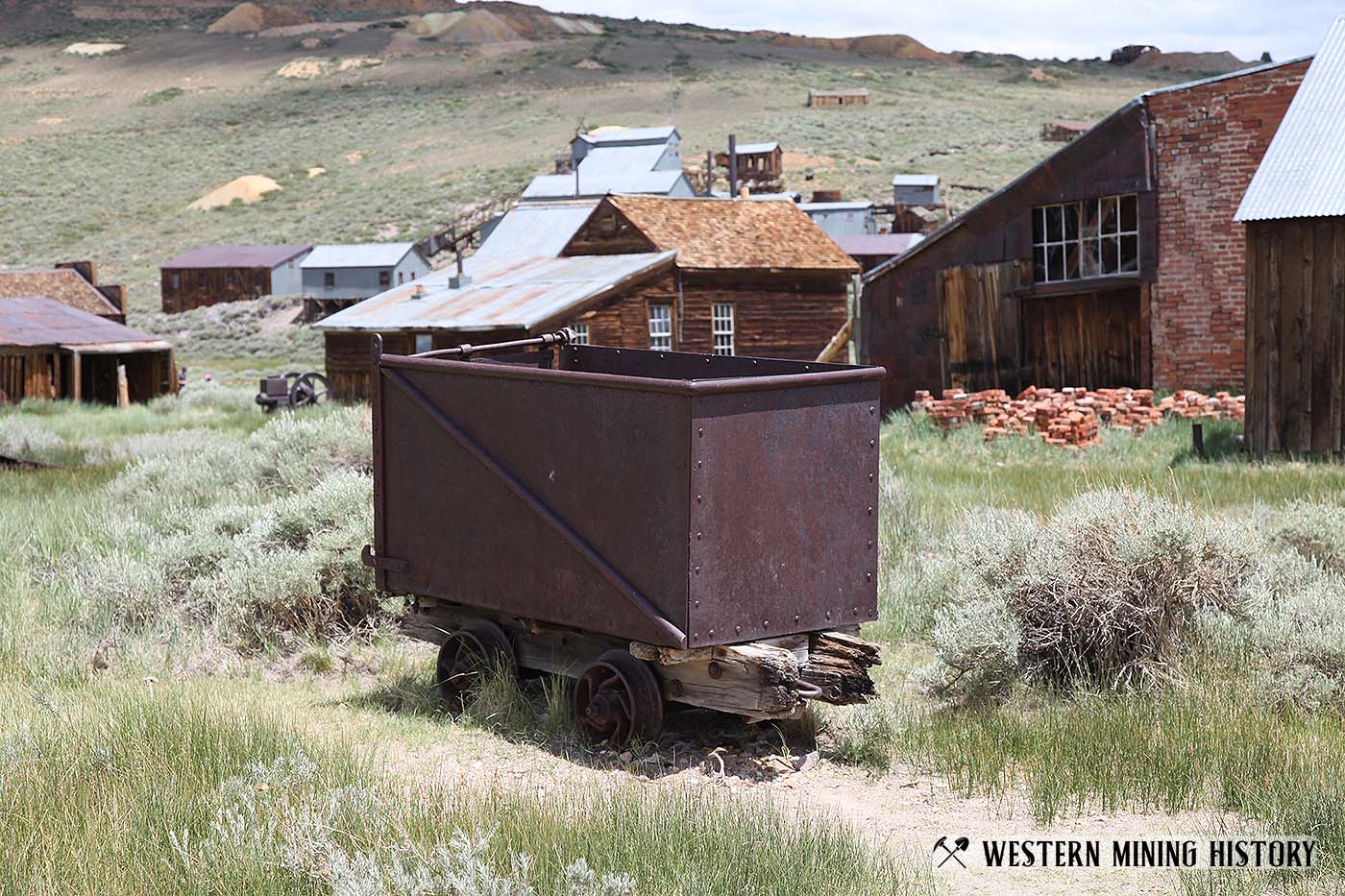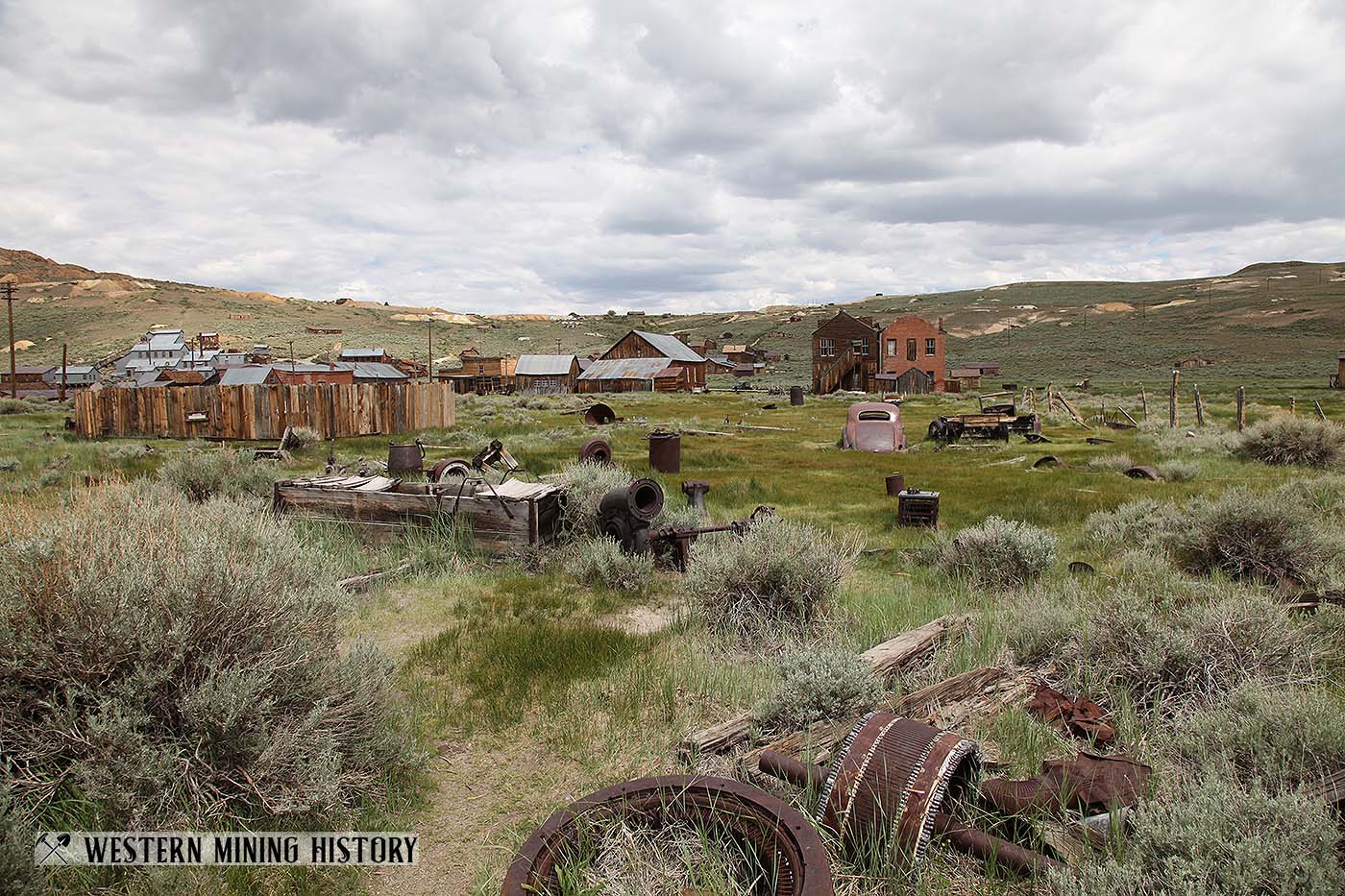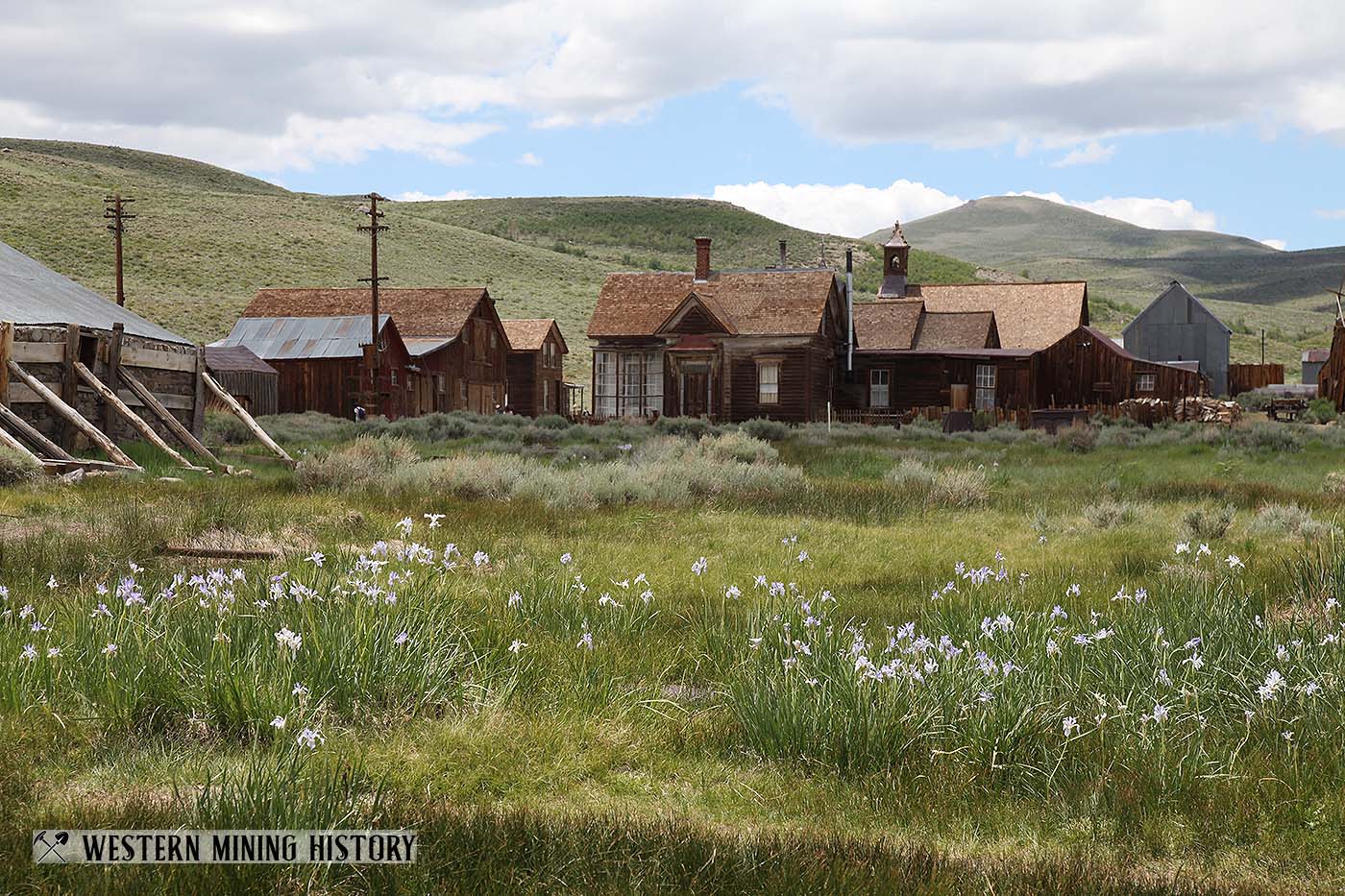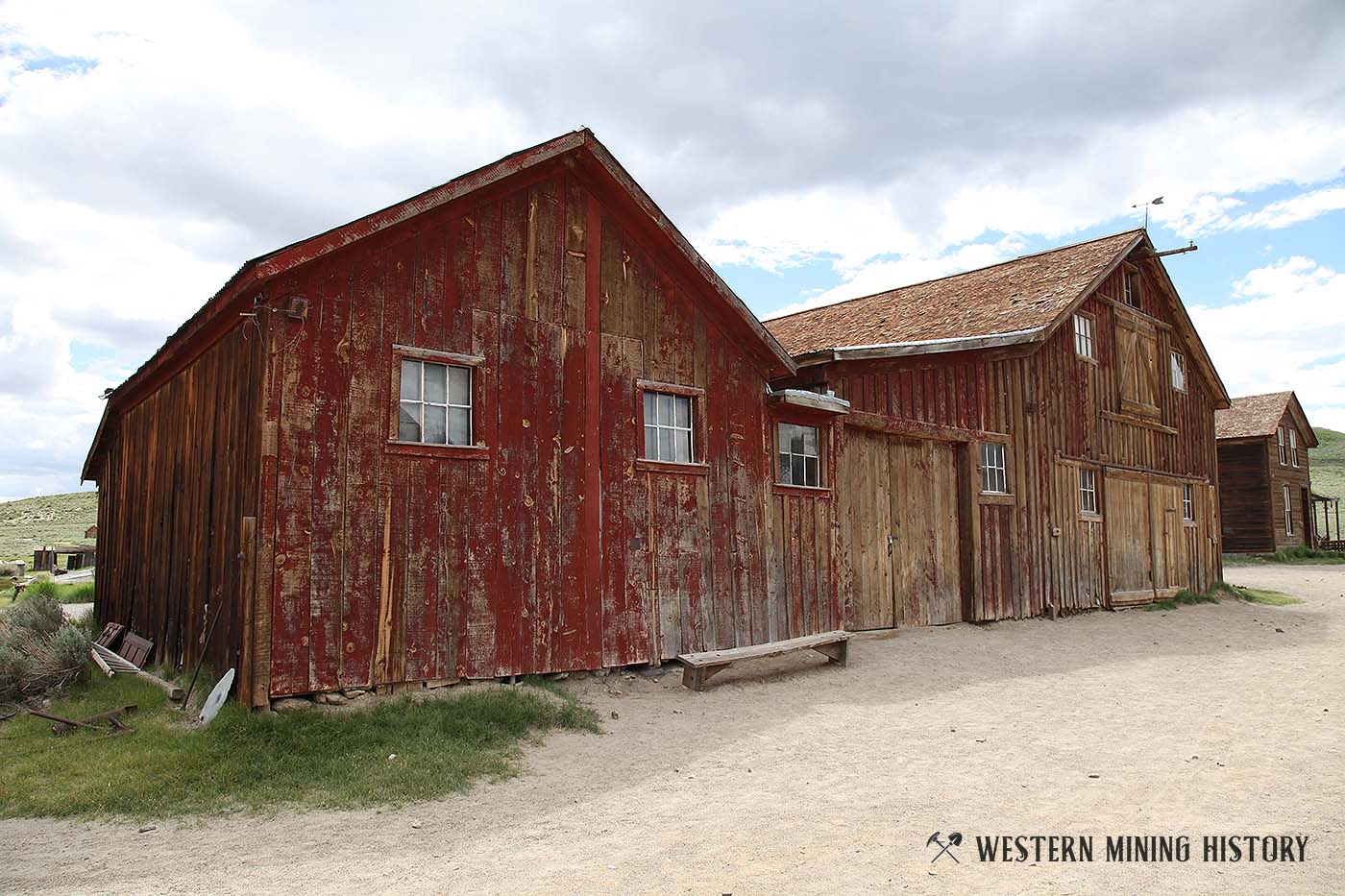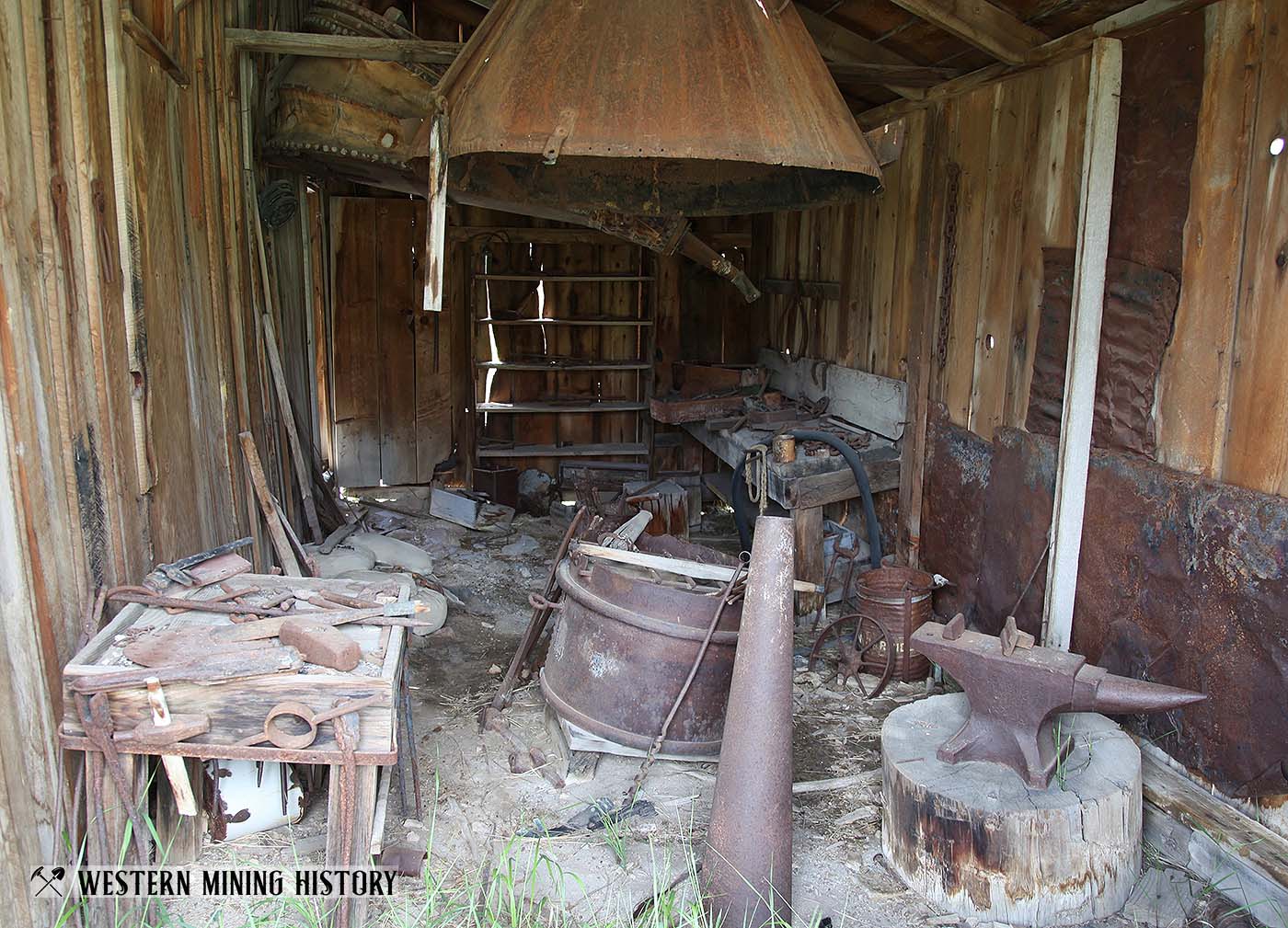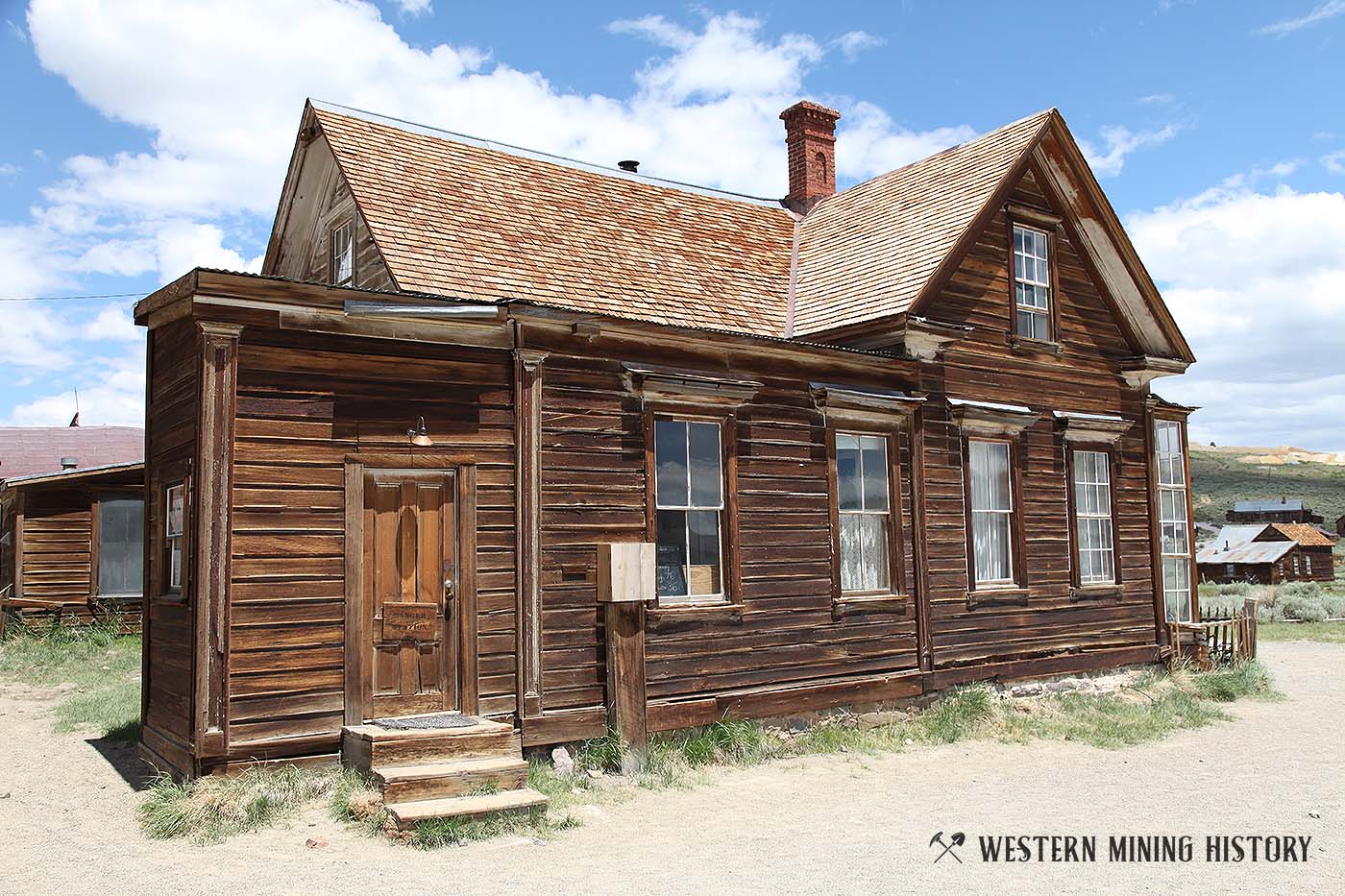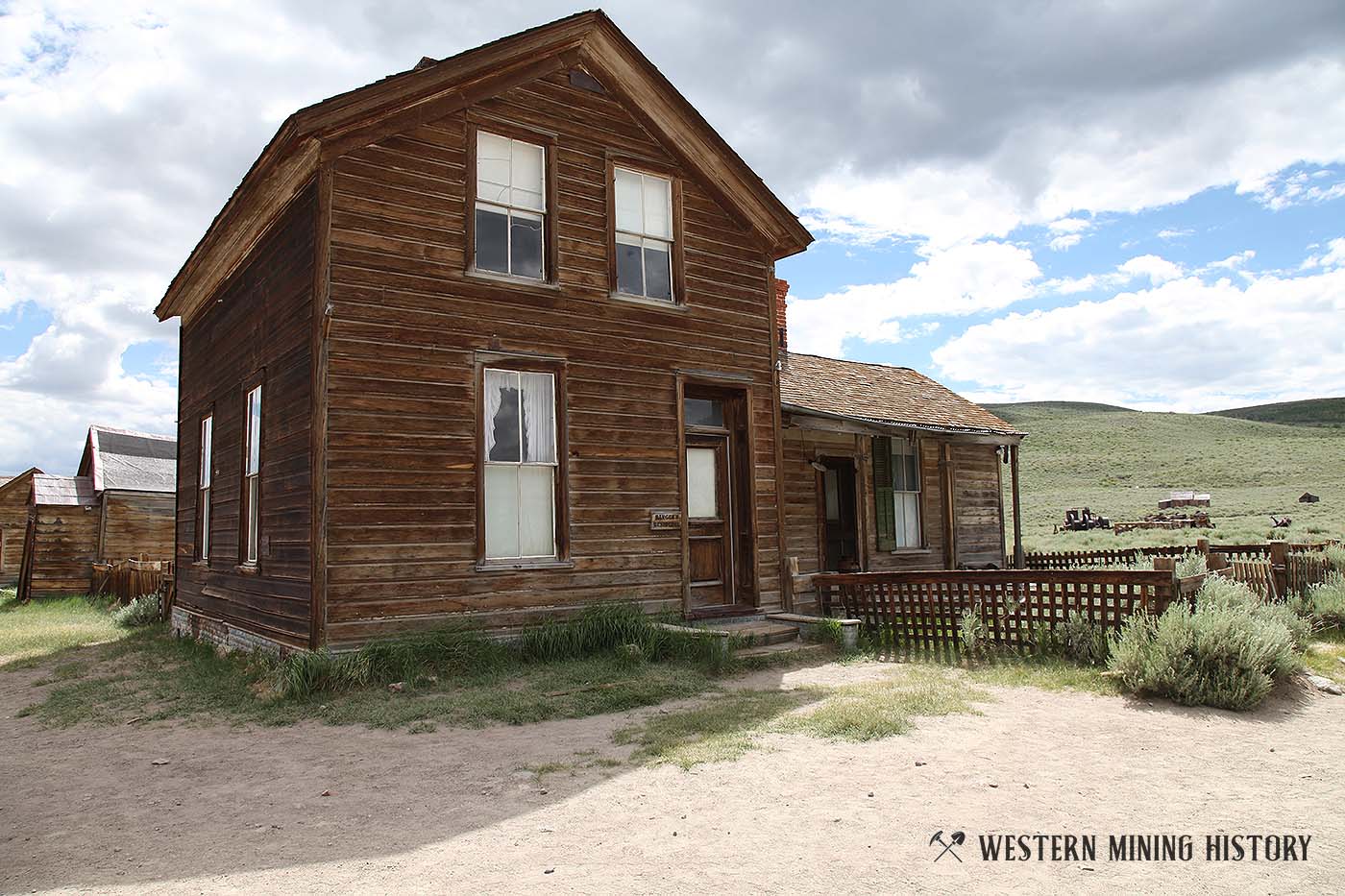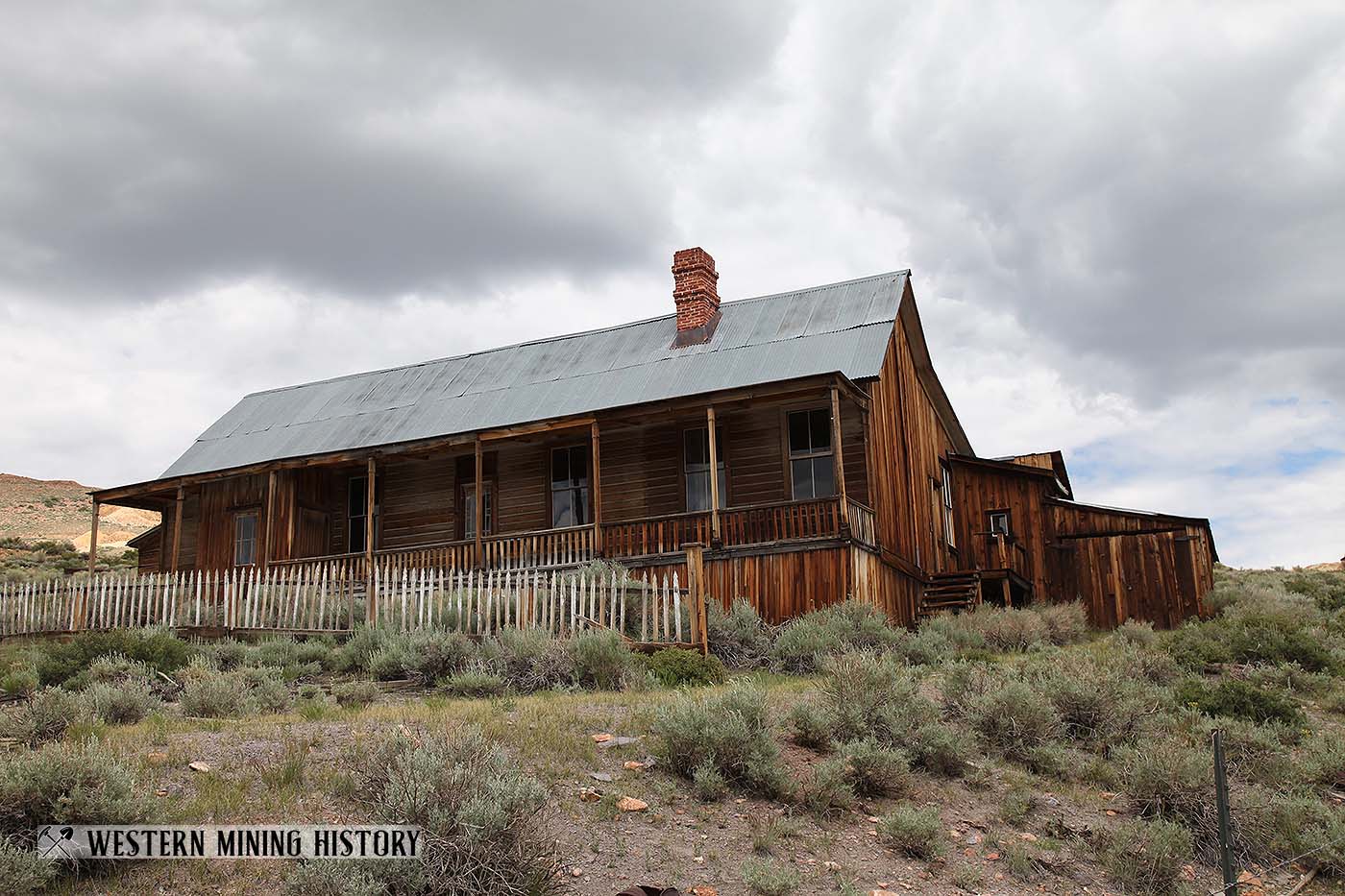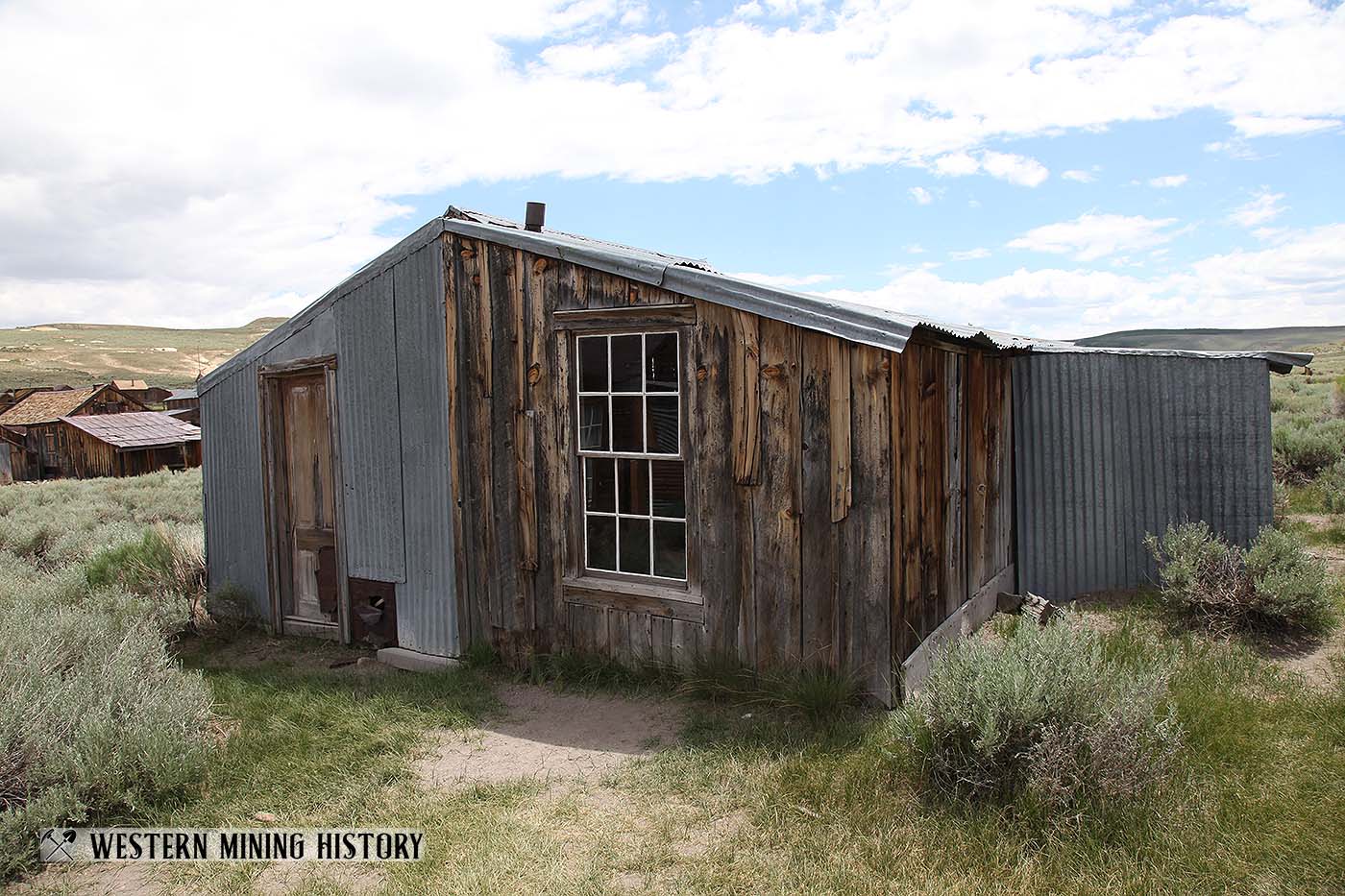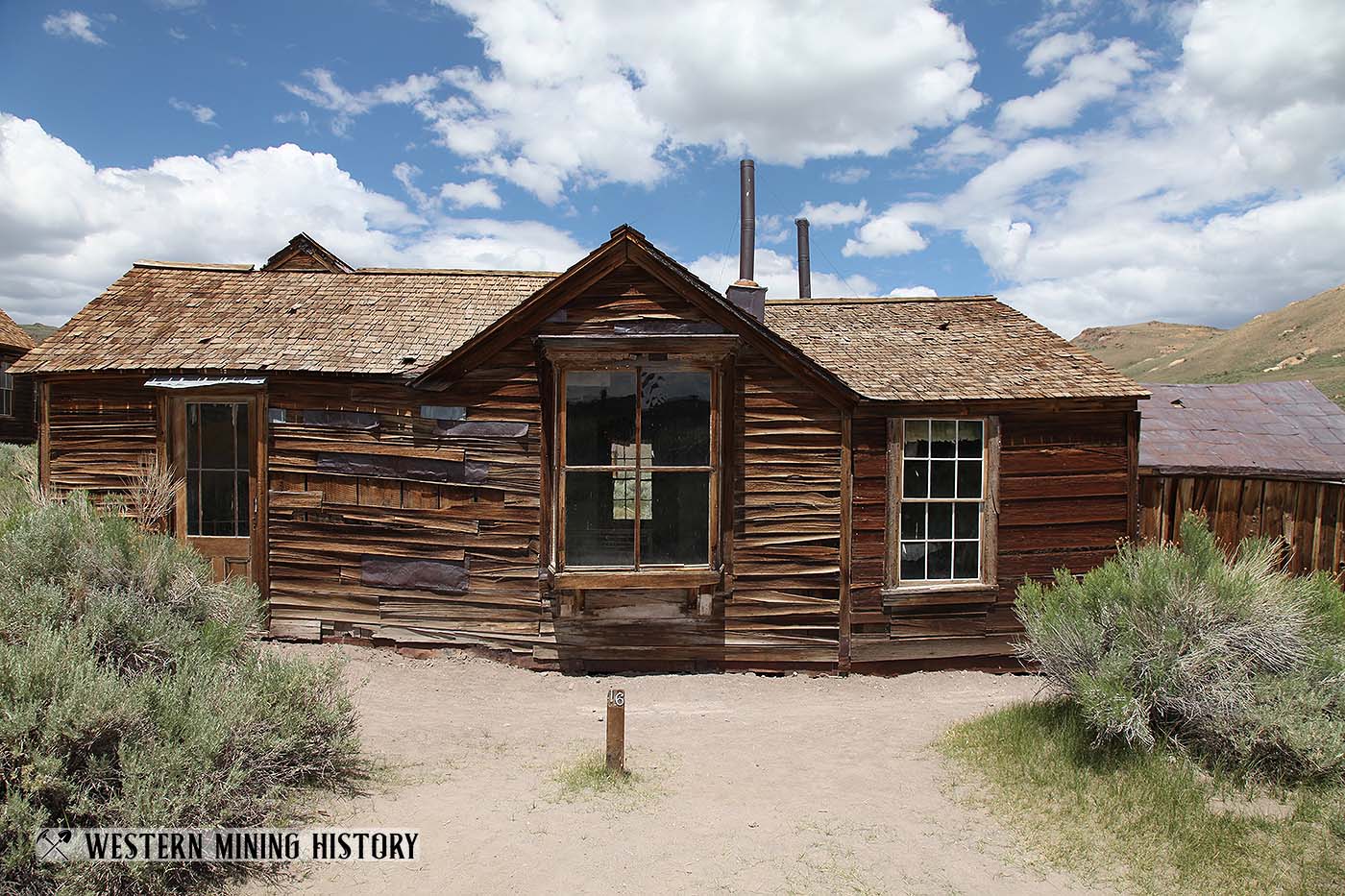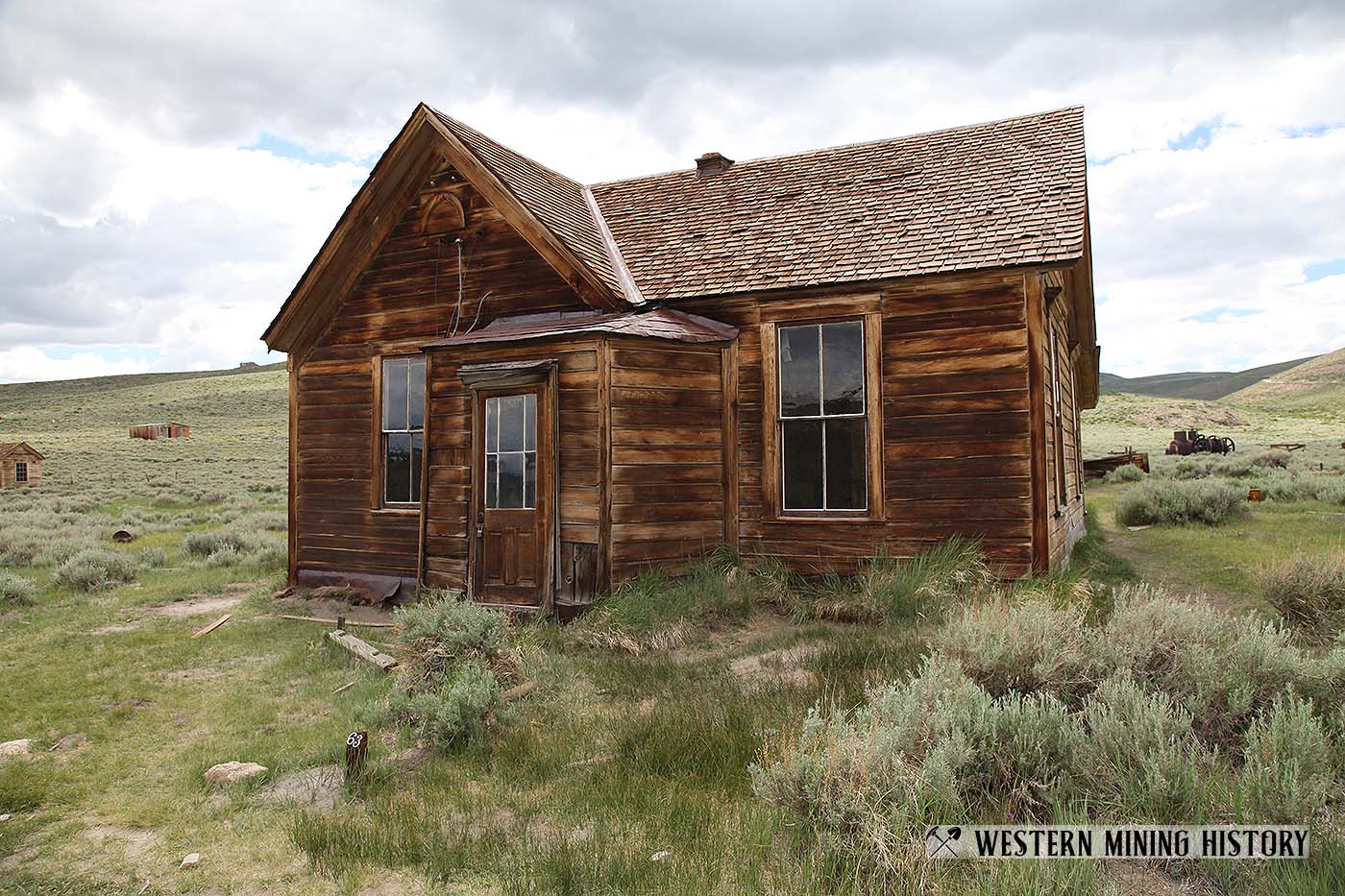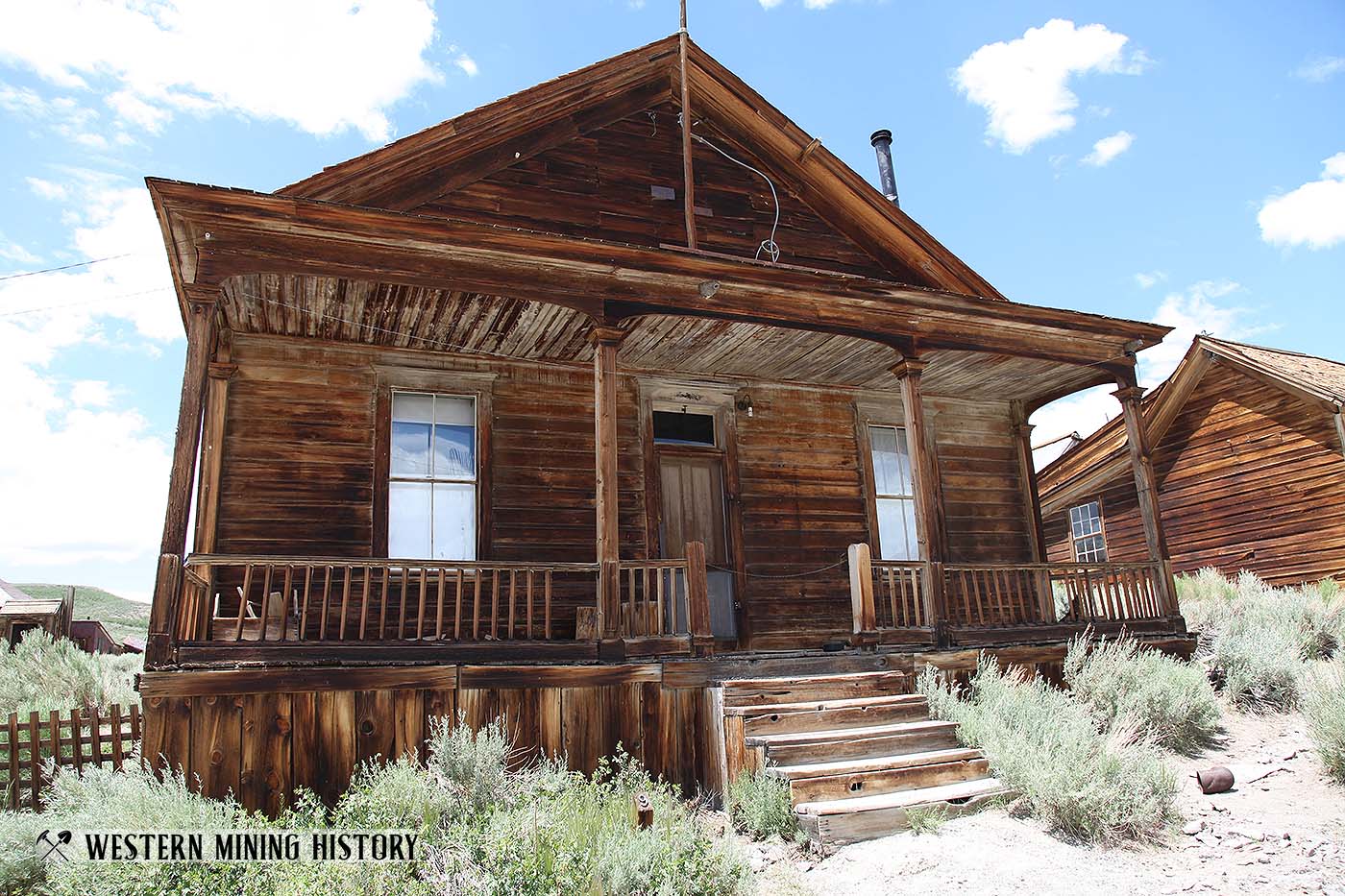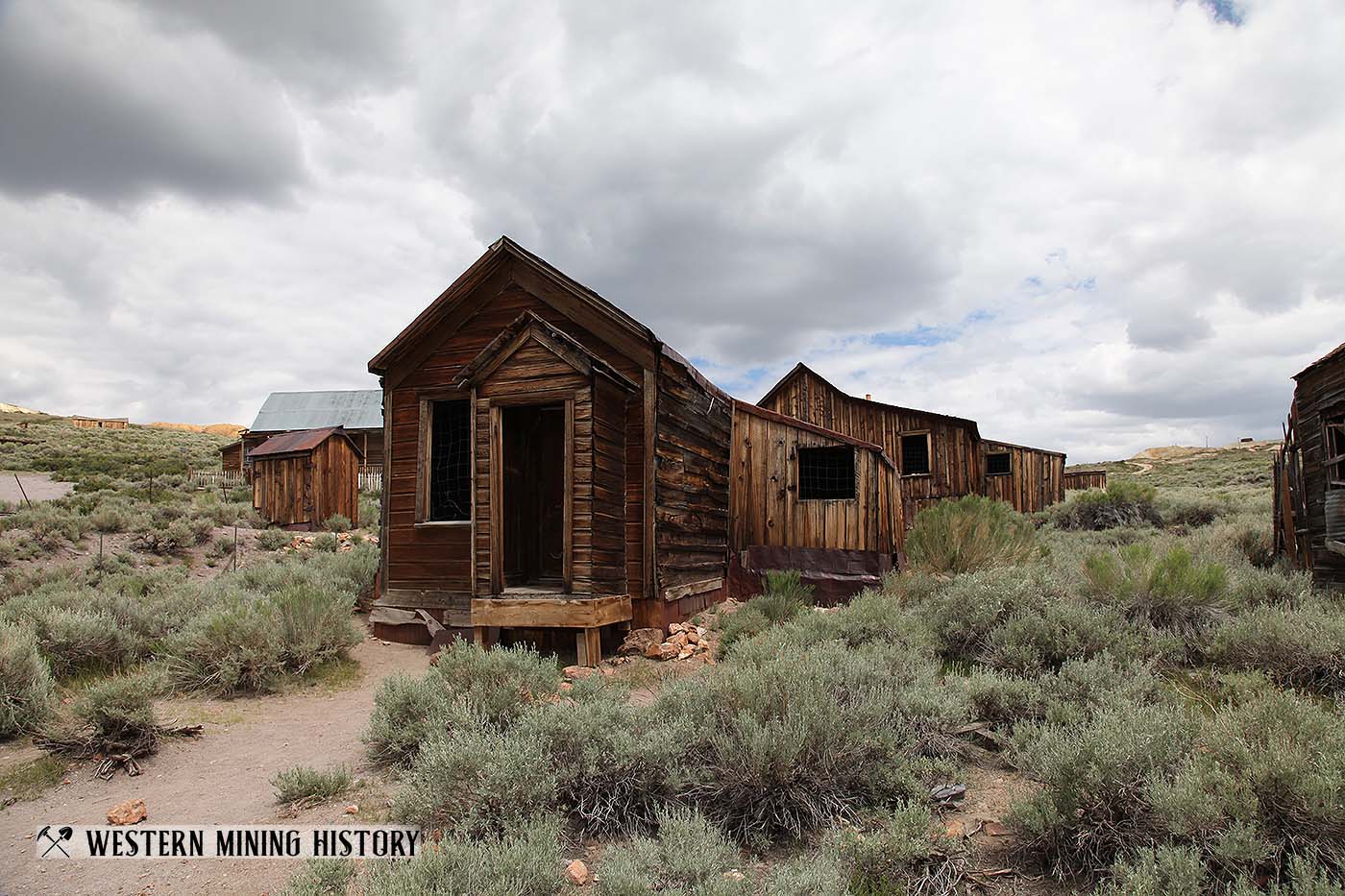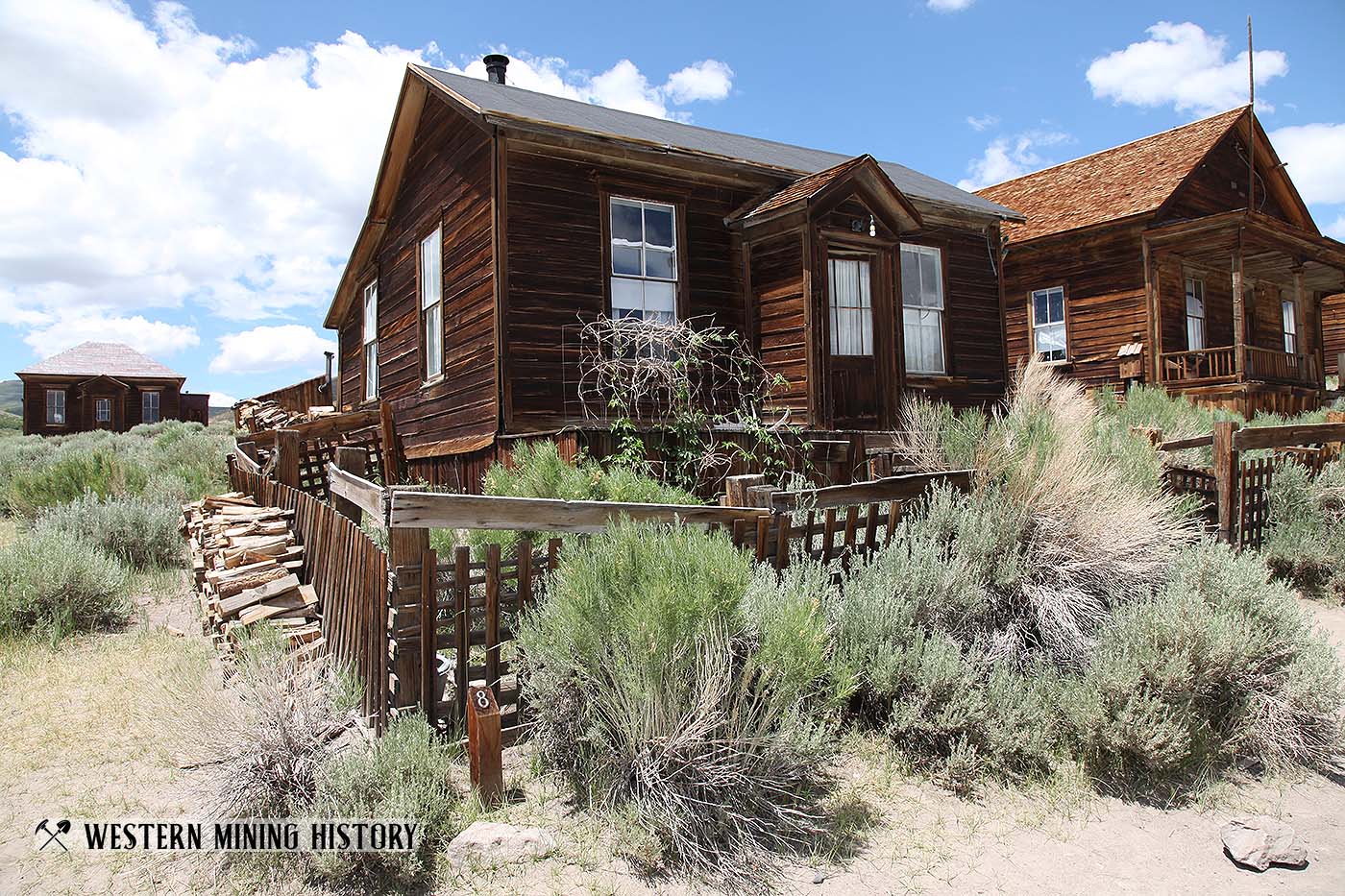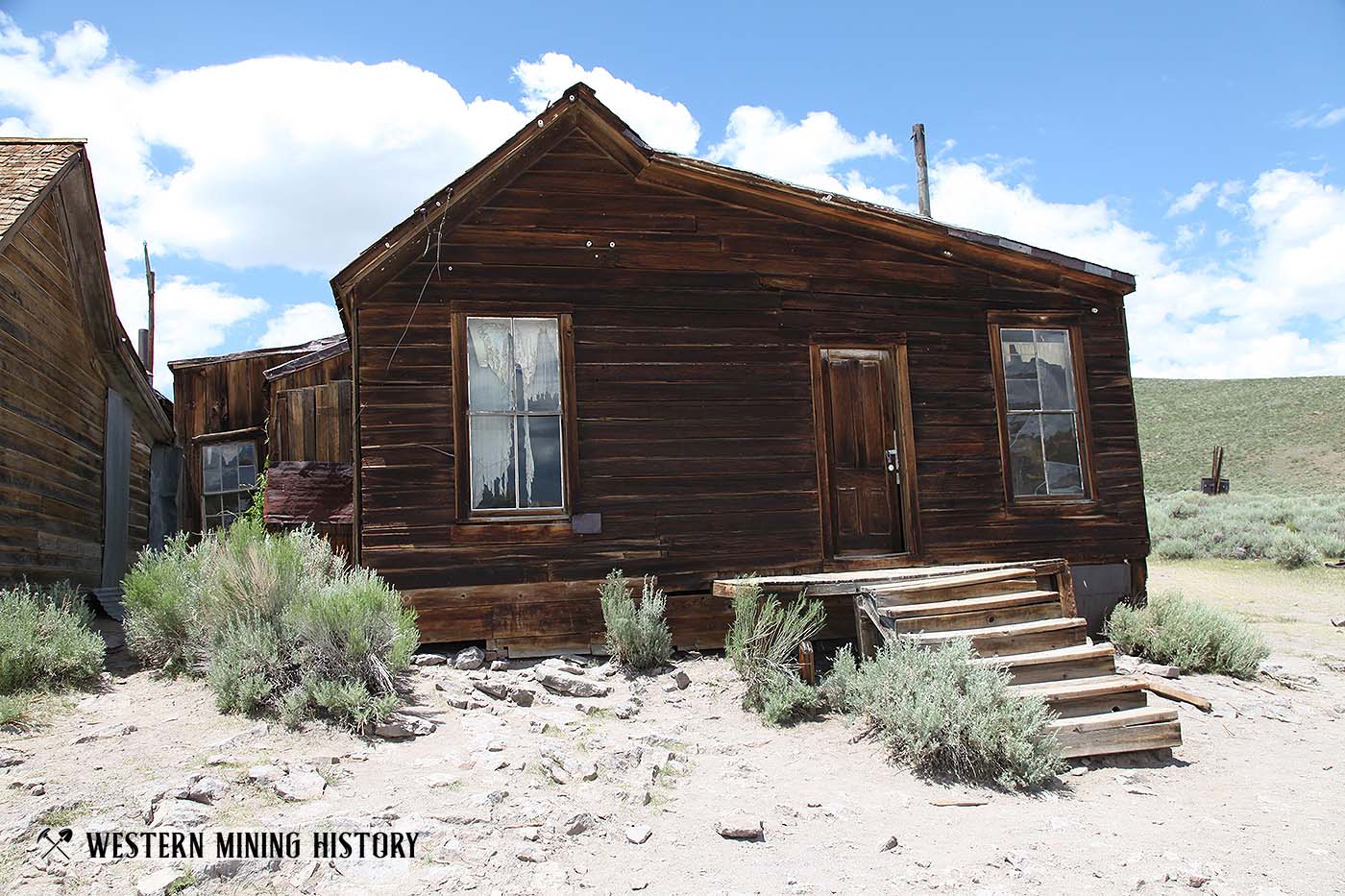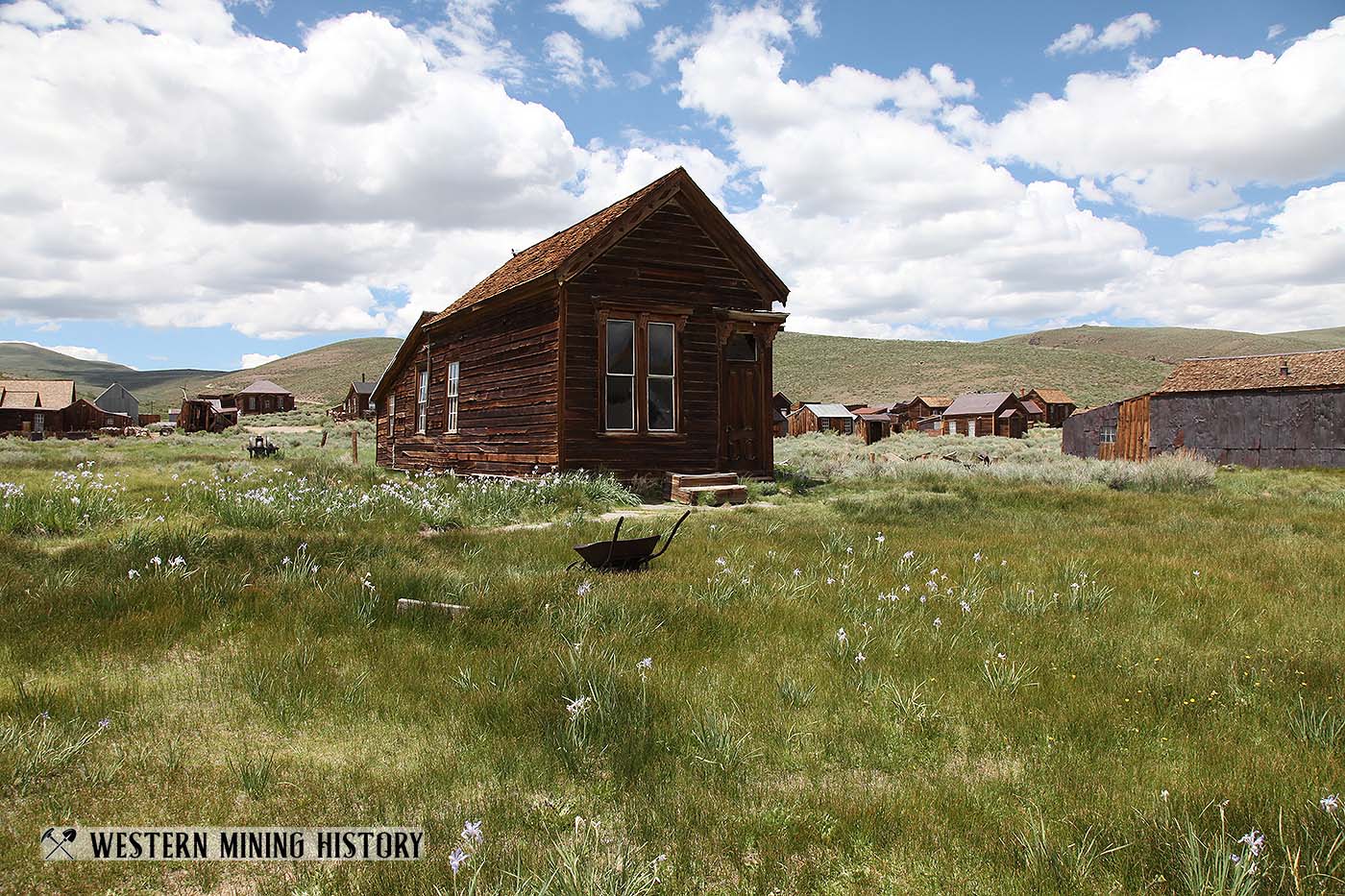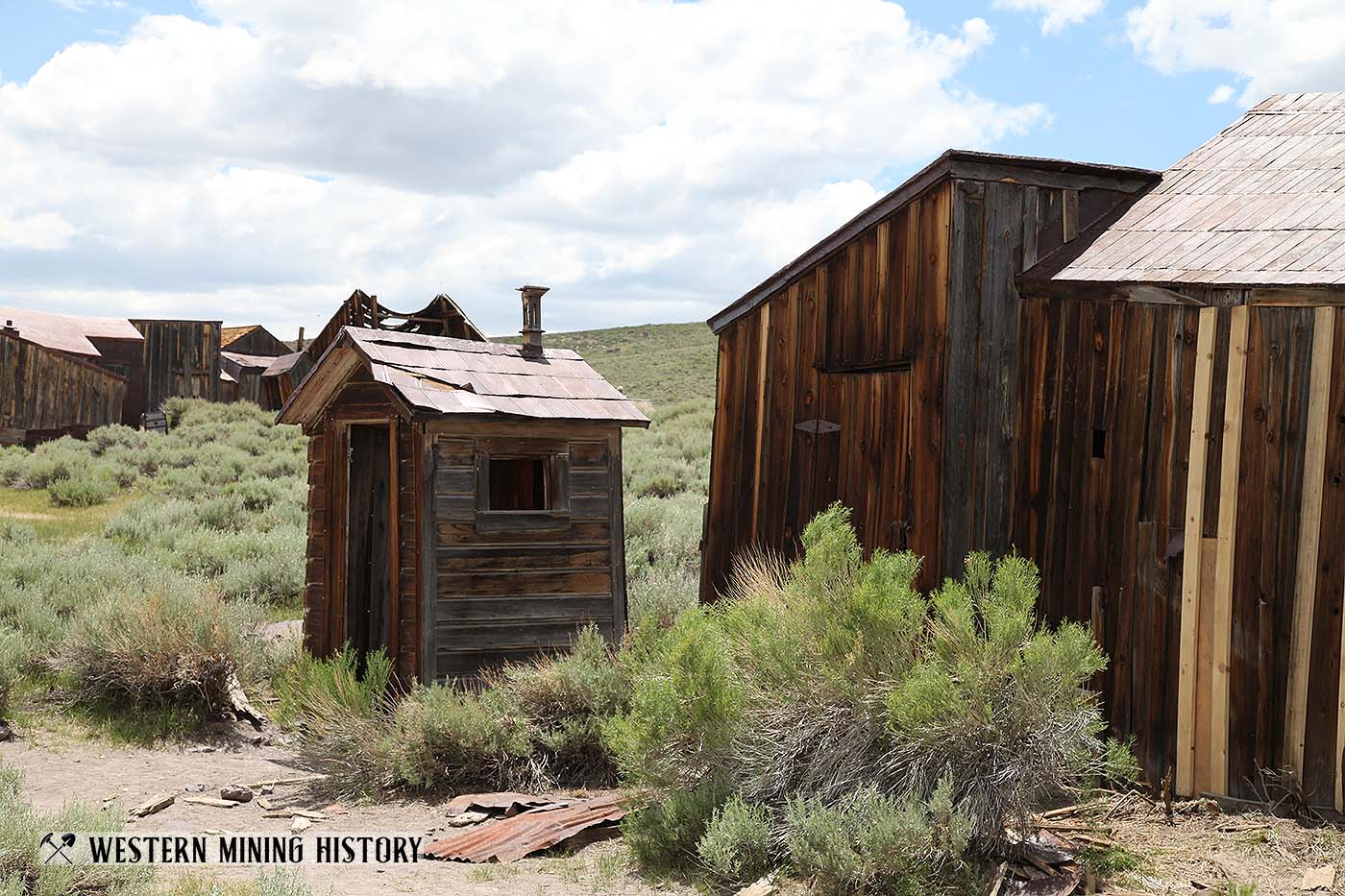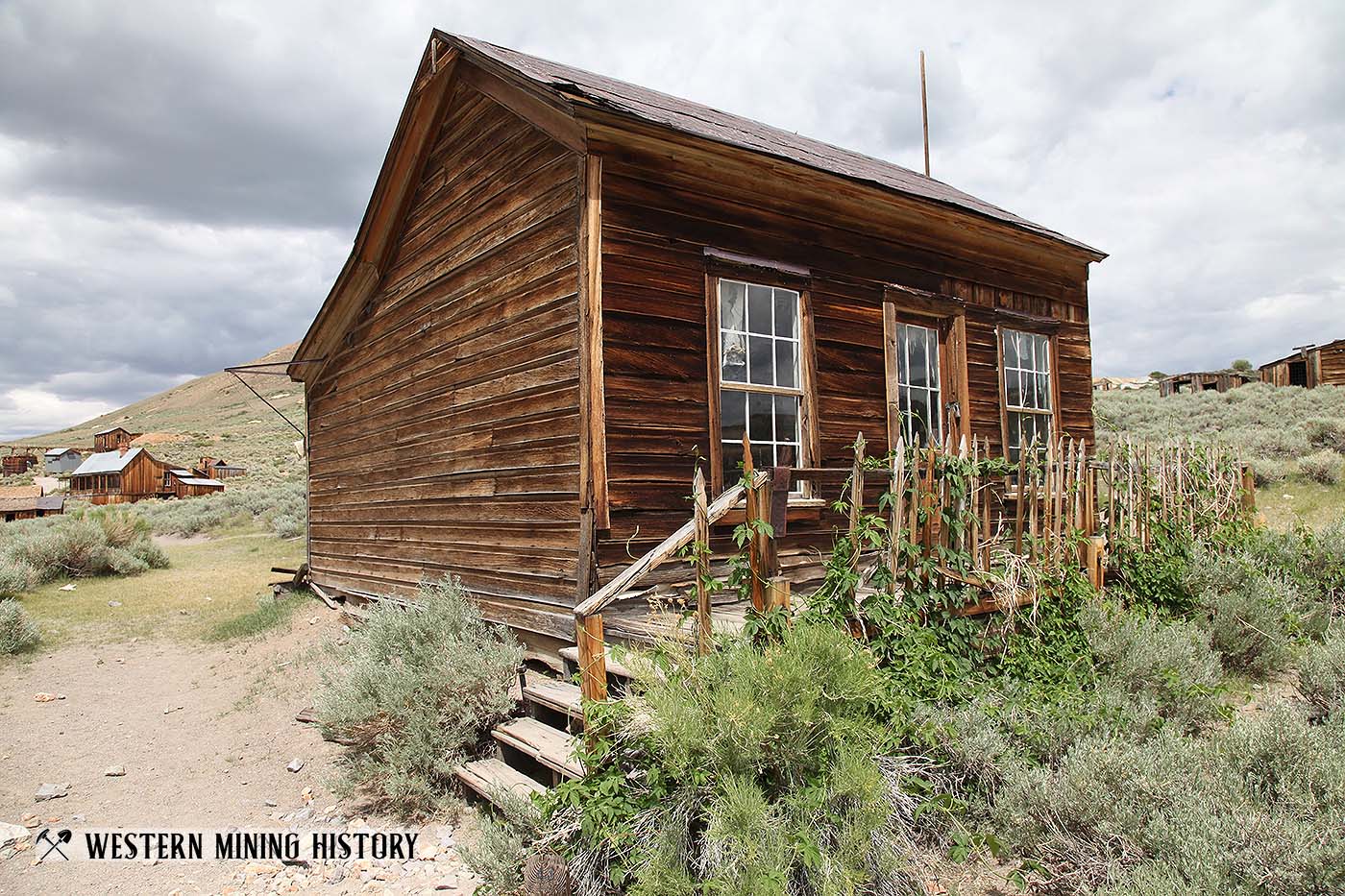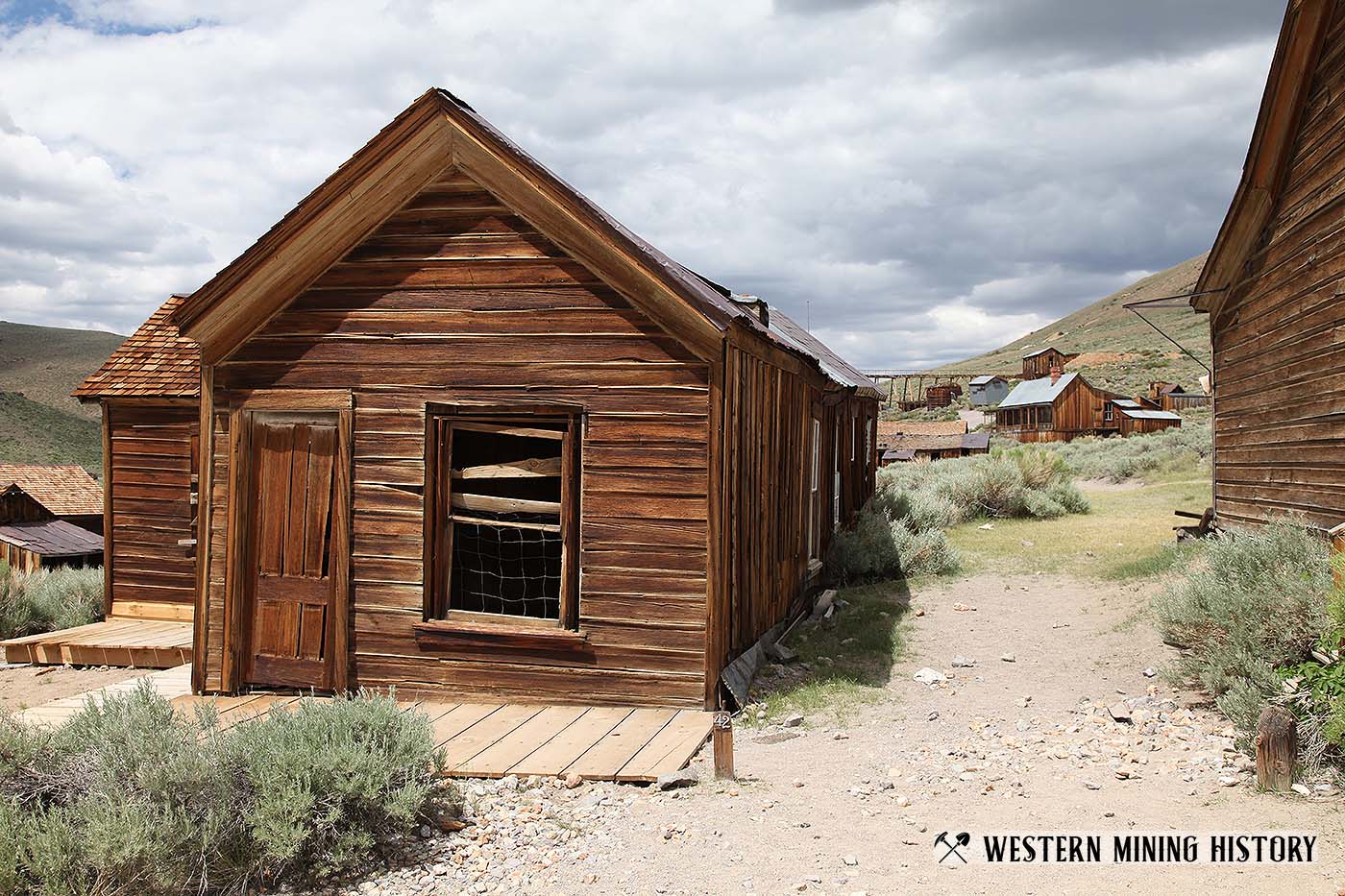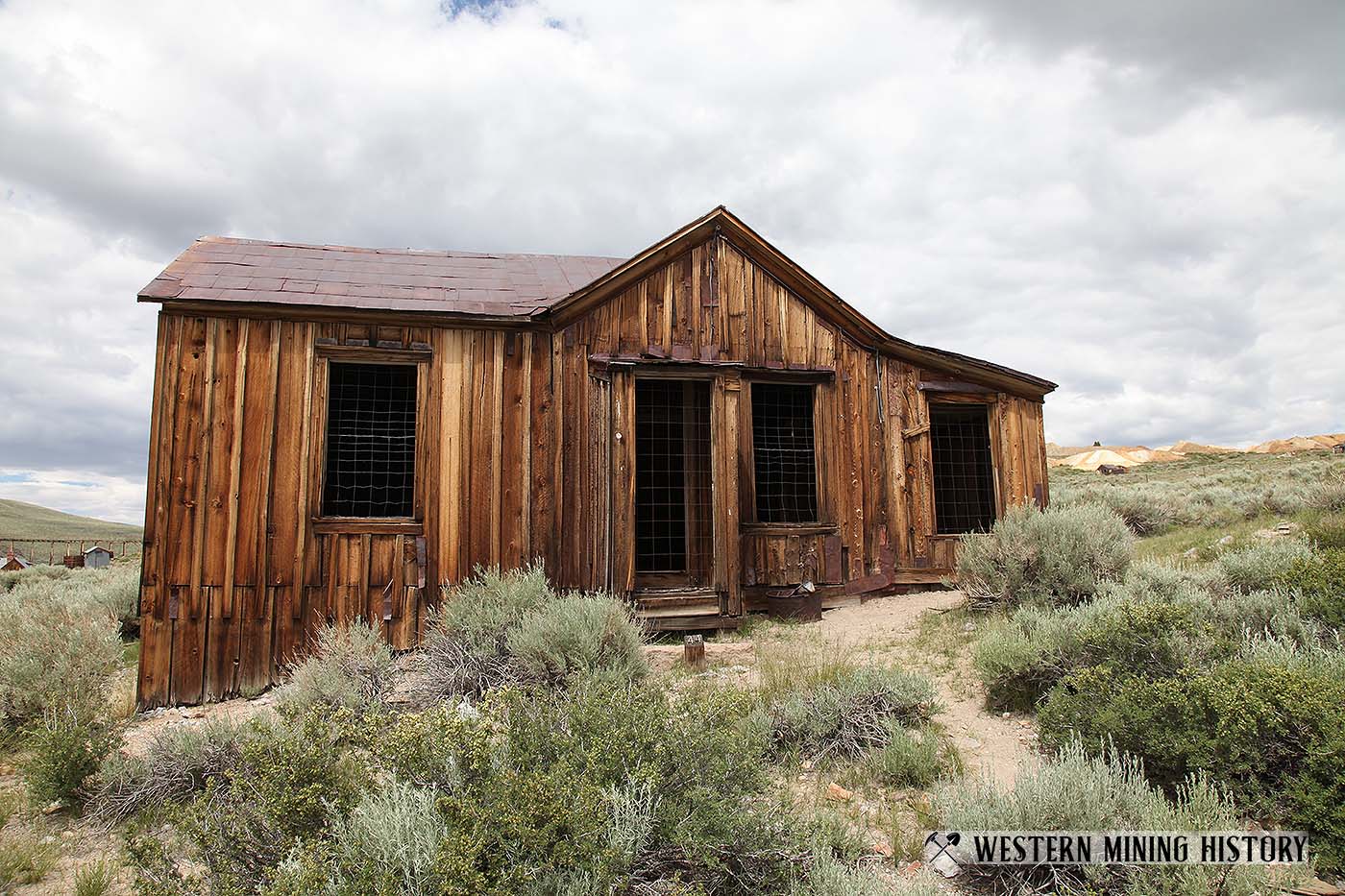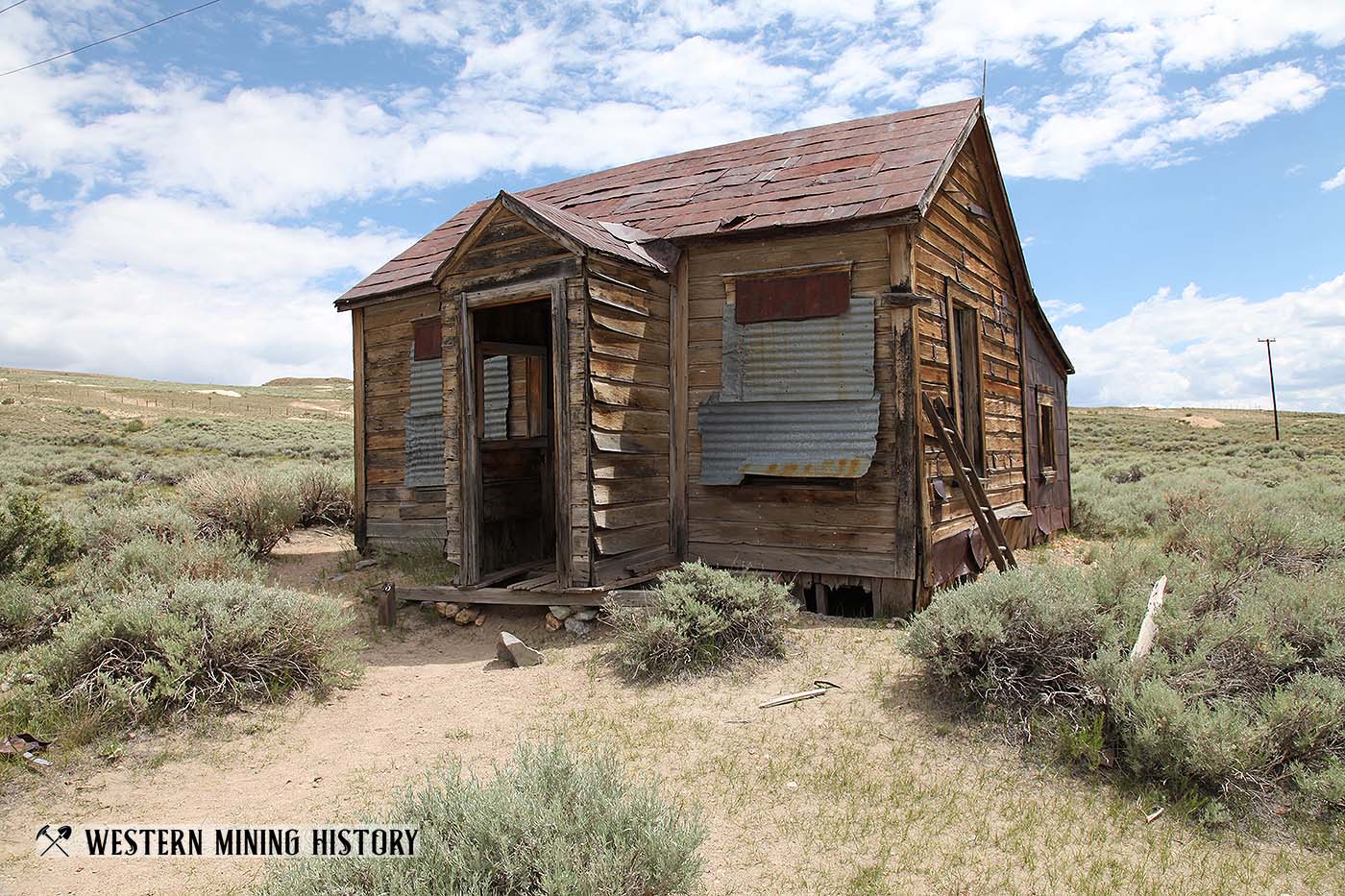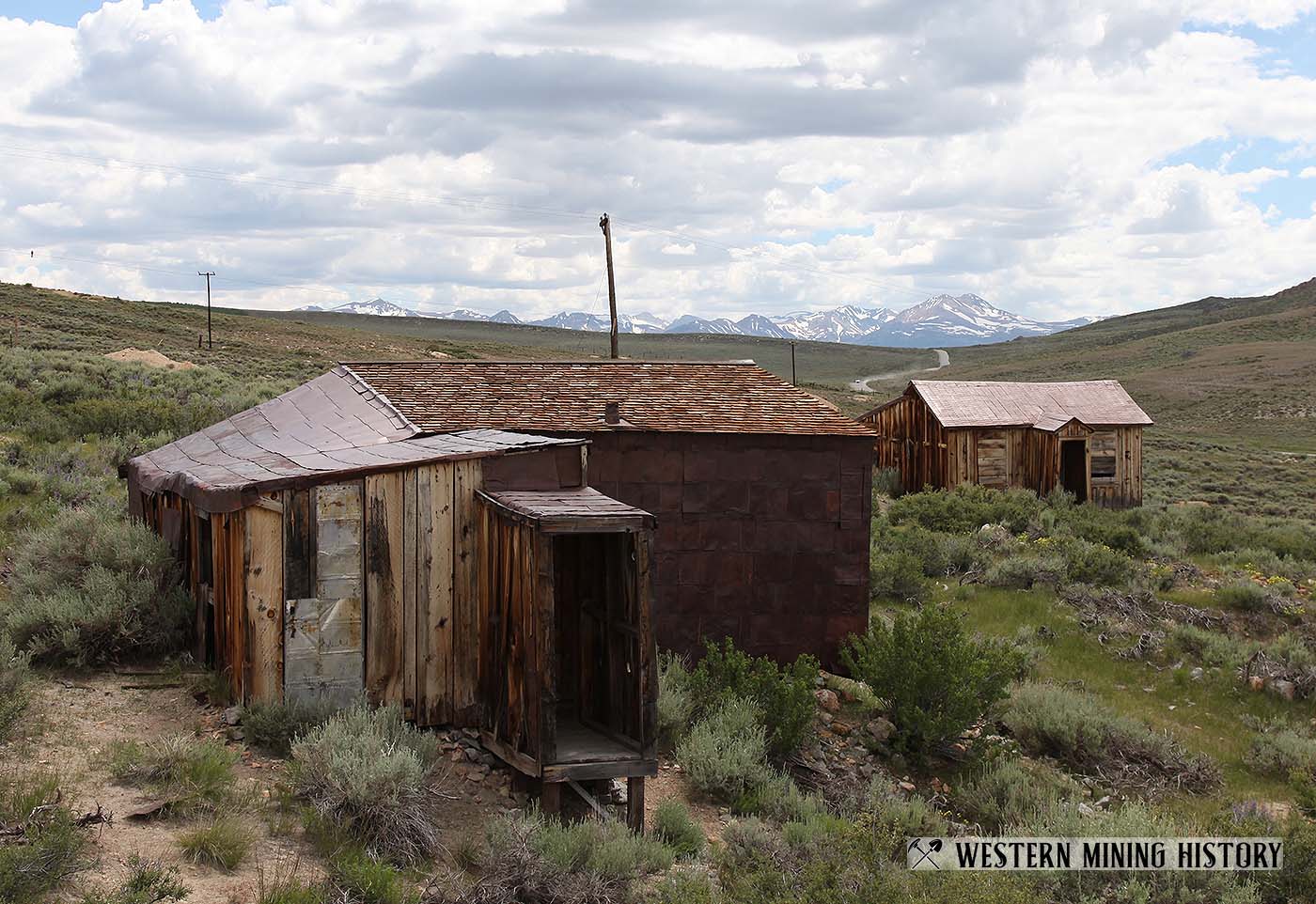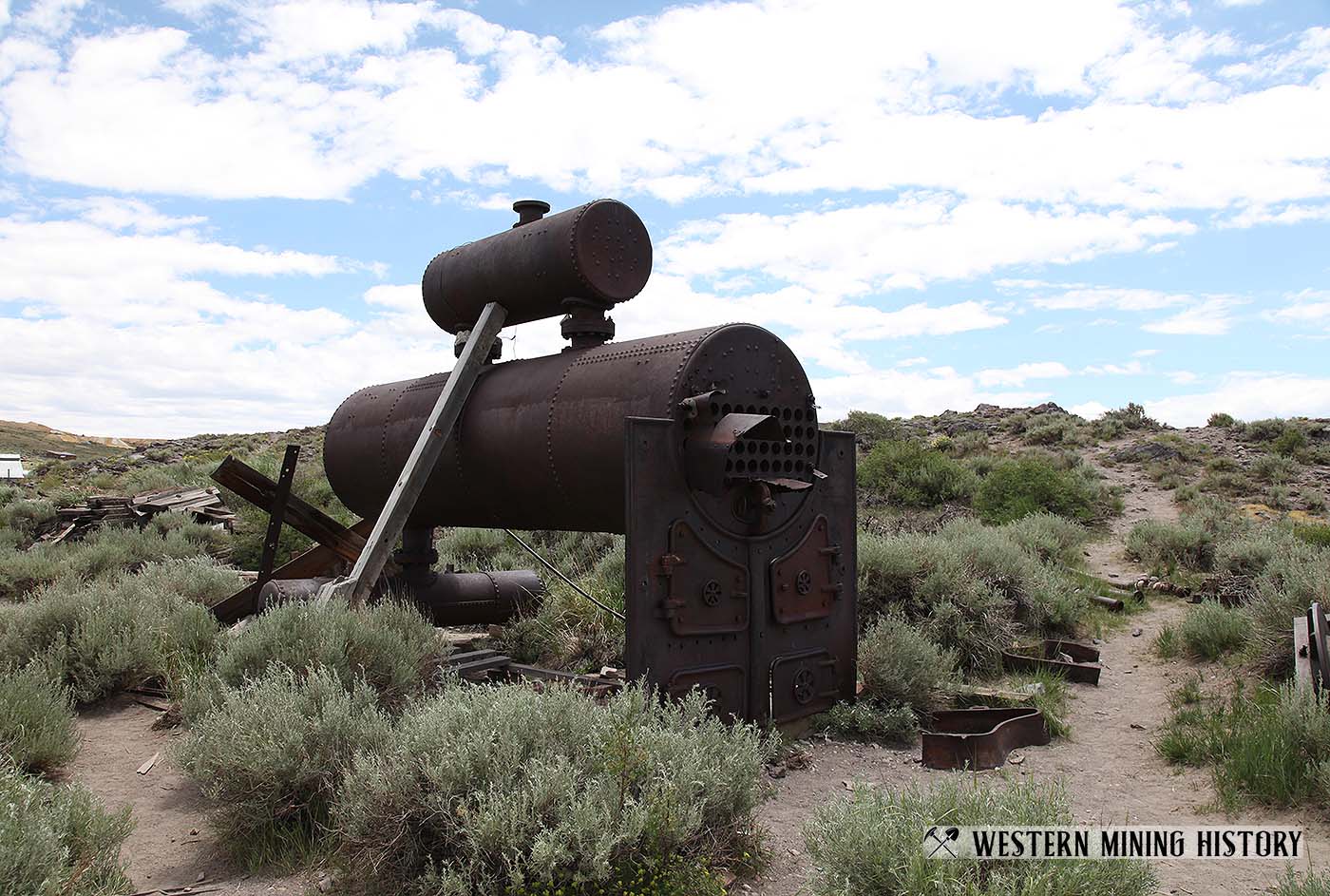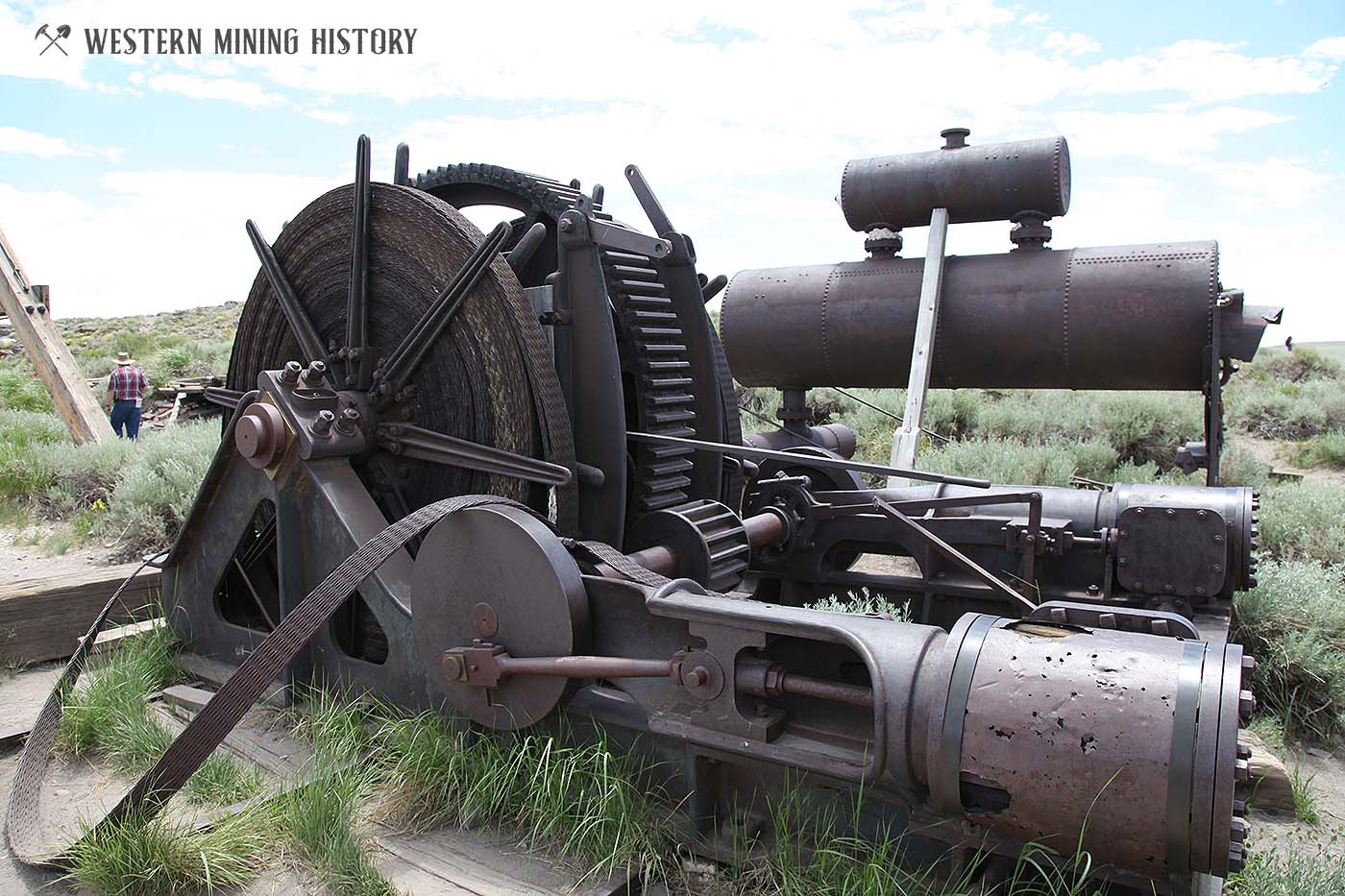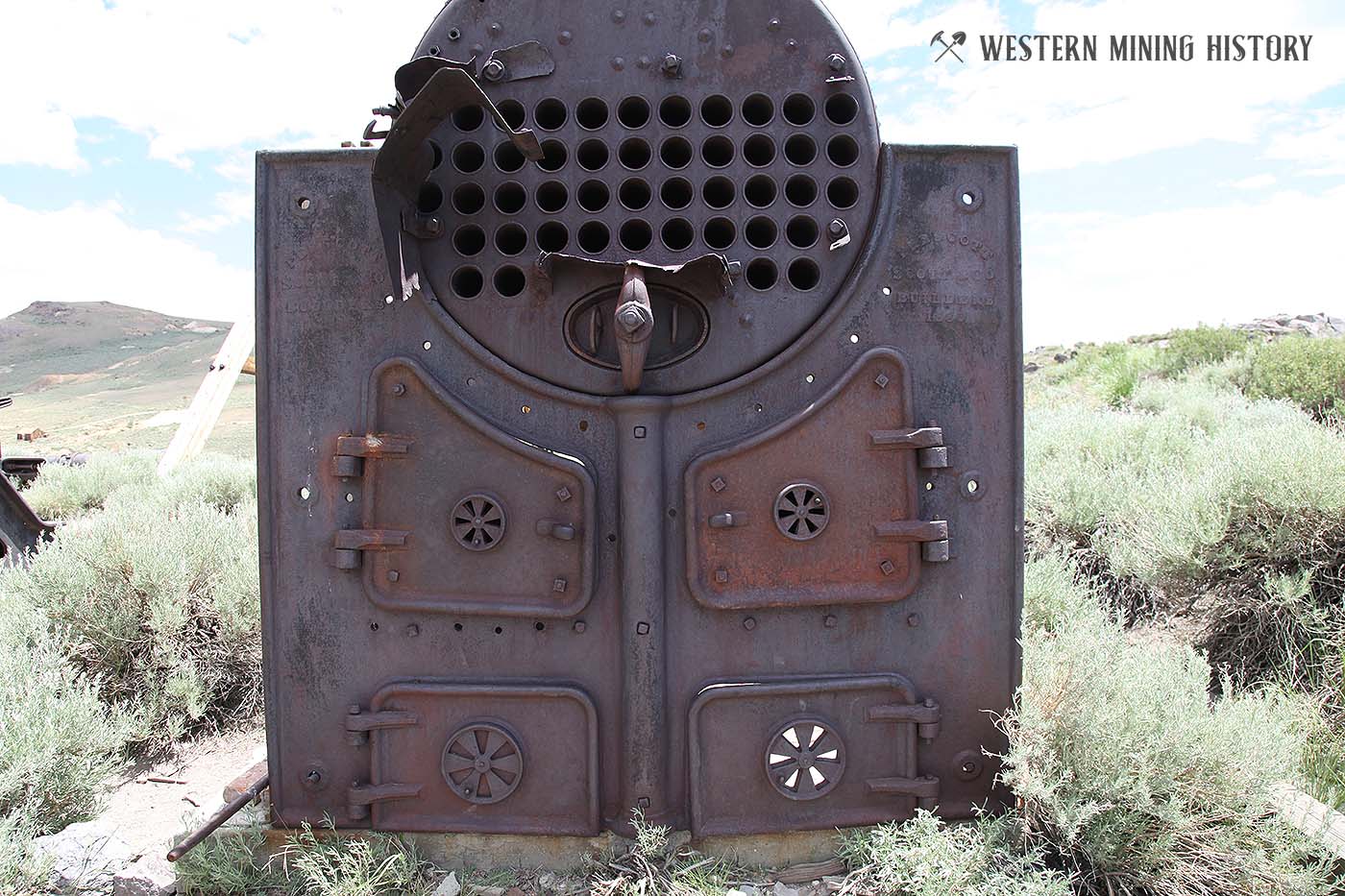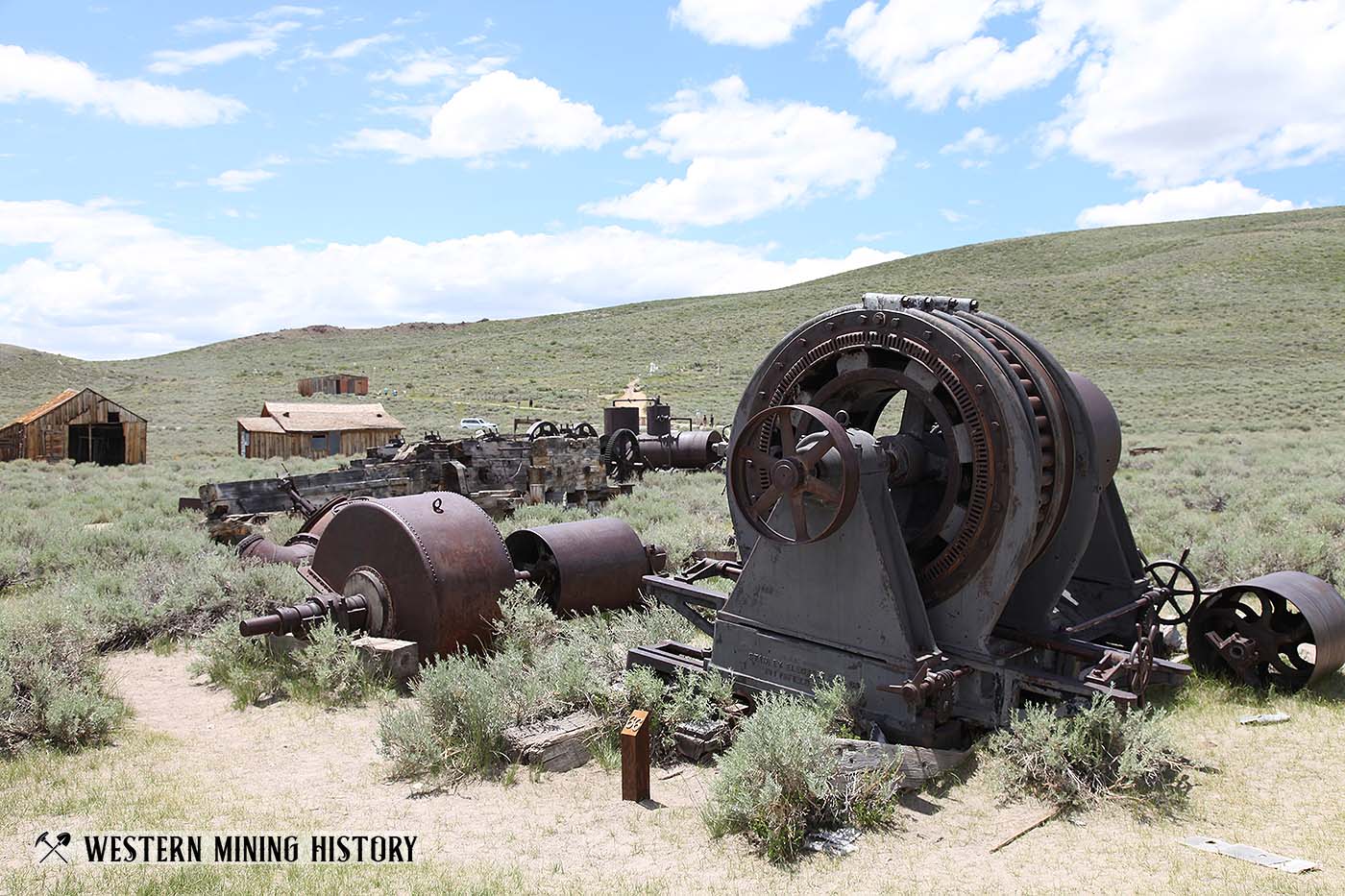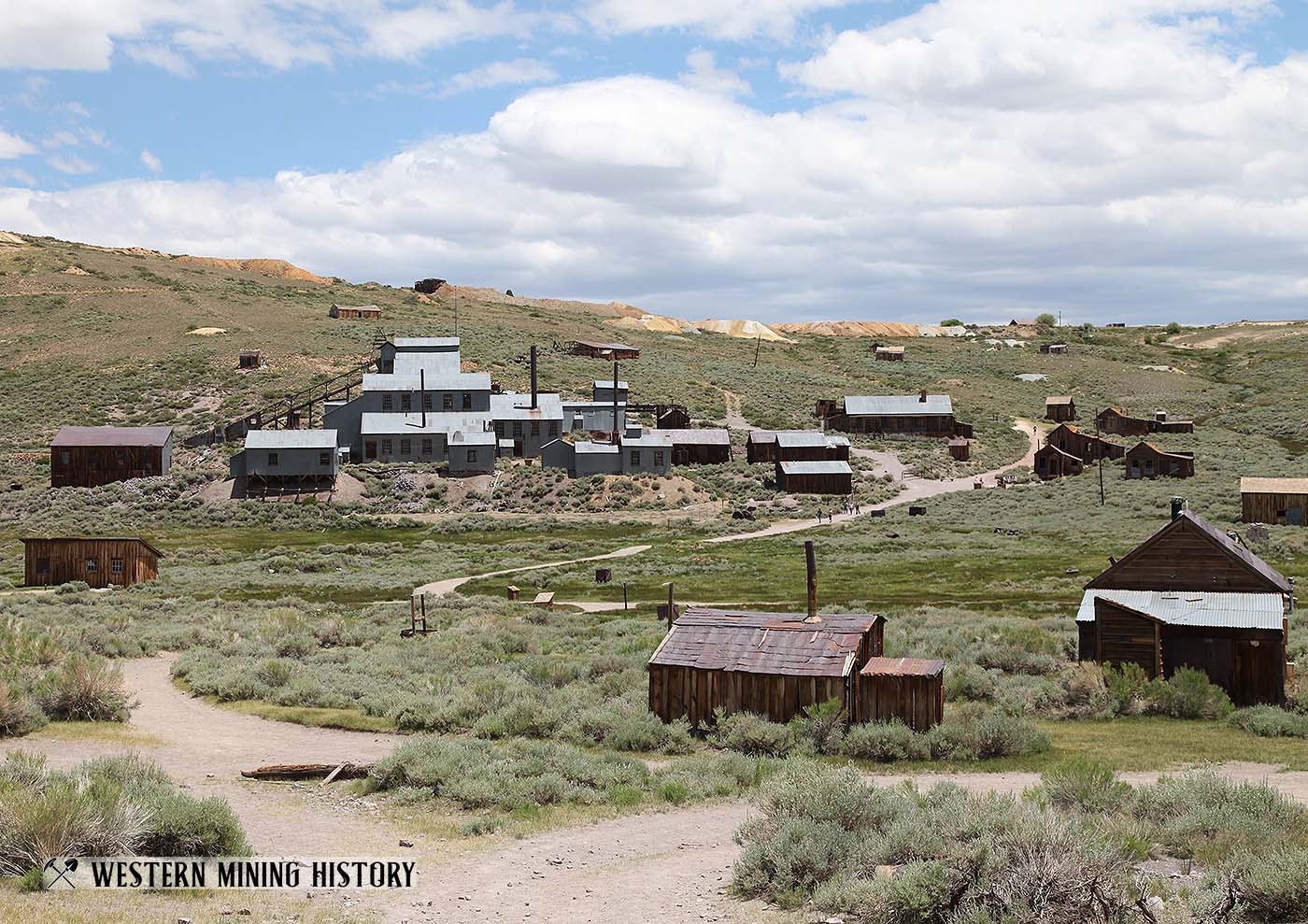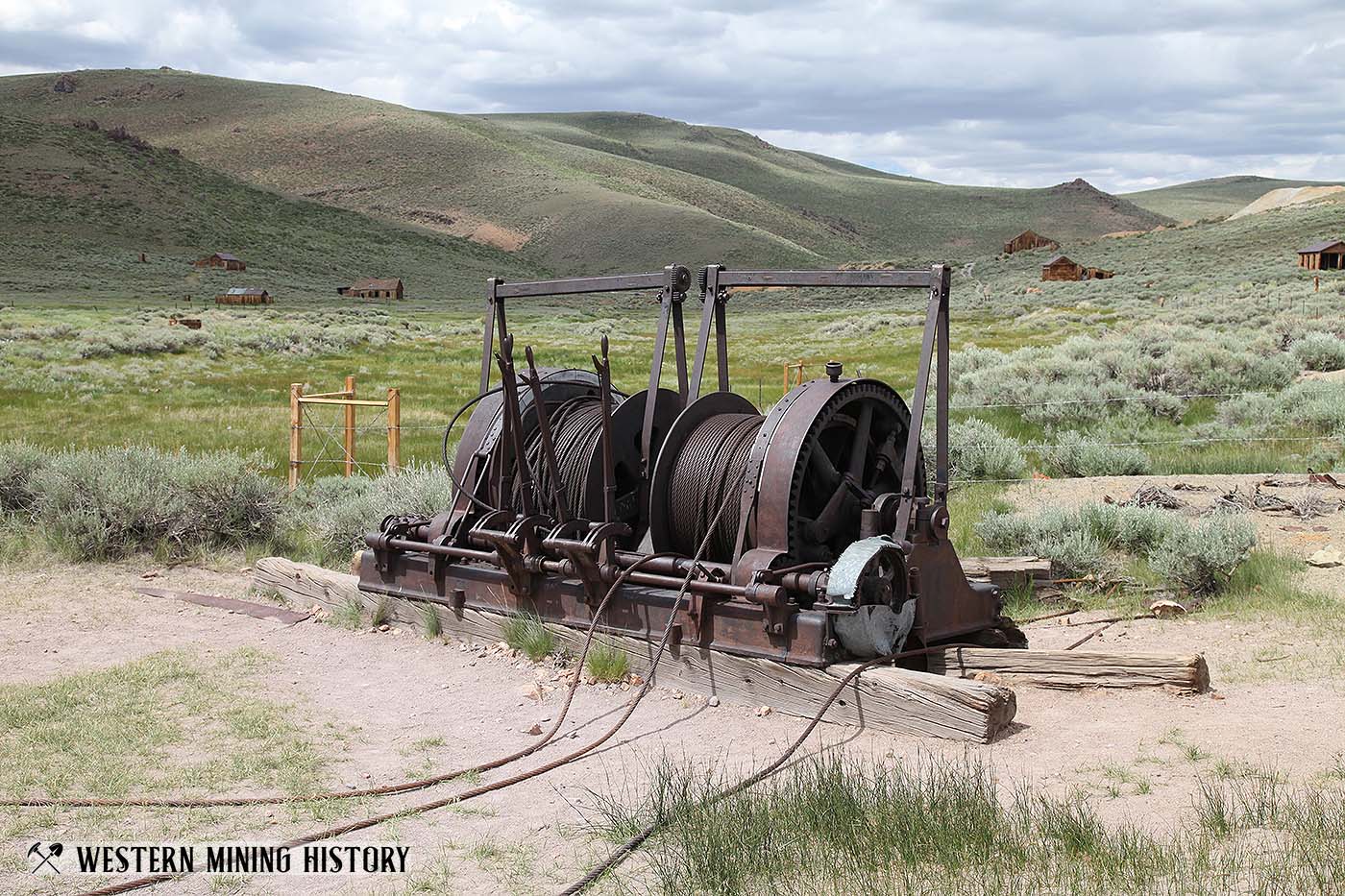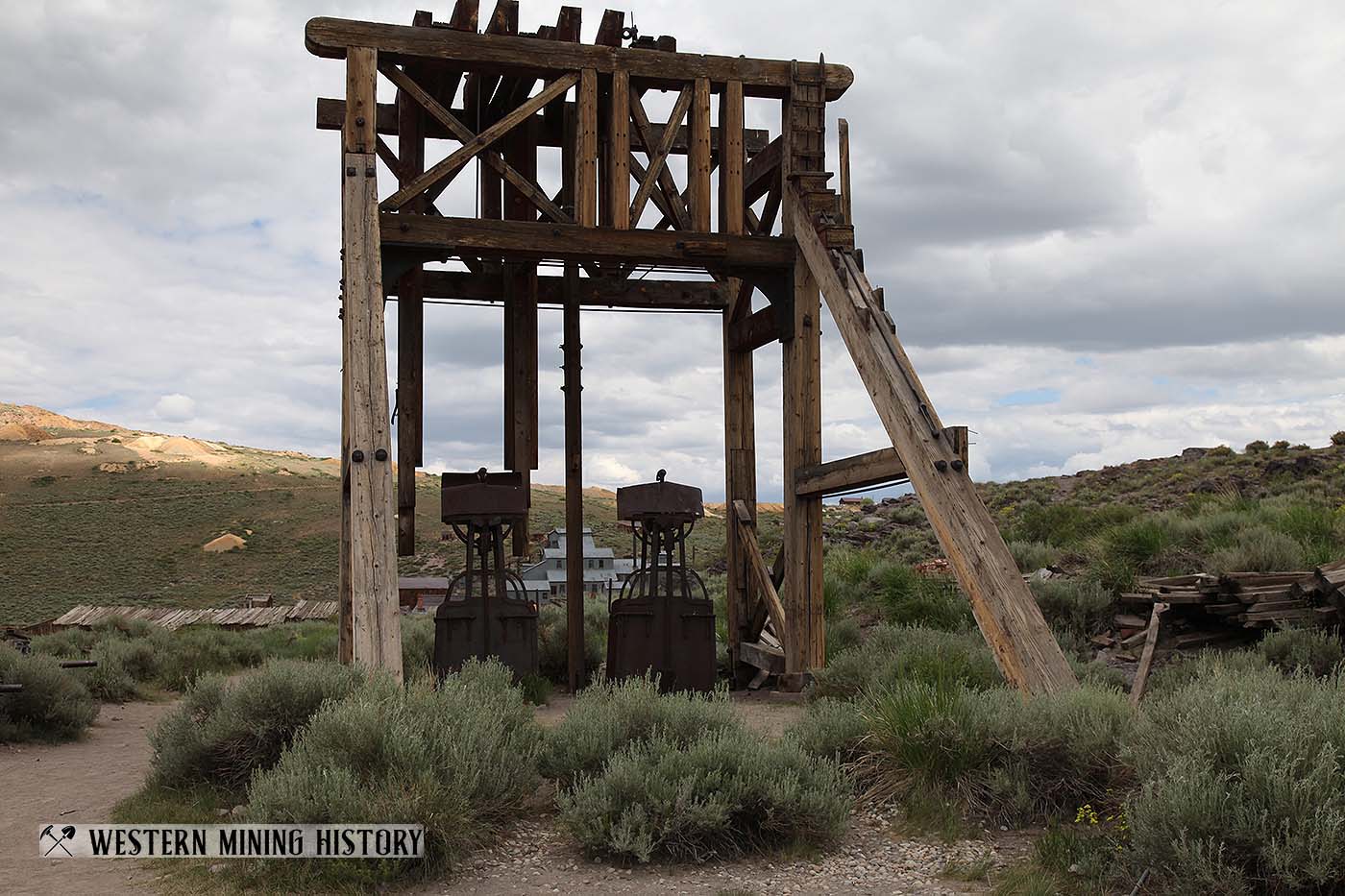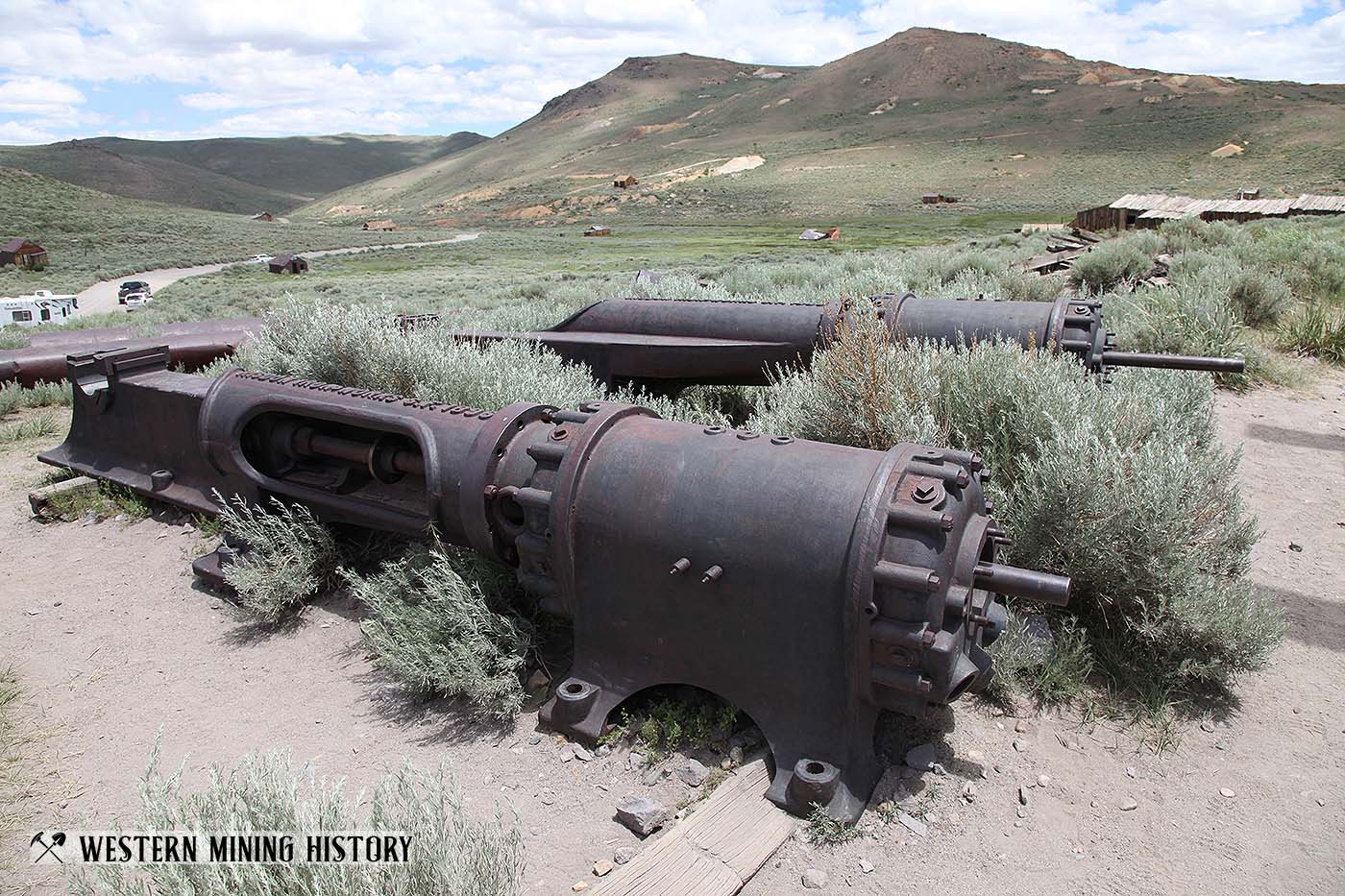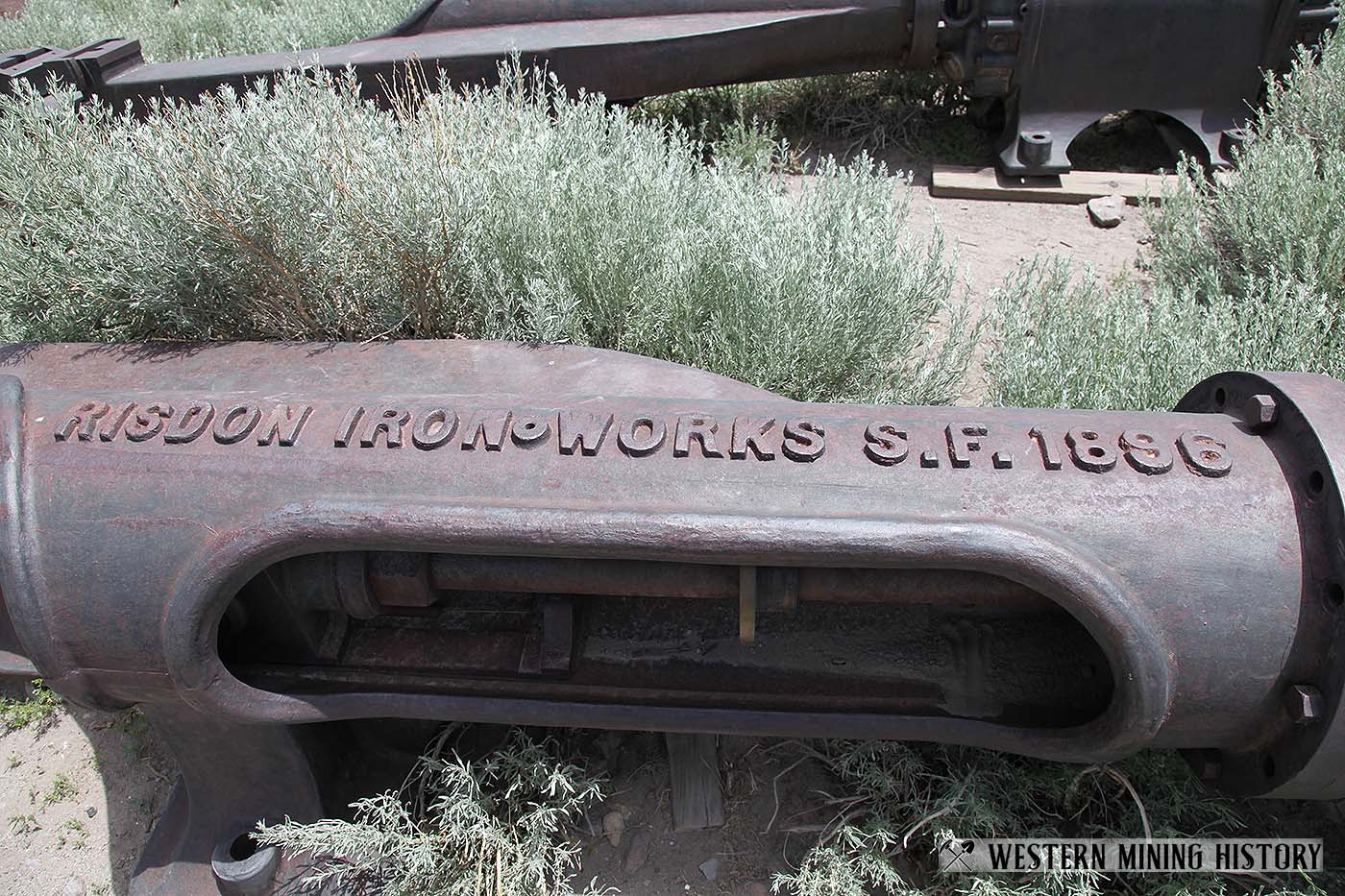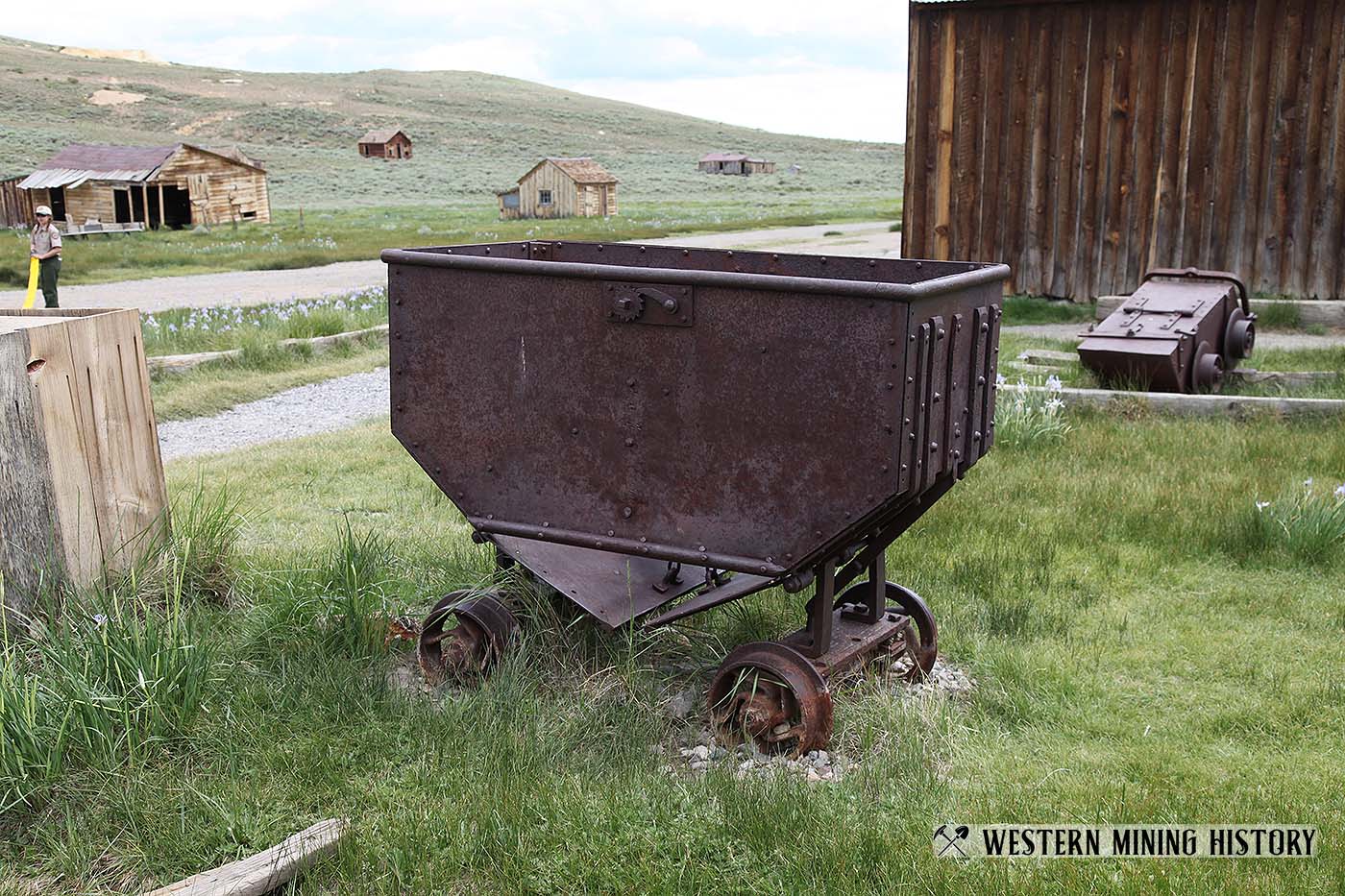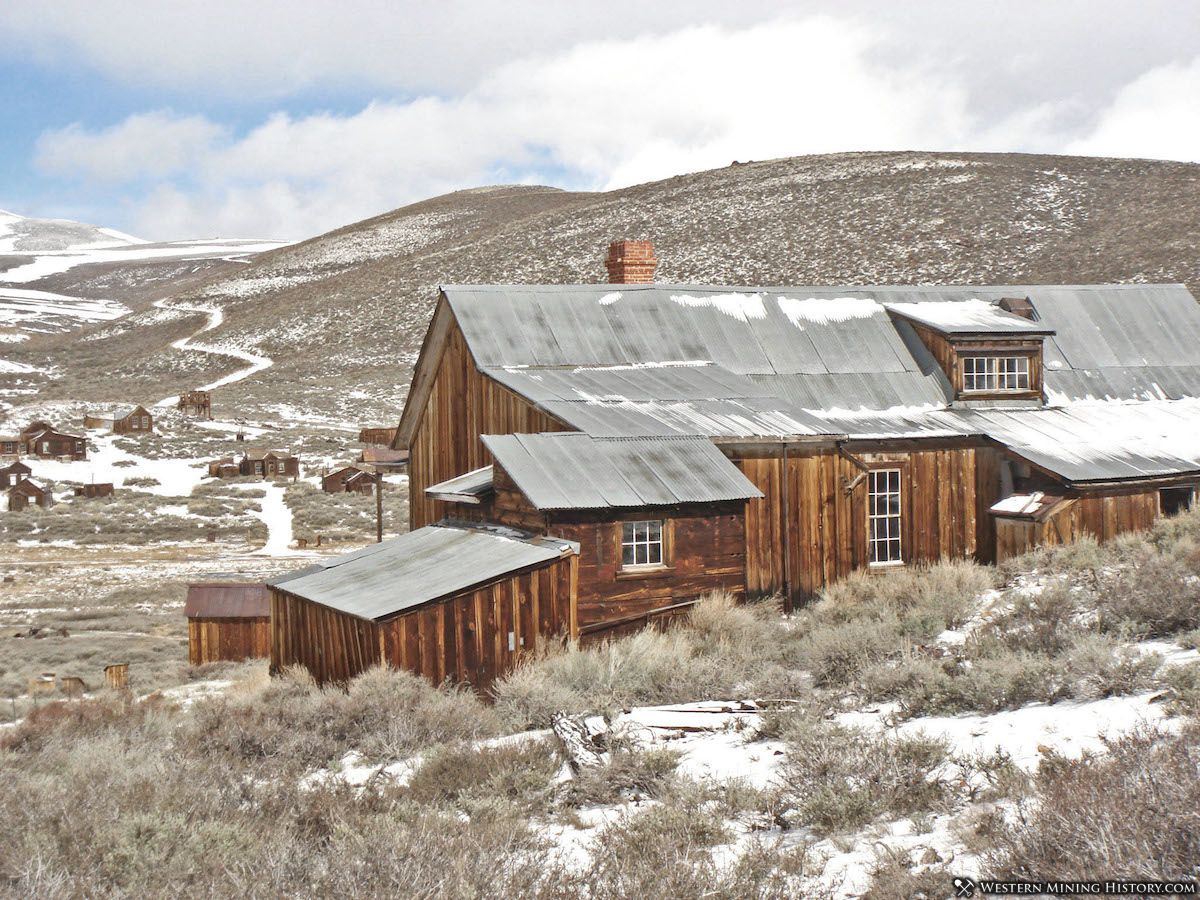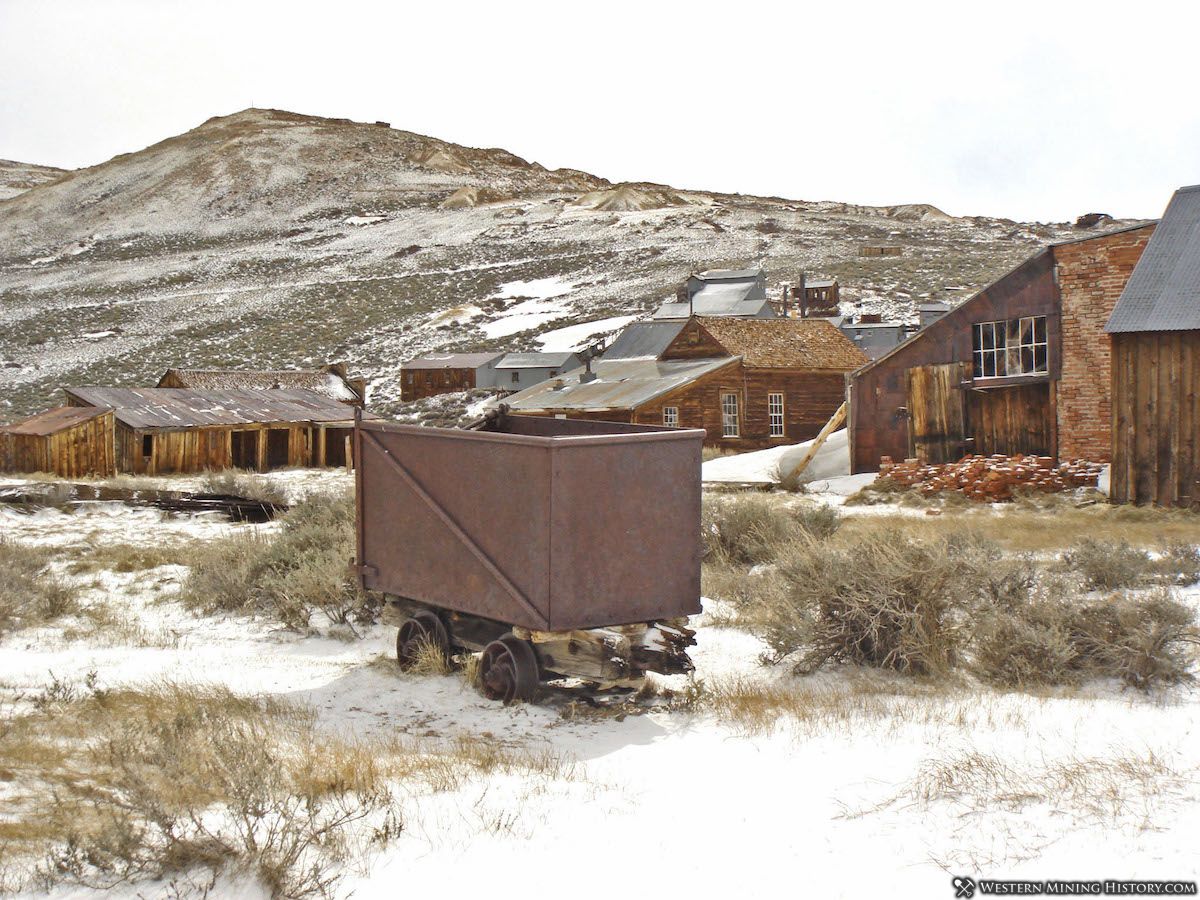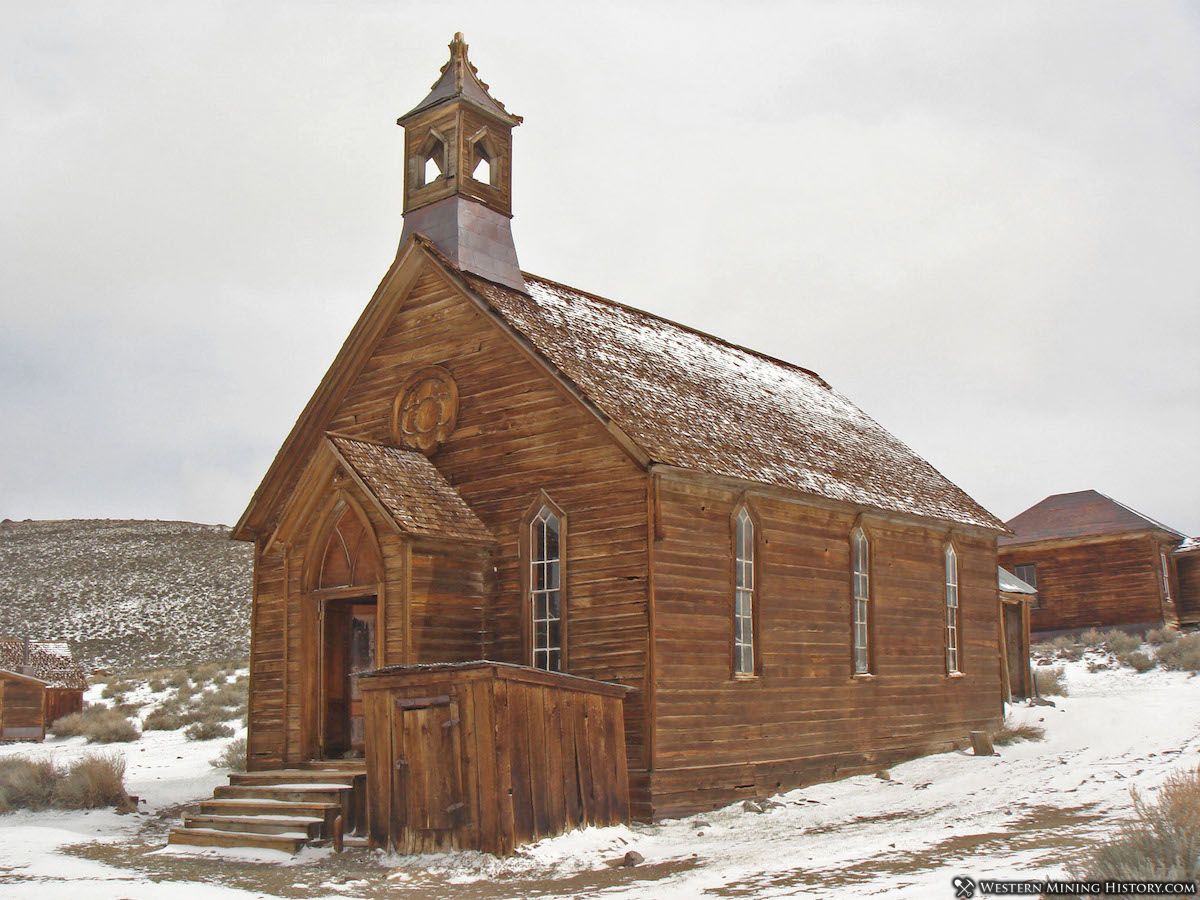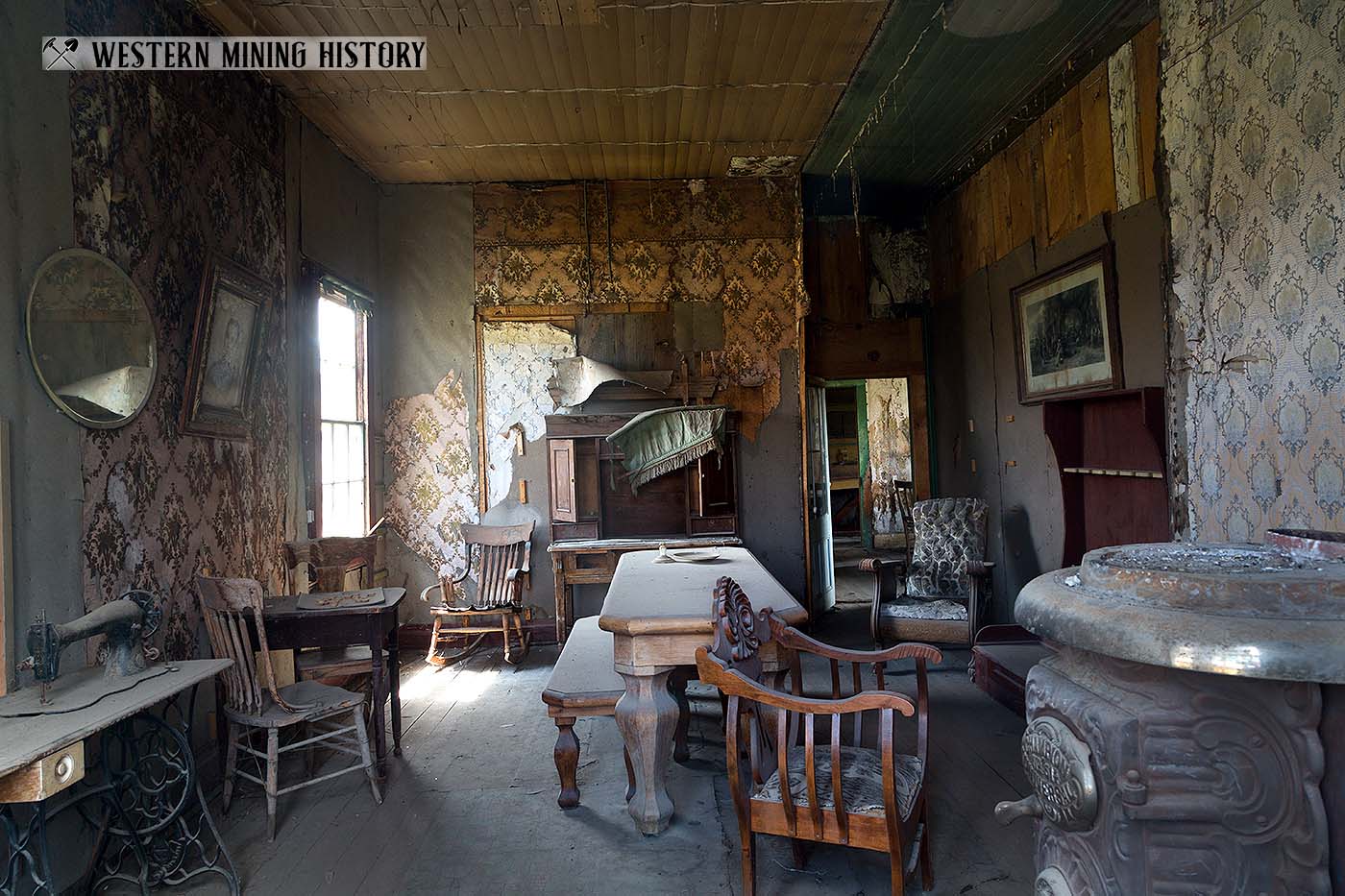Click on an image to get more details or a direct link.
Dechambeau Hotel - Bodie, California
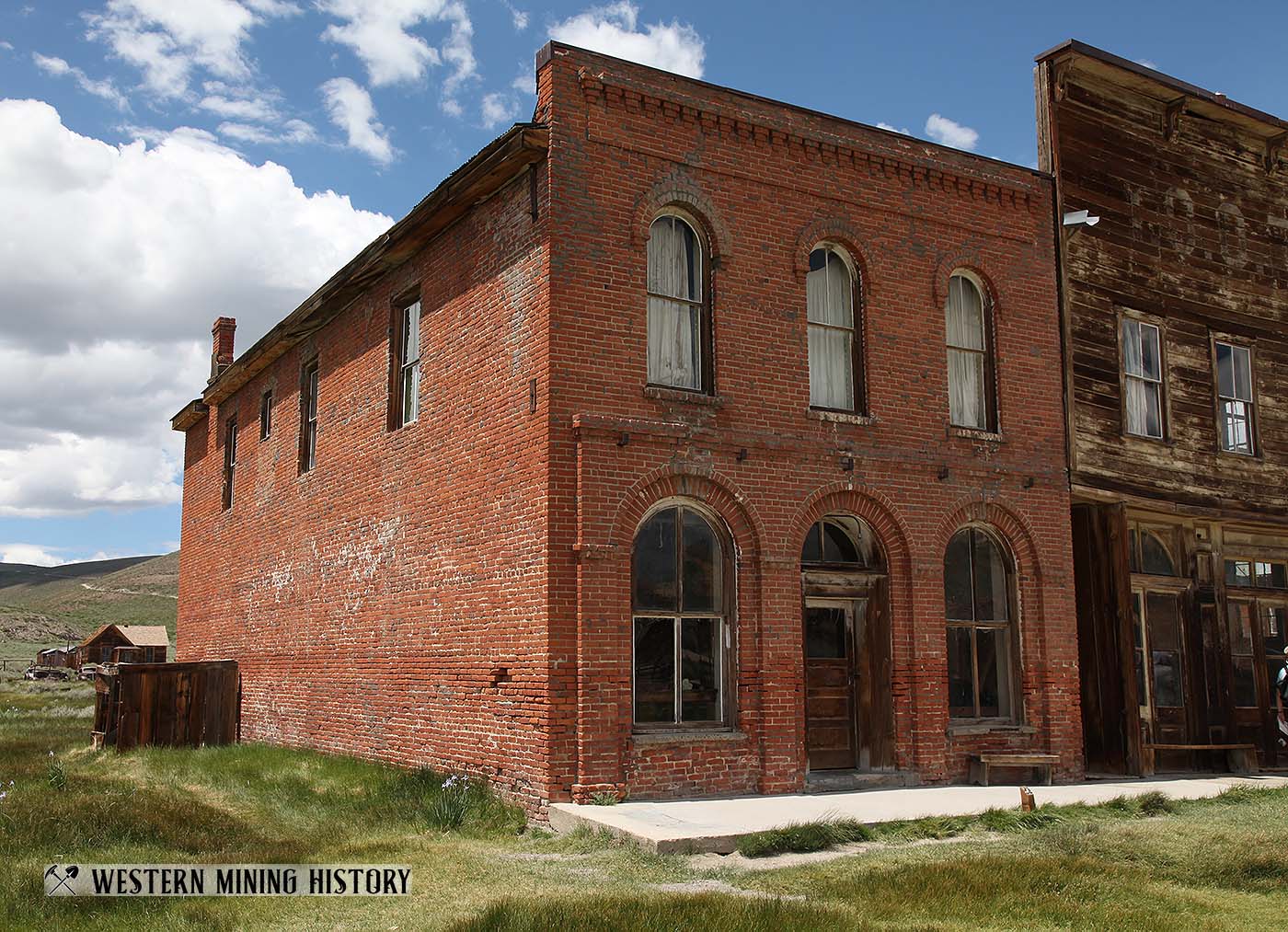
Although this is one of Bodie's few brick buildings, there isn't much history written about it. Apparently it was built in 1879 and was originally a post office. Later it became the Dechambeau Hotel, and then a bar and cafe after the Dechambeau Hotel business moved to Bridgeport.
IOOF Building at Bodie, California
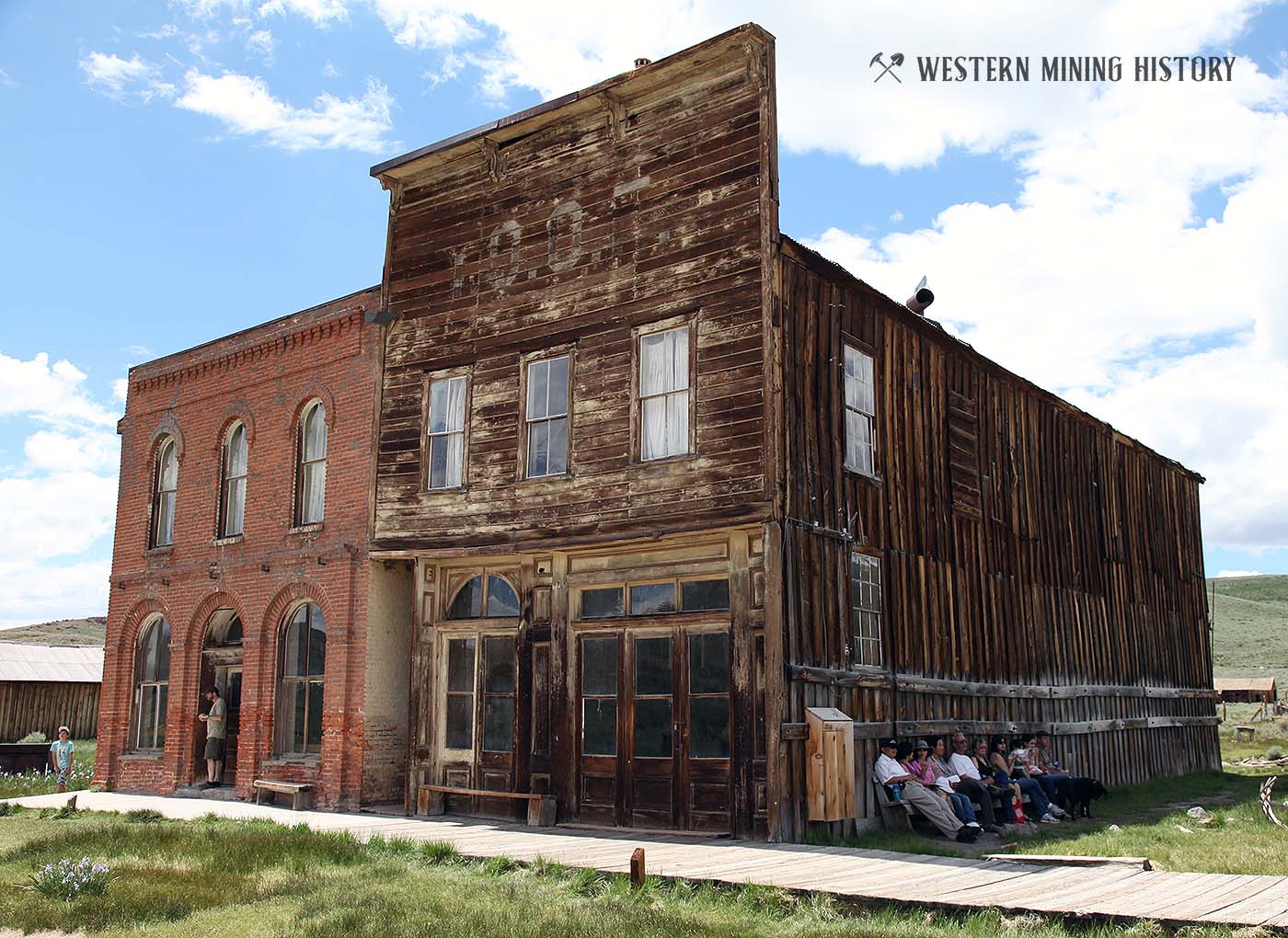
The wooden building is Bodie's International Order of Odd Fellows (IOOF) lodge. The building was constructed in 1880 by H. Ward, who used the first floor for his undertaking business. The building was later used by the Bodie Athletic Club.
Standard Mill - Bodie, California
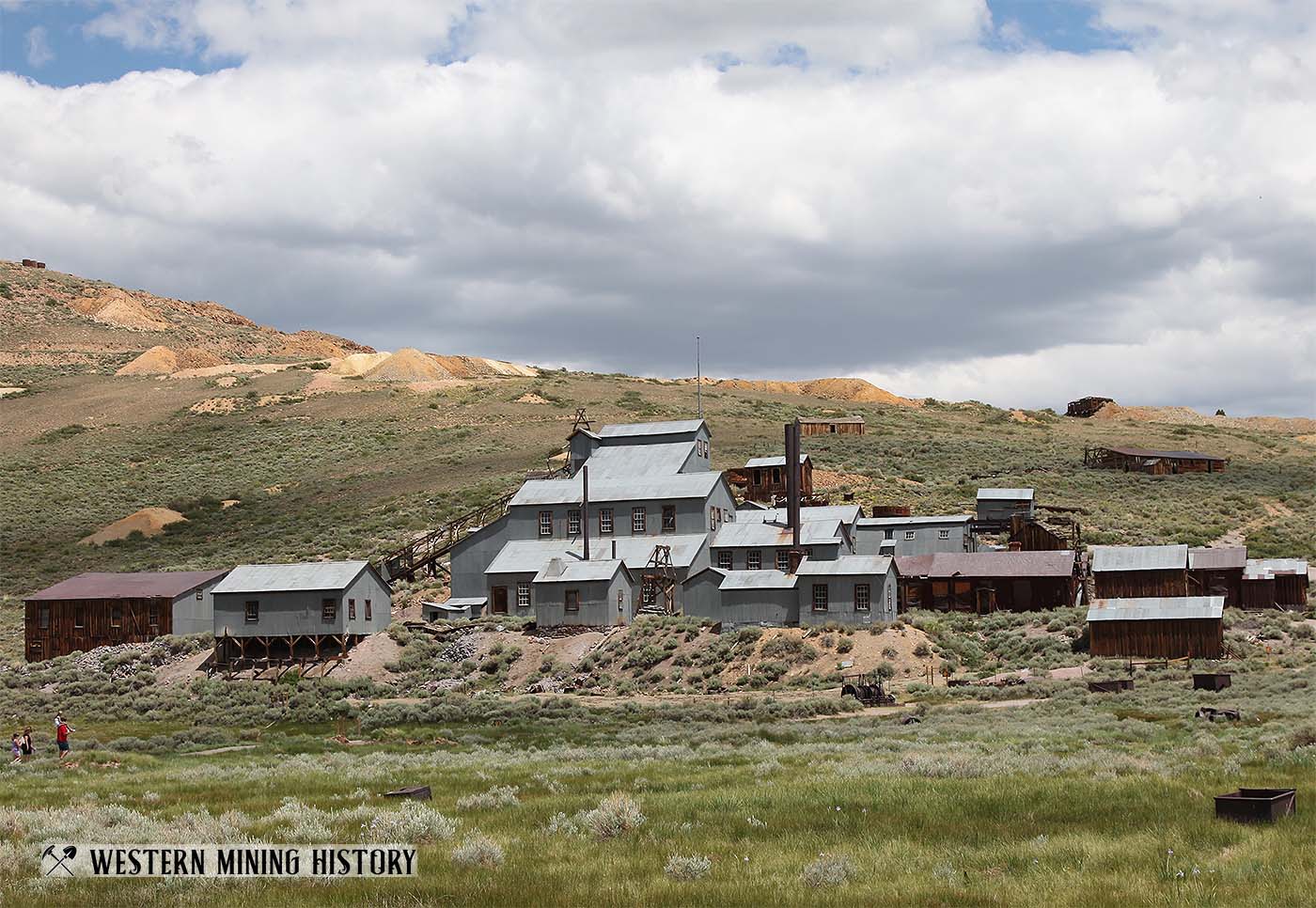
The mine was known as the Bunker Hill Mine when it was registered in July 1861. It passed through several hands before being sold for $67,000 to four partners who changed the name and incorporated as the Standard Consolidated Mining Company in April 1877.
The Standard Mine yielded nearly $15 million over 25 years, and its success caused the 1878 rush to Bodie. Within a year, the population rose from about 20 to an estimated 10,000 miners, gamblers and other entrepreneurs.
The mill was destroyed by fire in 1898, but was rebuilt the following year. Between 1860 and 1941, the Bodie Mining District produced close to $100 million in gold and silver. During those years, gold prices ranged from $20 to $35 an ounce; the price of silver ranged from 70 cents to $1 an ounce. The mill last operated in 1938. The Standard was the most successful of the 30 different mining companies that operated in the Bodie Mining District.
Text from the Bodie State Historic Park tour book
Boarding house and bar - Bodie, California
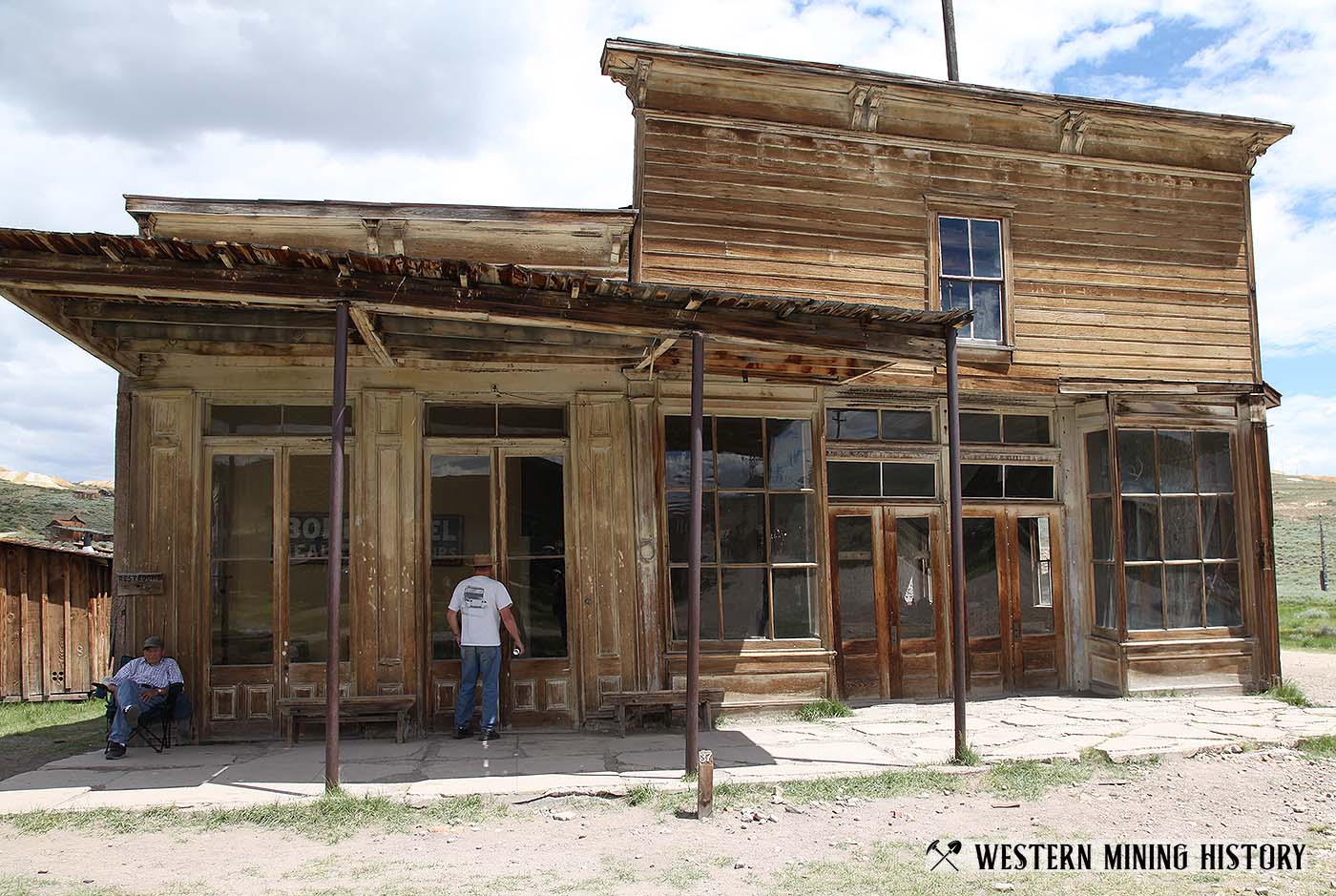
The building on the left was the U.S. Land Office in the mid 1880s. It was later the Power Company office, and then a boarding house called the Wheaton and Hollis Hotel. The building on the right was a bar and pool hall.
Methodist Church - Bodie, California
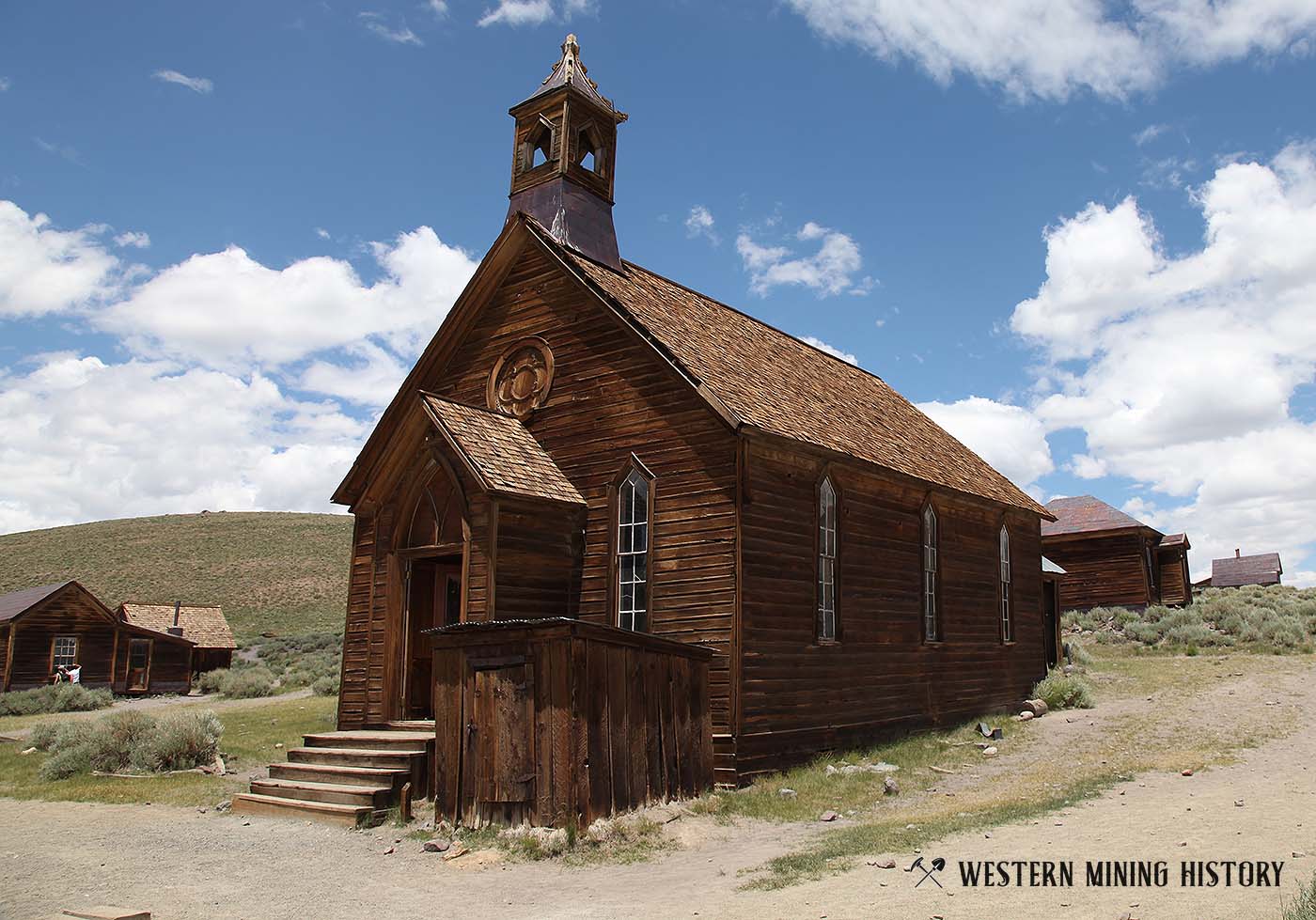
The old METHODIST CHURCH was erected in 1882. This is the only church still standing in Bodie and the only Protestant church erected. E. J. Clinton of San Francisco restored the church and held the last service here in 1932. Since then, the interior has been badly vandalized, and the Ten Commandments painted on oilcloth which once hung behind the pulpit (Thou shalt not steal) has been stolen. The Catholic church on Wood Street, also built in 1882, burned down in 1928.
Text from the Bodie State Historic Park tour book
Boone Store & Warehouse - Bodie, California
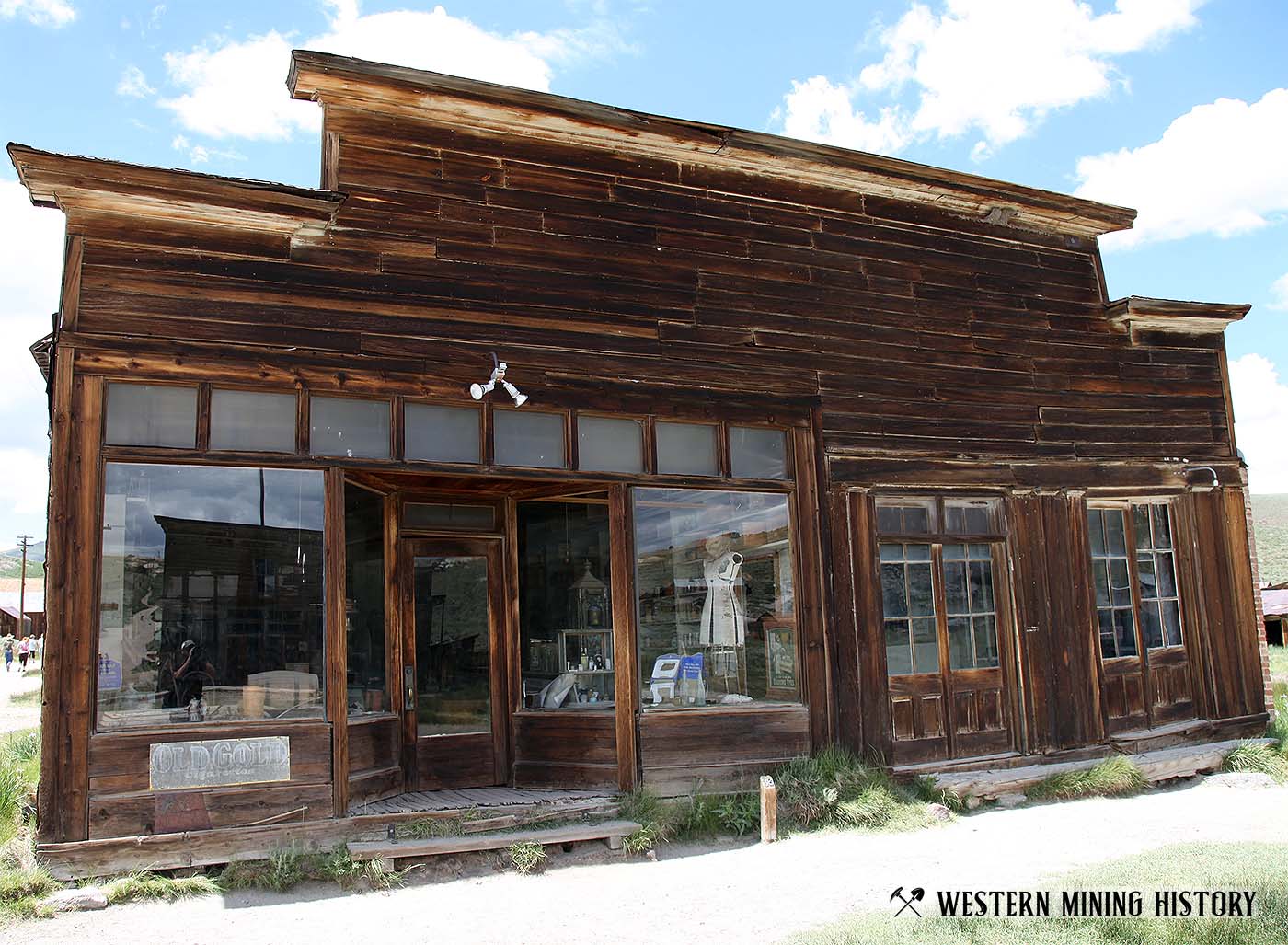
Erected in 1879, this building served as a general store. It was owned by Harvey Boone, a direct descendent of Daniel Boone. Harvey was a great horse fancier and also owned the Boone Stable and Livery business. Note the five-gallon cans used as siding (seen at the extension at the back of the building in the photo below). Kerosene and gasoline were hauled to Bodie from Hawthorne and Carson City in these cans, which were then cut open and used for roofing and siding. Later, corrugated iron was used.
Text from the Bodie State Historic Park tour book
Bodie Bank
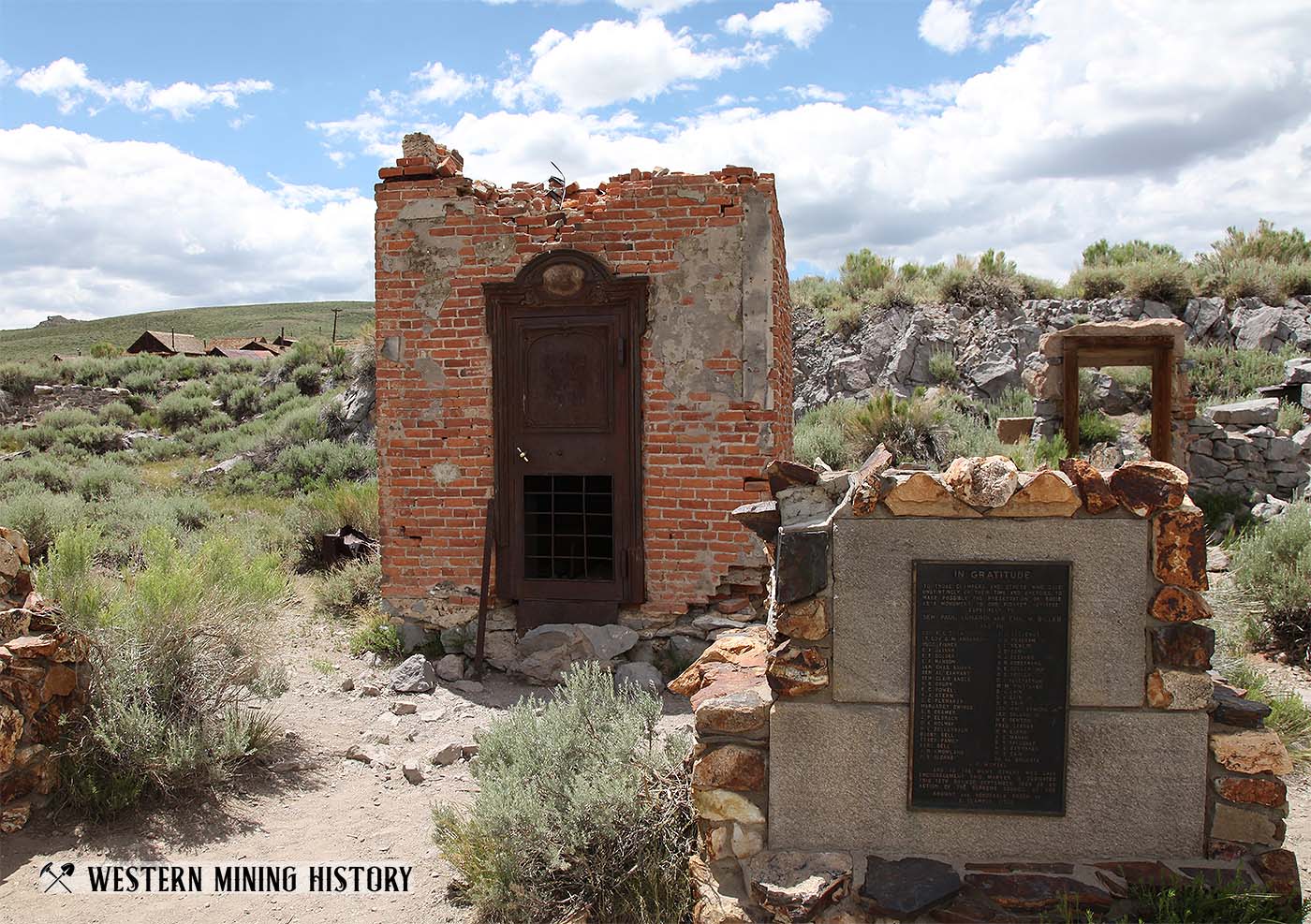
This is the site of the BODIE BANK, which James S. Cain bought from E. L. Benedict in 1890. The bank escaped the fire of 1892, but was destroyed in the fire of 1932. All that you see here are the remains of the vault. It was robbed on September 1, 1916, by four men who got away with $4,000 in money and jewelry.
The other bank that Bodie boasted during its boom days, the Mono County Bank, was organized in 1877 by Timothy Hopkins, adopted son of Mark Hopkins of "Big Four" and Cen- tral Pacific fame. It operated until 1884 and closed with all accounts settled in full.
Text from the Bodie State Historic Park tour book
James Stuart Cain plaque - Bodie, California
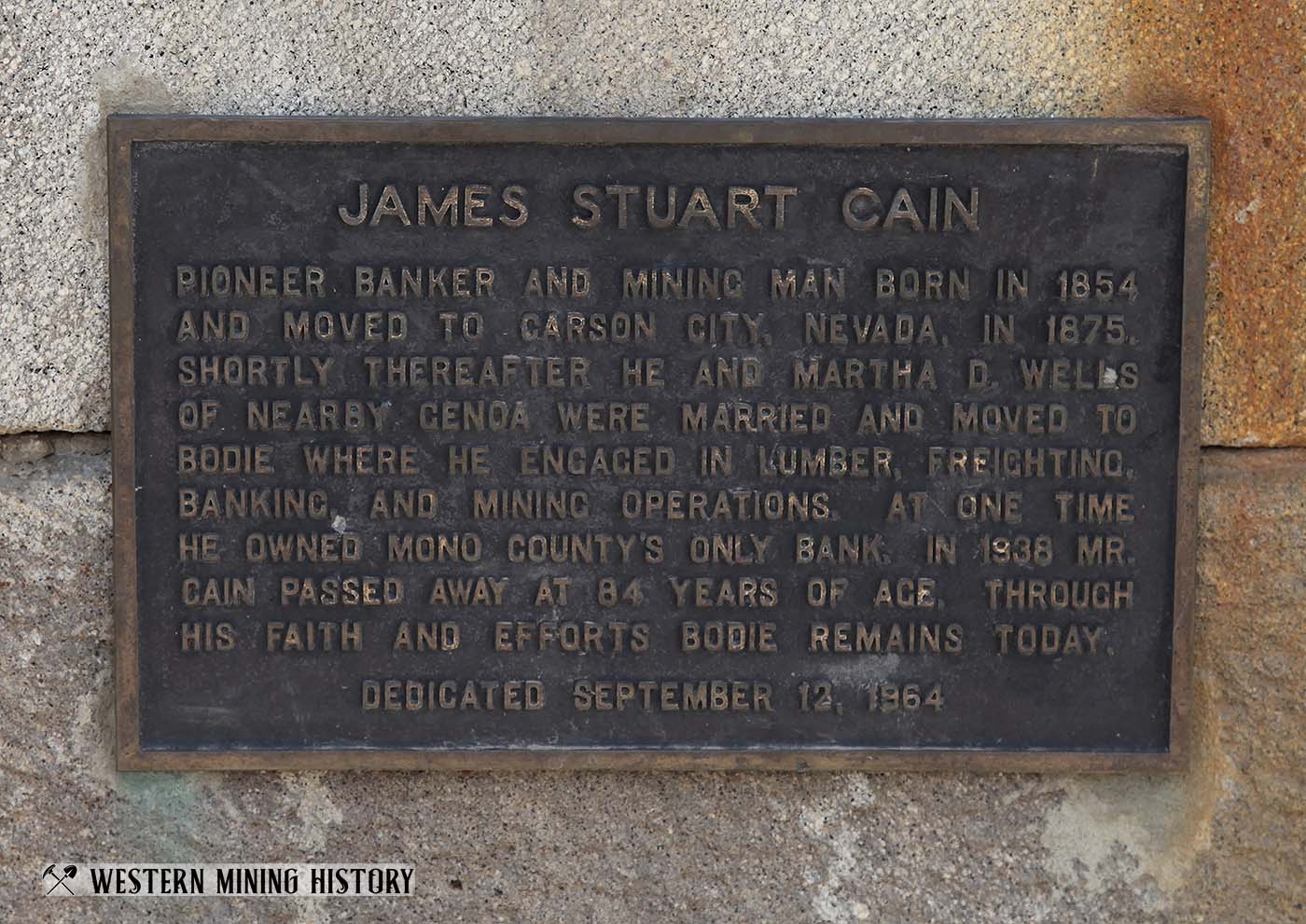
James Stuart Cain
Pioneer banker and mining man born in 1854 and moved to Carson City, Nevada, in 1875. Shortly thereafter he and Martha D. Wells of nearby Genoa were married and moved to Bodie where he engaged in lumber, freighting, banking, and mining operations. At one time he owned Mono County's only bank. In 1938 Mr. Cain passed away at 84 years of age. Through his faith and efforts Bodie remains today.Dedicated Spetember 12, 1964
Sawmill - Bodie California
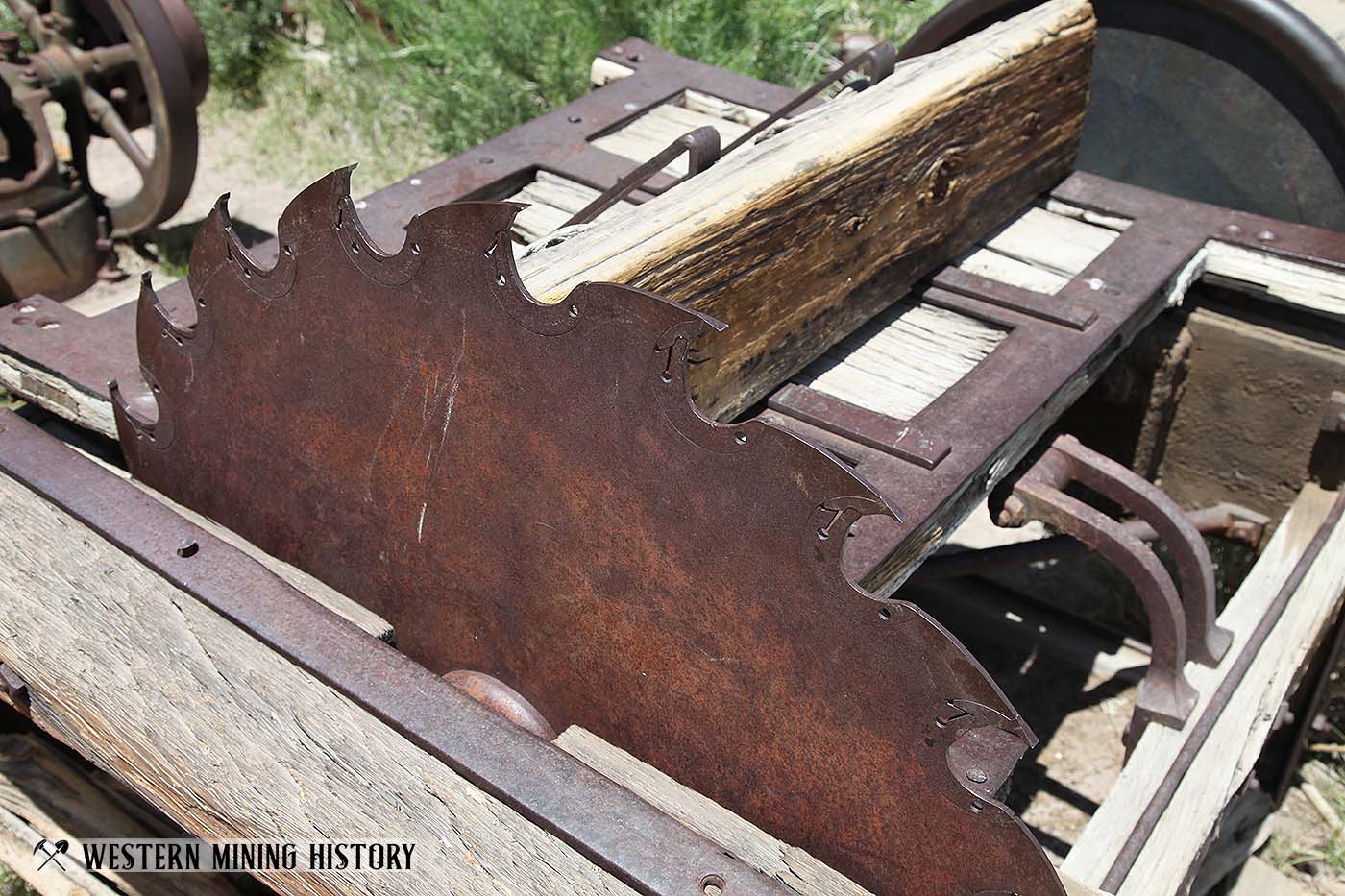
The small sawmill was used for cutting firewood. With snow as much as 20 feet deep, winds up to 100 miles an hour, and temperatures down to 30 or even 40 degrees below zero, plenty of firewood was needed to keep Bodie's poorly constructed houses warm during the winter. The winter of 1878/1879 was especially severe, and Bodie residents, many of them new arrivals, were not adequately prepared. Many died of exposure, disease or violence. Preparing for a Bodie winter was, and still is, a monumental task.
Moyle Warehouse - Bodie California
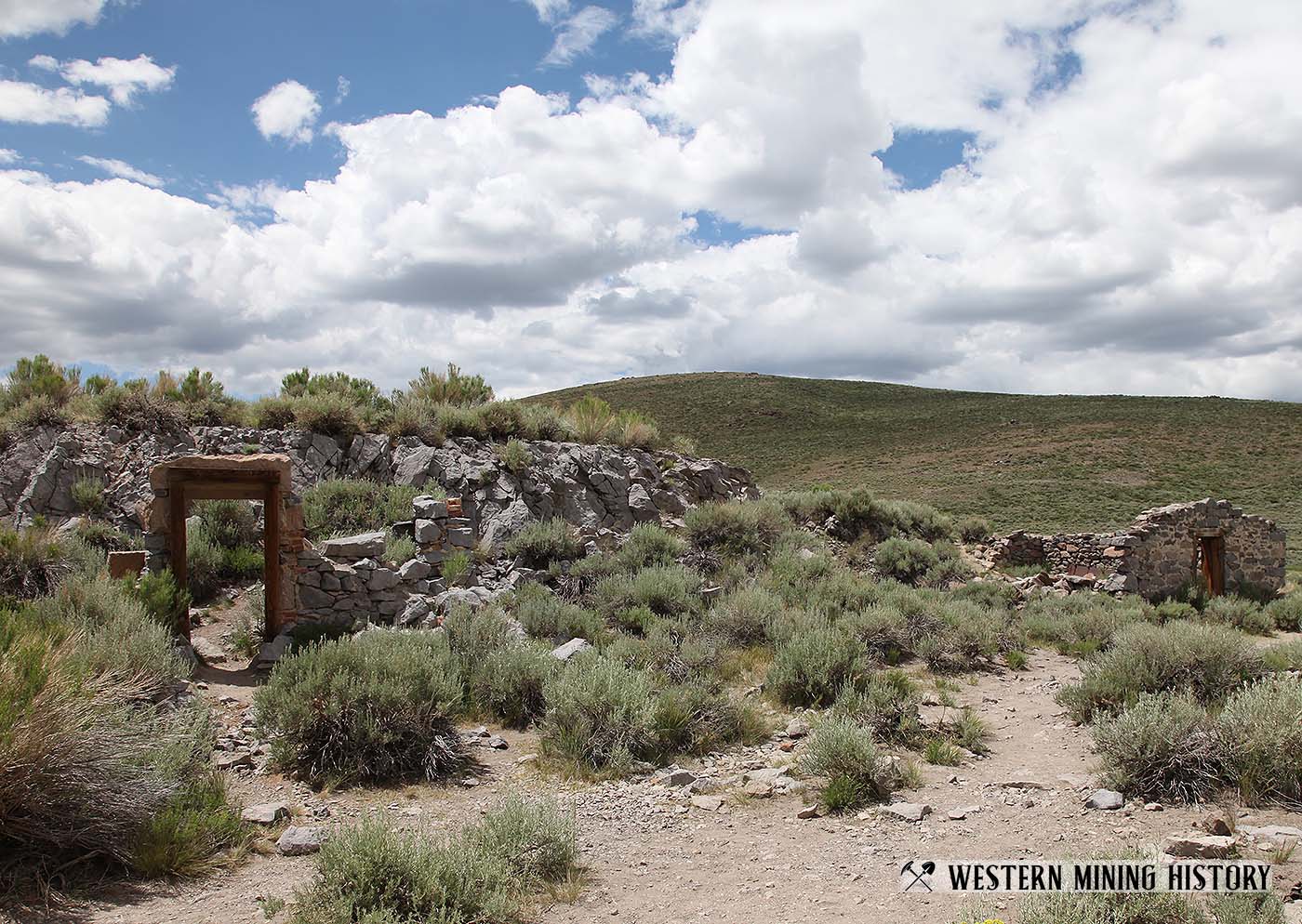
Remains of the Moyle Warehouse, one of the large stone warehouses constructed to store supplies for the long, cold Bodie winters. Some of the stone buildings were built into excavations blasted out of the hillside, and rooms or chambers were formed out of the rubble. This warehouse was built in 1879.
Miner's Union Hall - Bodie, California
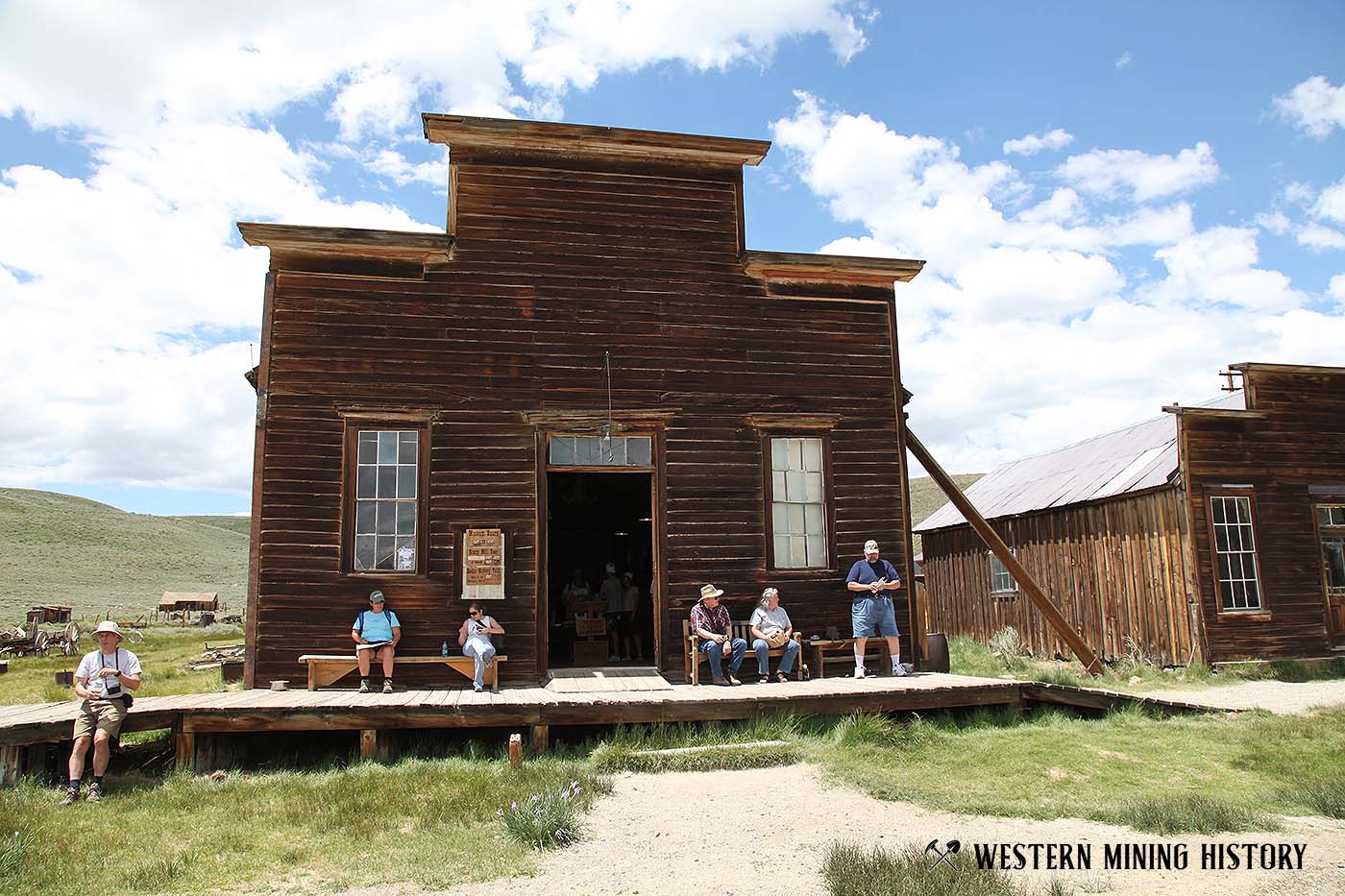
The Miners Union Hall, built in 1878, was an important place in the social life of Bodie. The annual Fourth of July Grand Ball, the elegant masquerade ball on Washington's Birthday (when it invariably snowed), and Christmas parties for young and old were held here. The Miners' Union Local 61, Western Federation of Miners, was organized December 22, 1877, and was one of the first organized unions in California. The building now houses a museum.
Sam Leon Bar - Bodie, California
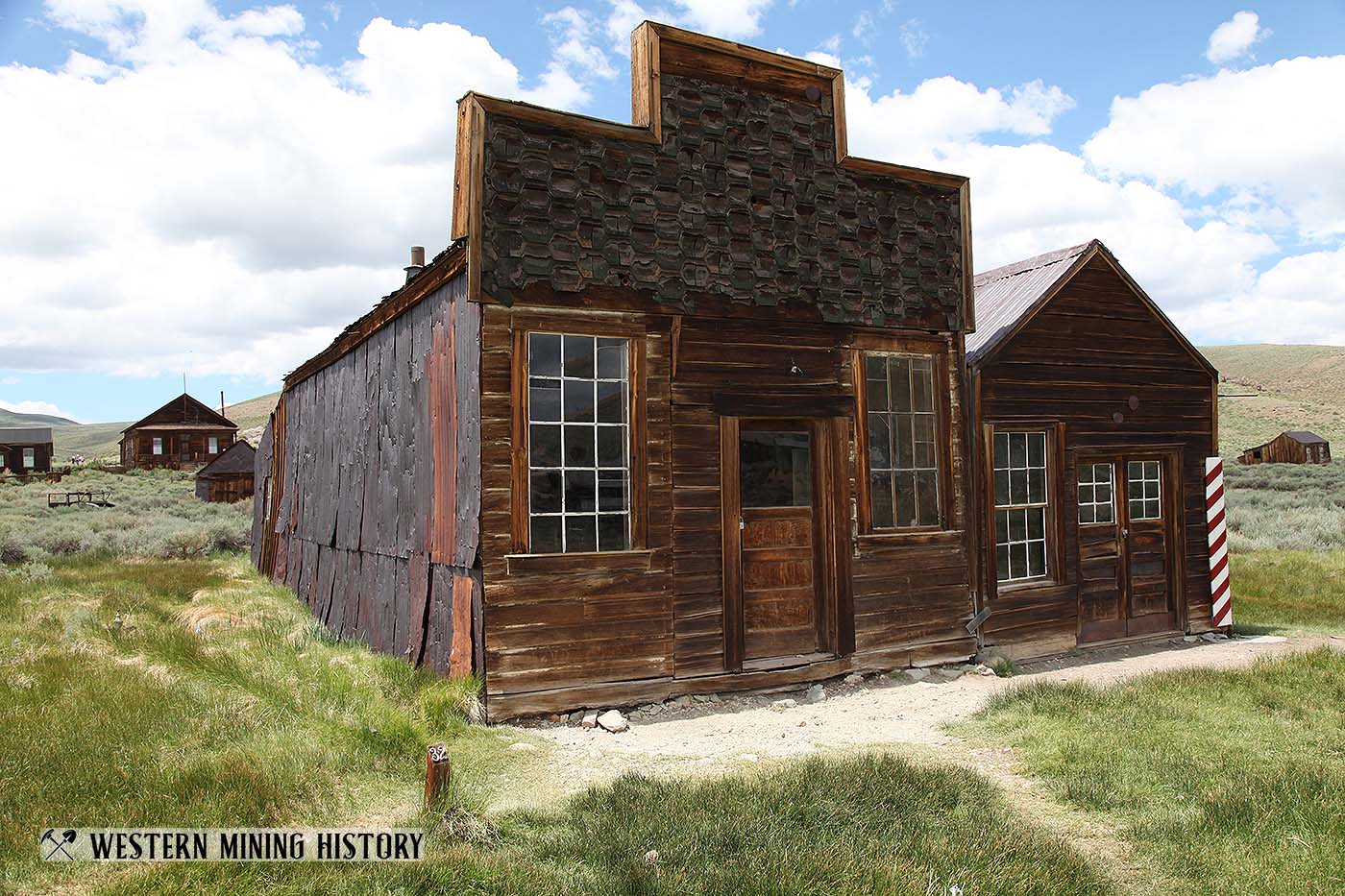
Before becoming the Sam Leon Bar, this building was the town mortuary and the Hise Resataurant. More information on the history of this building is available on the Bodie history page.
School House - Bodie, California
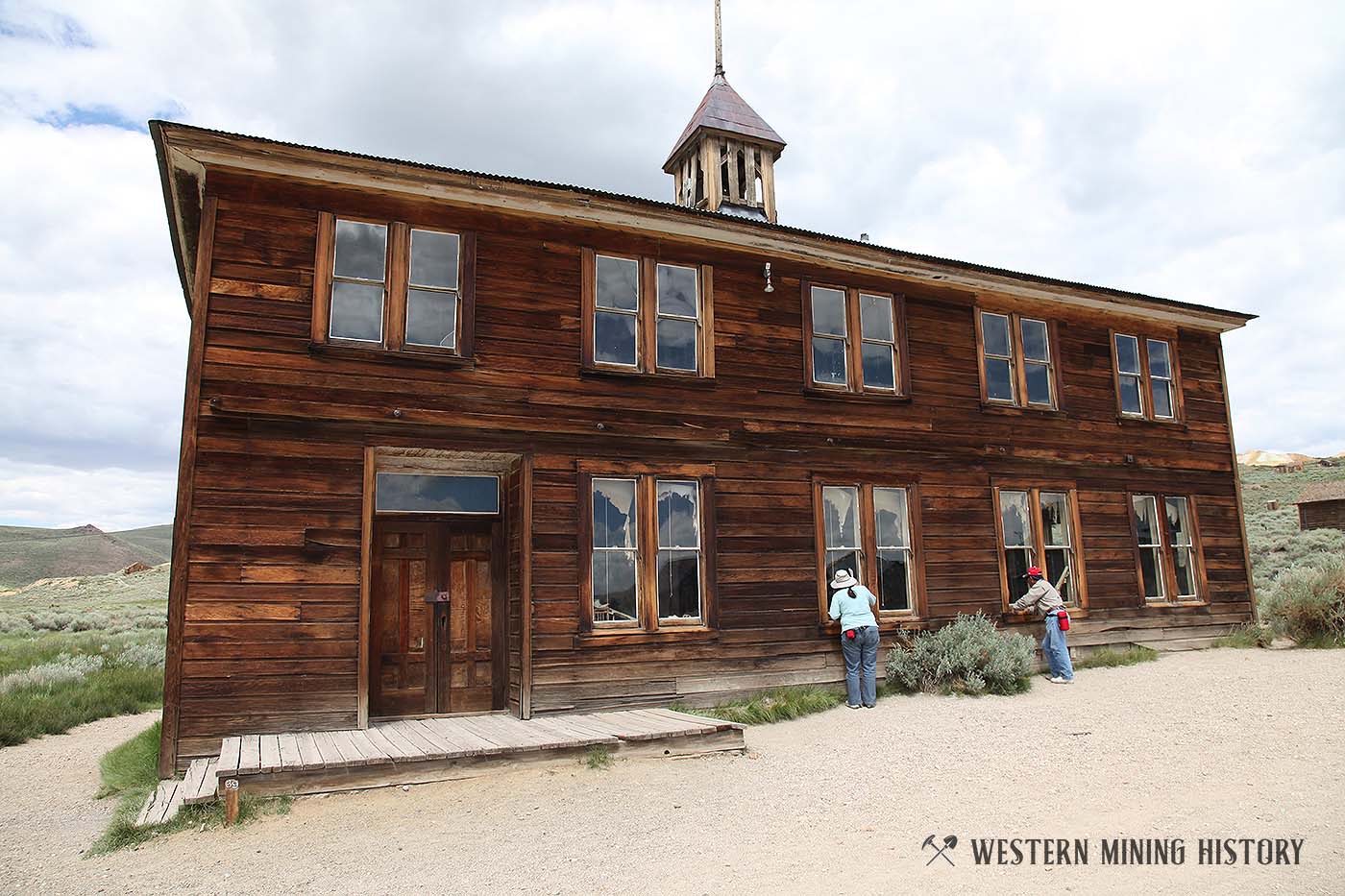
The school house, built in 1879, was originally the Bon Ton Lodging House. The first school, located two blocks up the street, was burned down by an early-day juvenile delinquent. Belle Moore, wife of Ben Butler, was Bodie's first schoolteacher.
Firehouse - Bodie, California
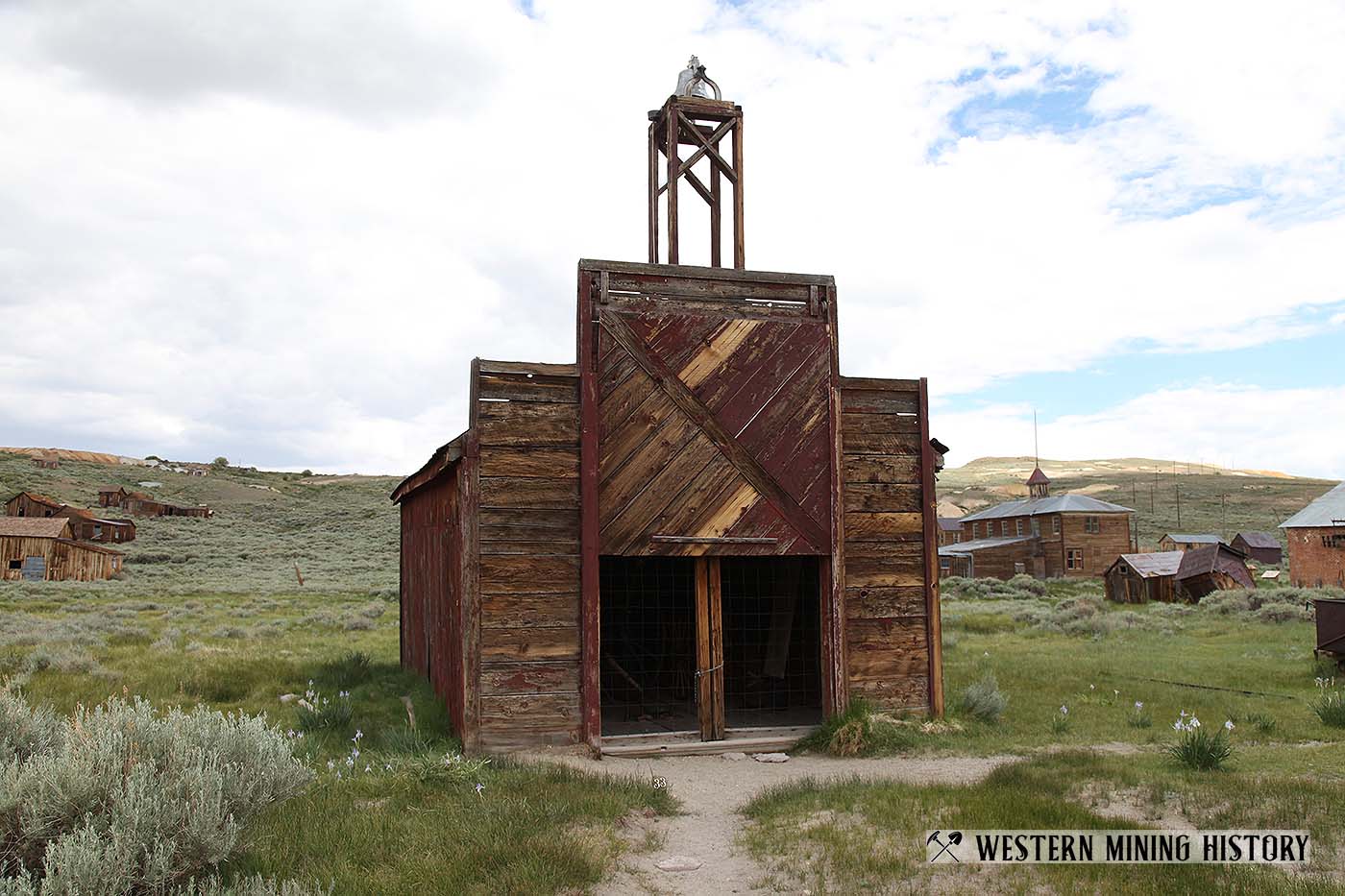
The firehouse. The big fire of July 25, 1892, wiped out all but a few buildings of the town's business district. Then on June 23, 1932, a small boy playing with matches started another fire. Each time there was plenty of water available, and the fires could have been stopped, but the screens at the reservoirs had not been replaced after cleaning, and the pipes were clogged with rocks and mud.
Saddle Room - Bodie, California
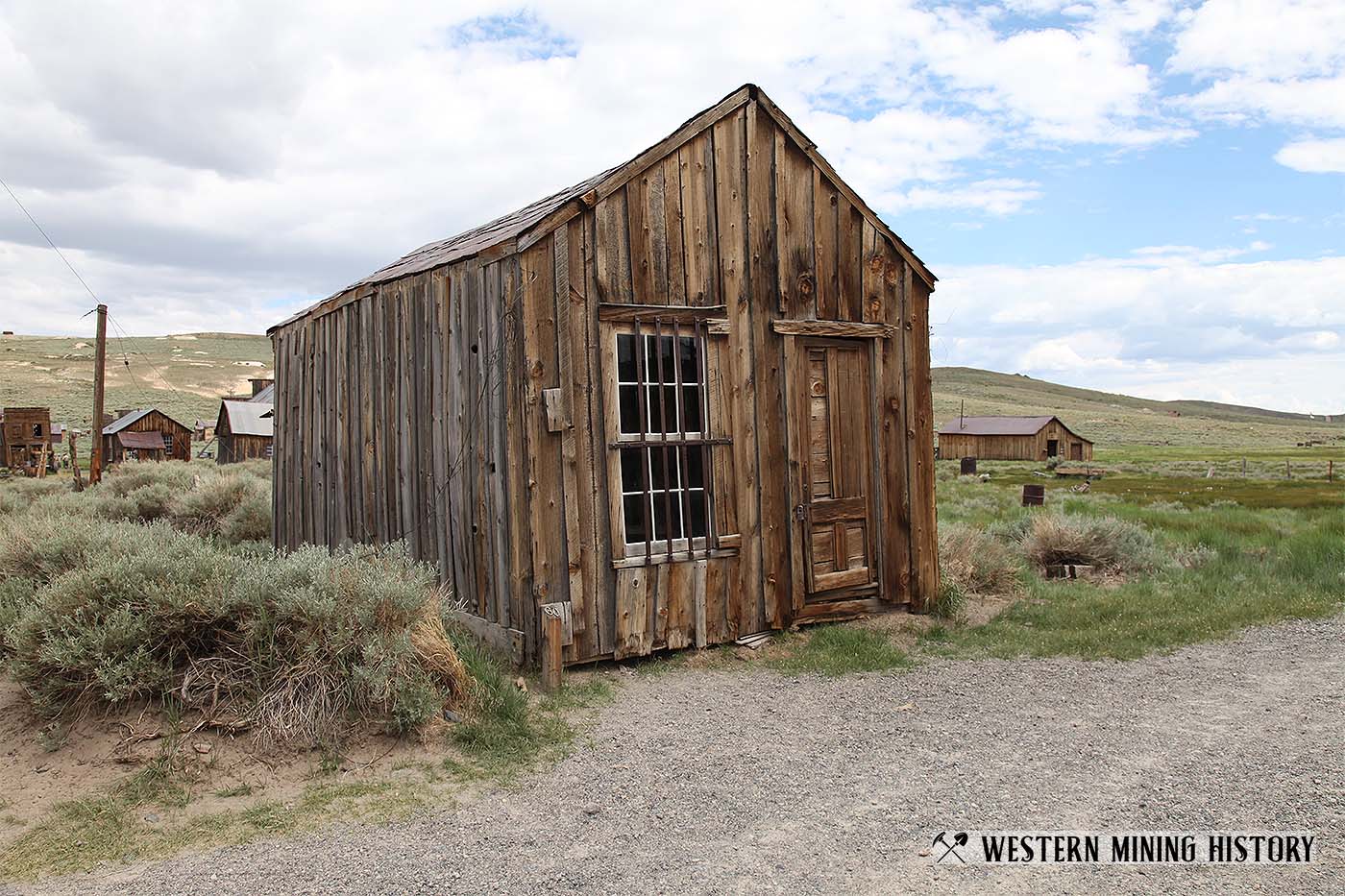
Identified as the "Saddle Room", there is no additional information on this building.
Blacksmith Shop - Bodie, California
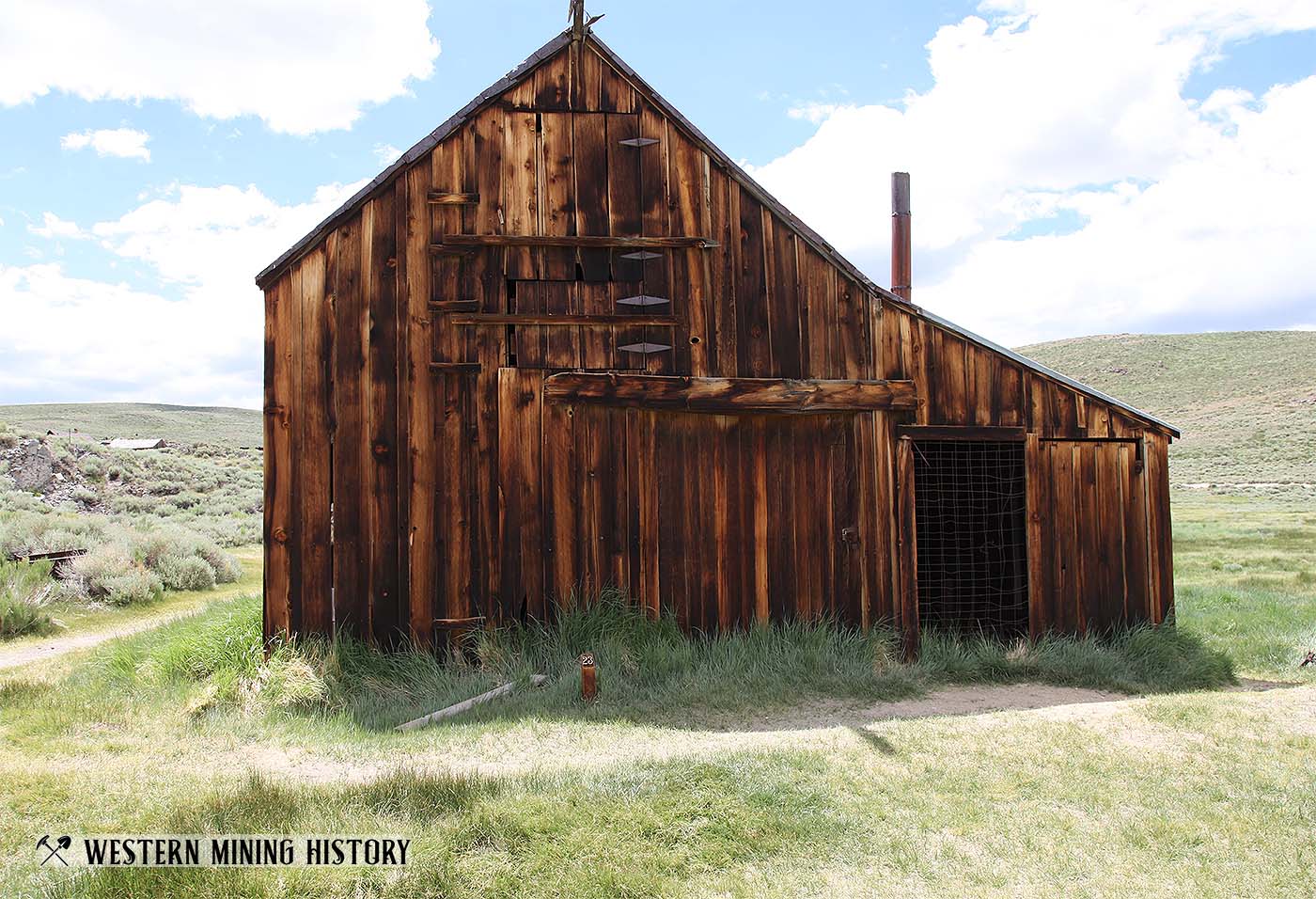
The Stuart Kirkwood livery stable and blacksmith shop. From 1879 to 1880, the population of Bodie soared to about ten thousand inhabitants. To feed, clothe, and otherwise supply this active, hardworking population required many wagons and literally hundreds of horses, mules, and other draft animals to haul in tons of goods daily.
James Stuart Cain House - Bodie, California
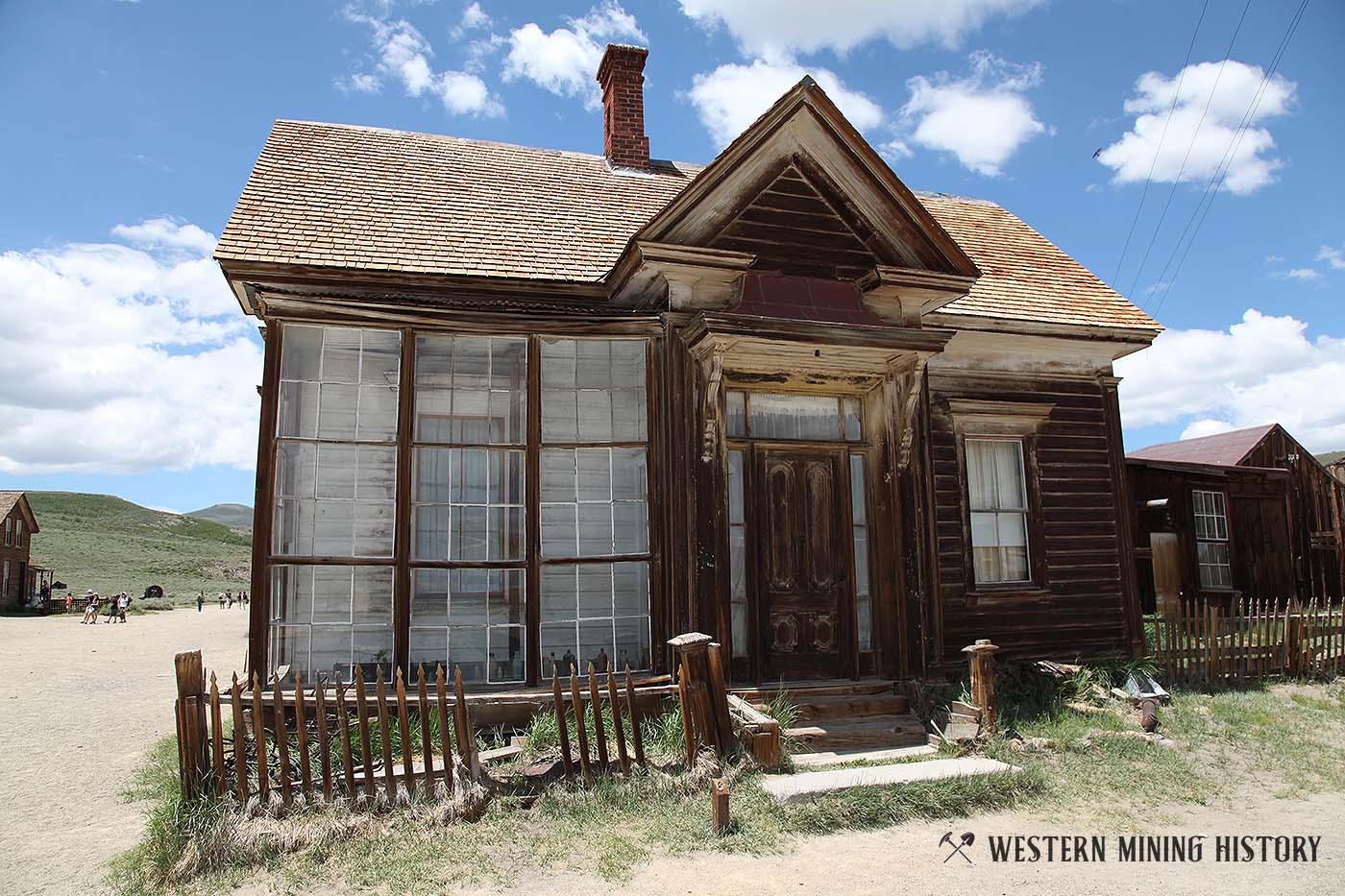
A residence of James Stuart Cain, who arrived in Bodie when he was 25, entered the lumber business, and put barges on Mono Lake to transport timber to the Bodie mines. He expanded into wagon freighting and, with Thomas Holt, leased the Bodie Railroad and Lumber Company.
He and Joe Maguire leased a block of ground from the Standard Mine and Mill and took out $90,000 in gold in 90 days. Standard would not renew the lease, but Cain eventually acquired the company through court action and became the town's principal property owner.
Dolan House - Bodie, California
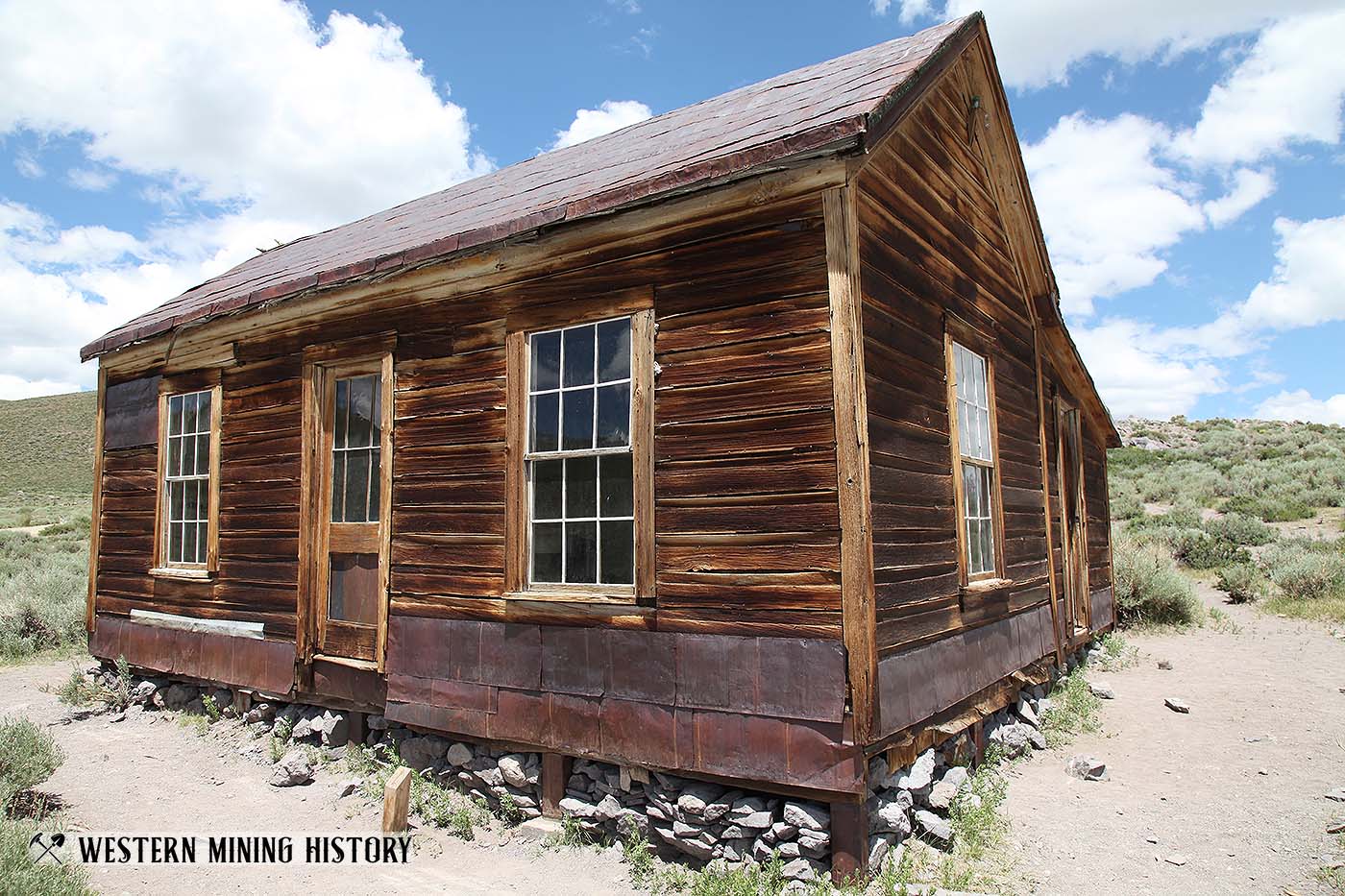
The Dolan family produced two Mono County sheriff around the turn of the century. Later this was the home of Frank McDonnell.
Lottie Johl House - Bodie, California
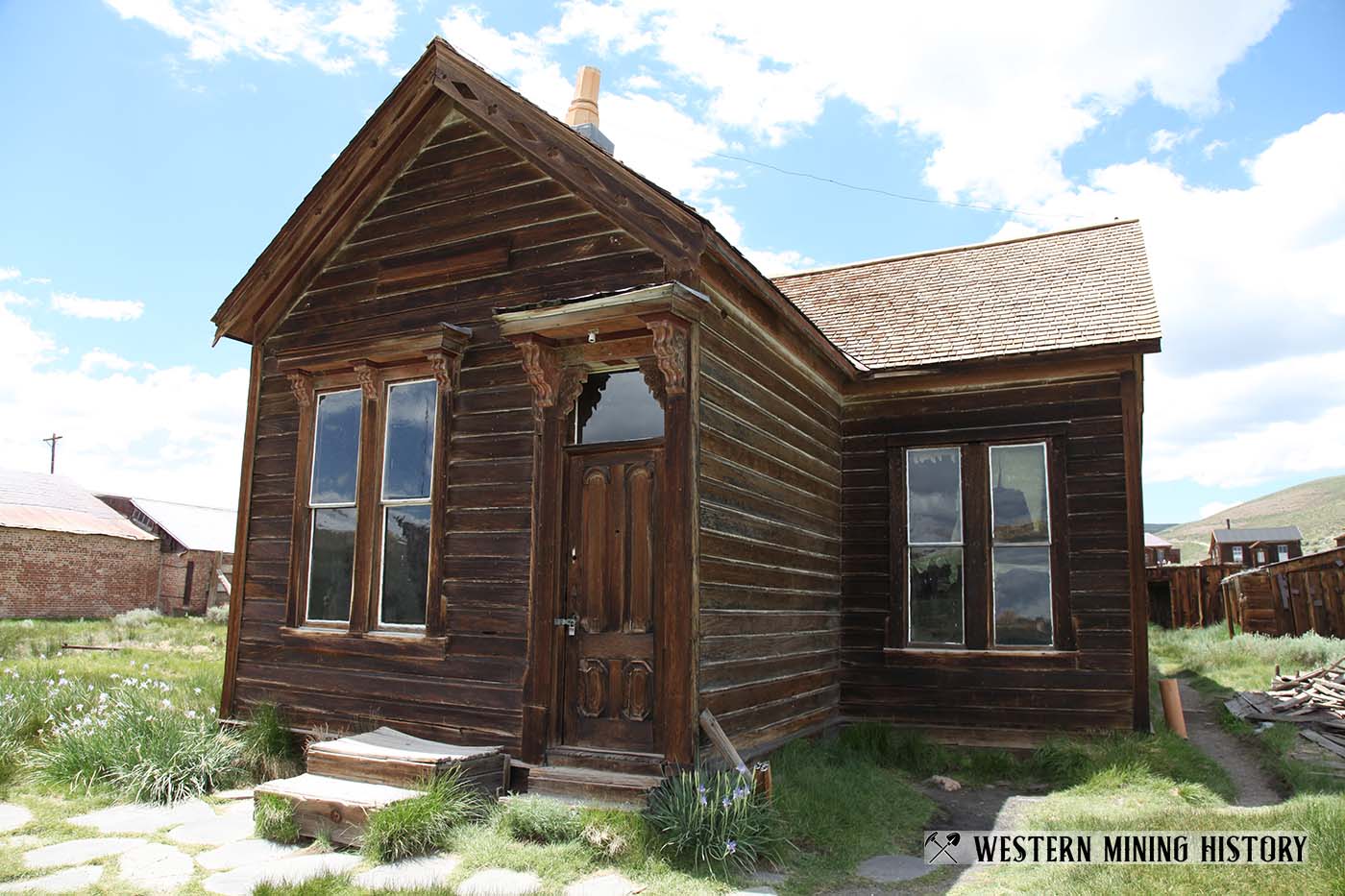
Lottie Johl House. Lottie began her career in the red-light district, but achieved respectability as a painter and the wife of a local butcher. In 1932 the Post Office was located here; Mrs. Mary Mcdonell was postmistress.
McDonald House - Bodie, California
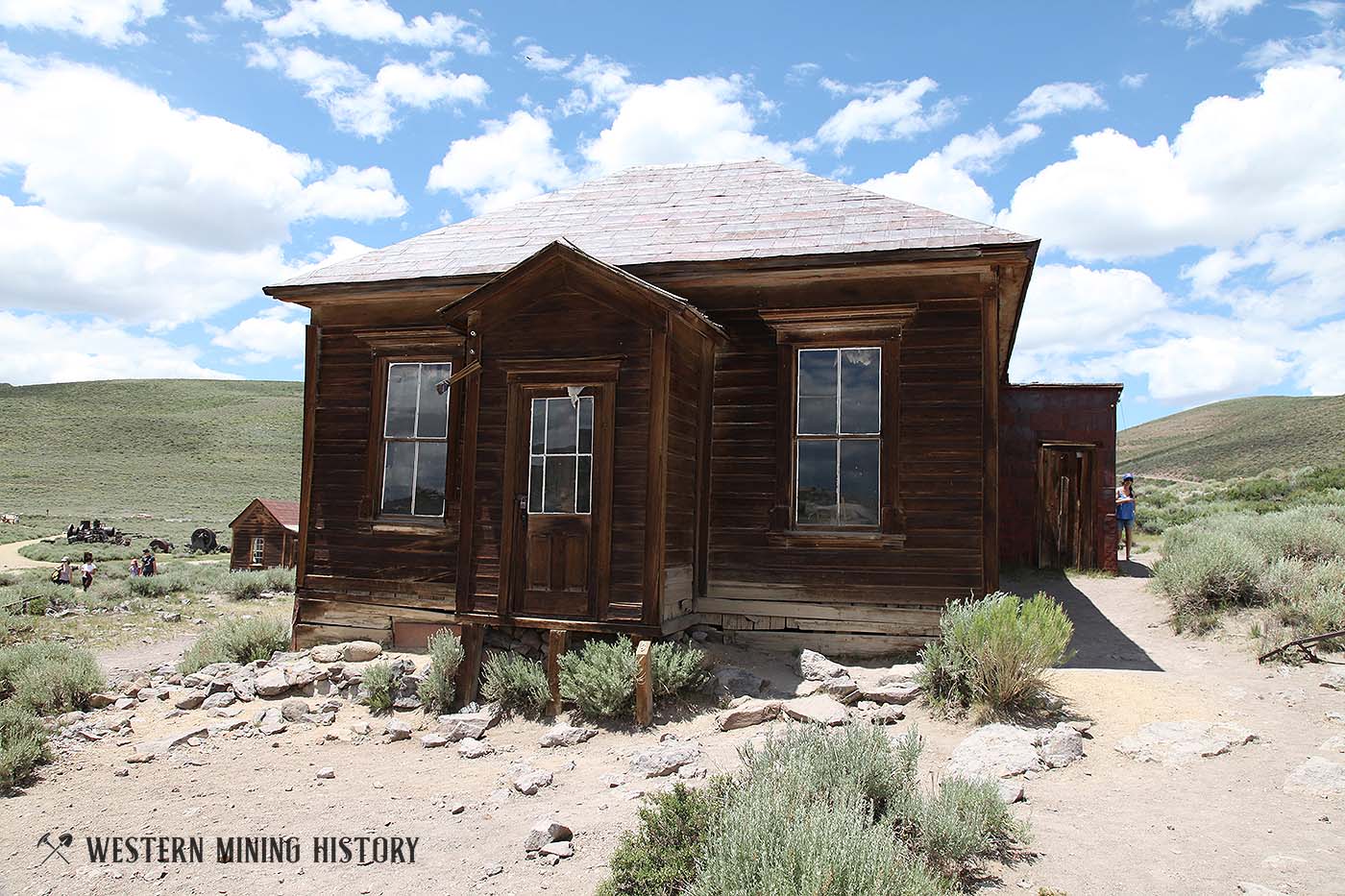
Dan McDonald was injured in 1879 when two tons of dynamite (then still a recent invention) blew up the old Standard works. This house was later owned by the Burkham family. S. B. Burkham operated a store on Main Street in the 1880s and 1890s, and his son, Cecil, ran the first automobile stage out of Bodie to Hawthorne in 1912.
Metzger House - Bodie, California
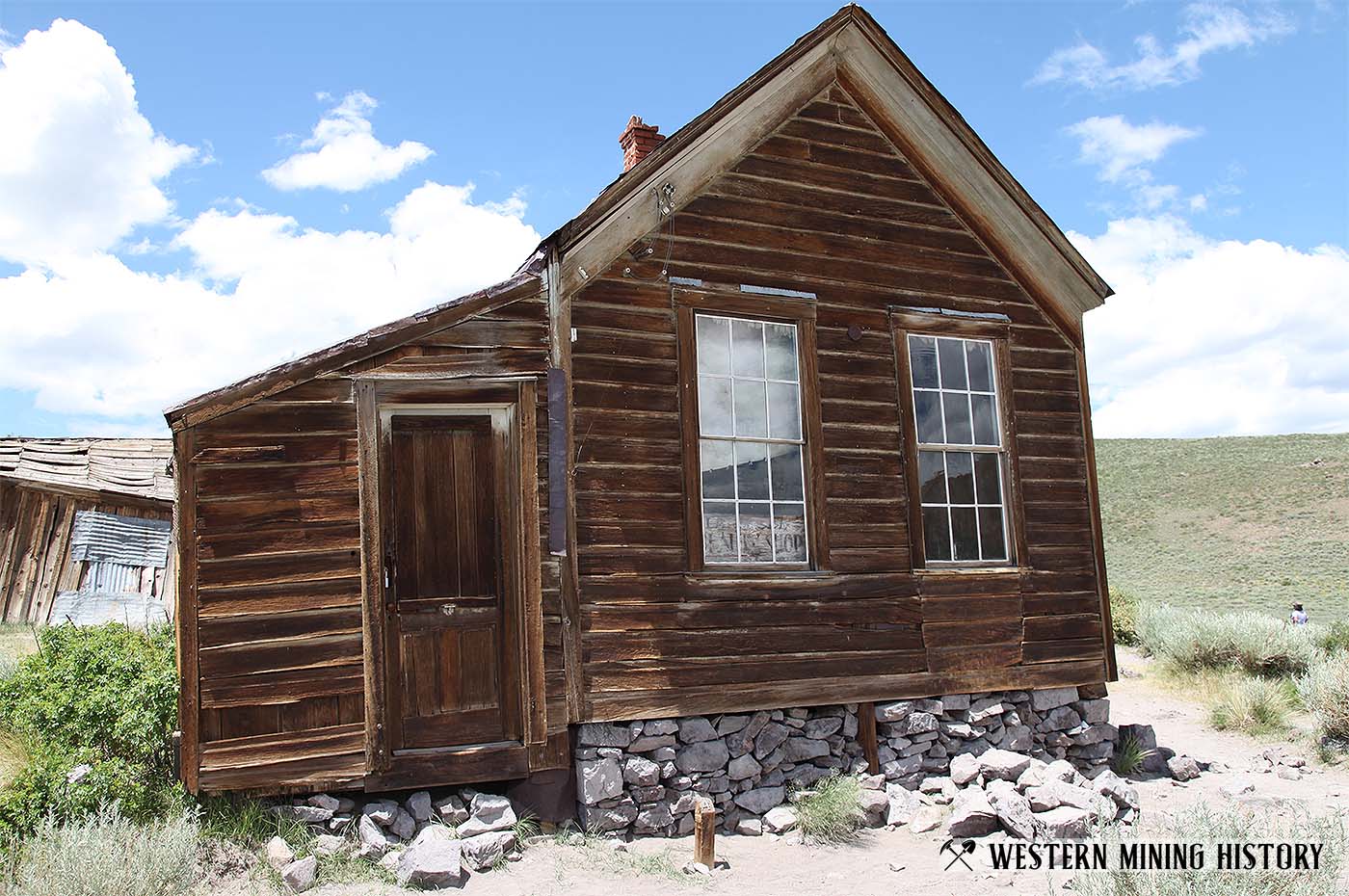
Henry Metzger, born in New York in 1860, came to Bodie in 1878 to work in the Standard Mill and was its foreman when it closed down about 1916. Two of his seven children were born in this house.
Stuart Kirkwood House - Bodie, California
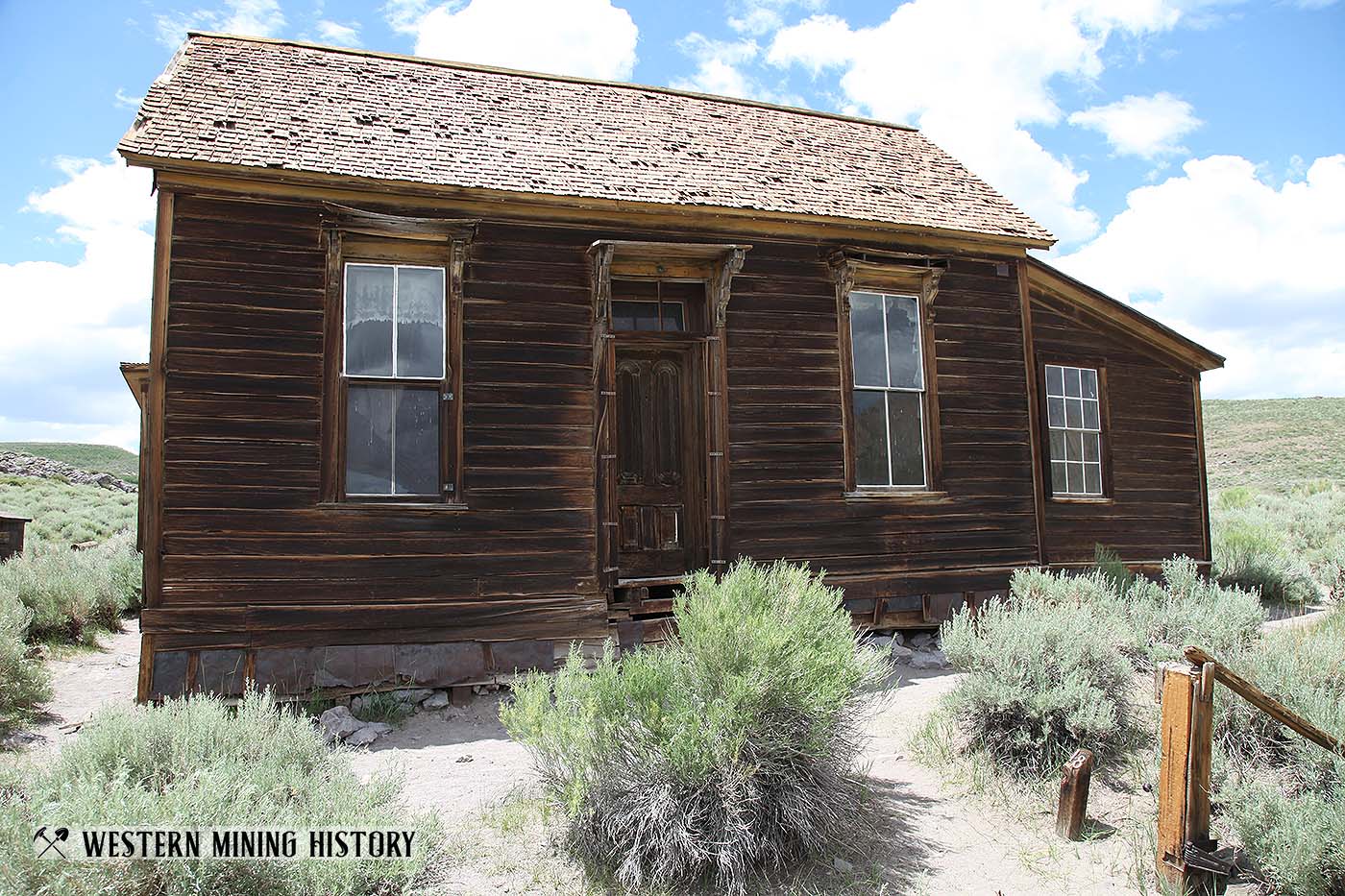
Home of Stuart Kirkwood, owner of the stables. This house was also occupied by E. L. Benedict, former manager of the Bodie Bank.
Gregory House - Bodie, California
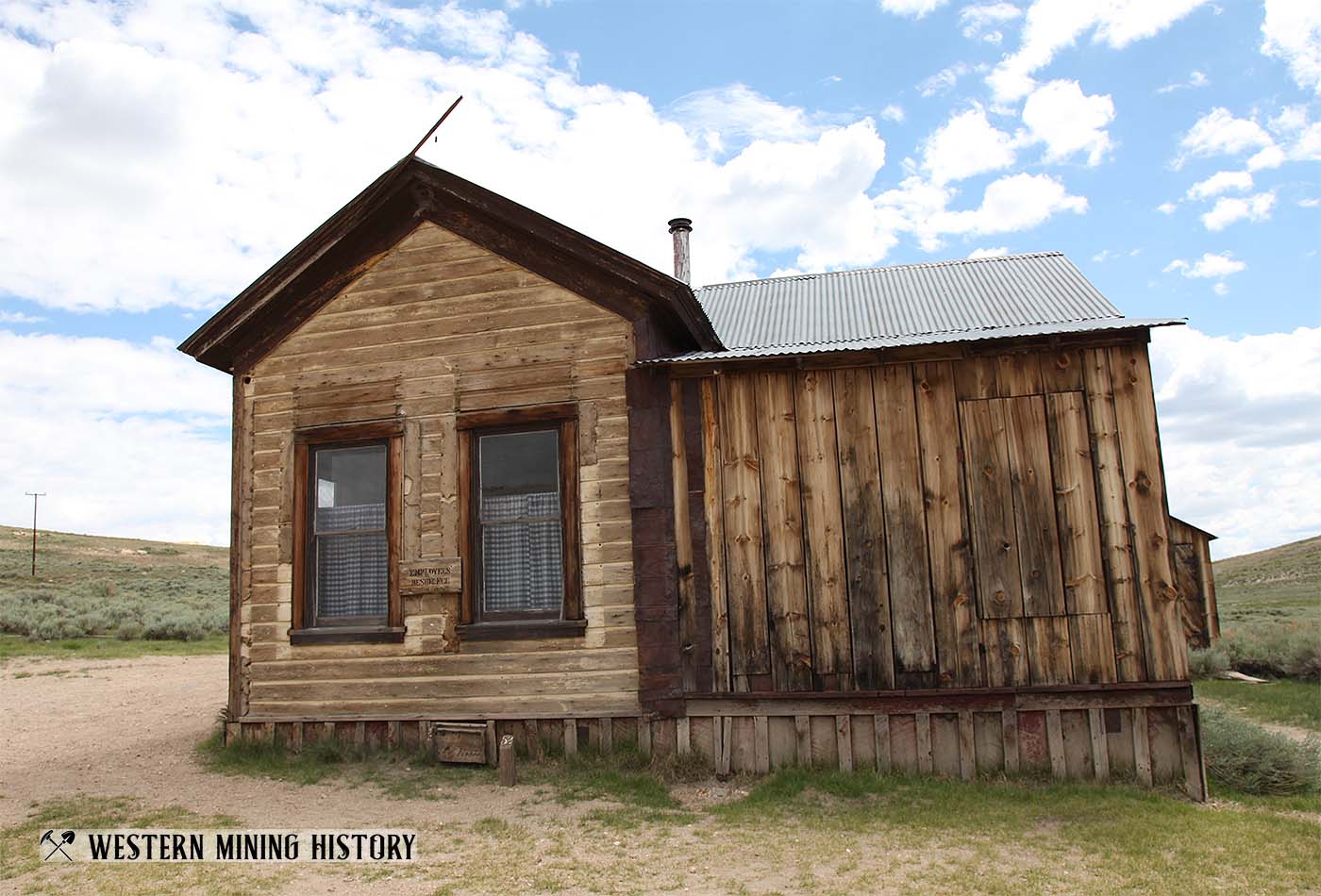
Nathan Gregory operated a cattle ranch between Bodie and Aurora before 1900. His son Spence, one of Bodie's last residents, lived here for years as a retired mining engineer. Behind the Gregory House, on what remains of the southern end of Wood Street, stands the Fouke House. Annie C. Fouke, wife of R.R. Fouke, is buried in Bodie's cemetery. Return to Main Street and turn left.
McMillan House - Bodie, California
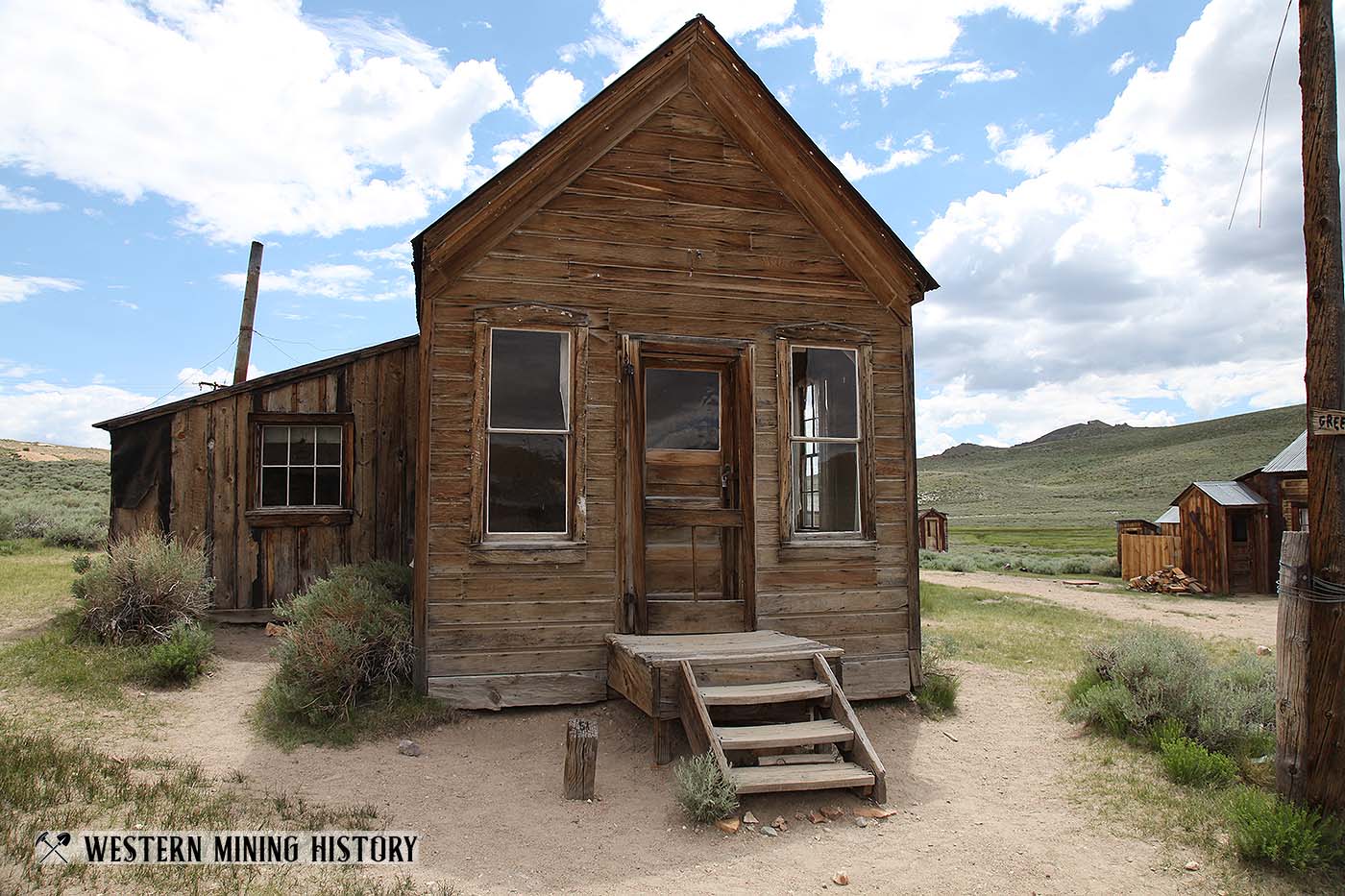
A. E. McMillan was secretary of the Bodie Miners Union in 1885. His son Dan was a one-armed sheriff and manager of the Bodie baseball team after the turn of the century.
Mrs. Miller's Boarding House - Bodie, California
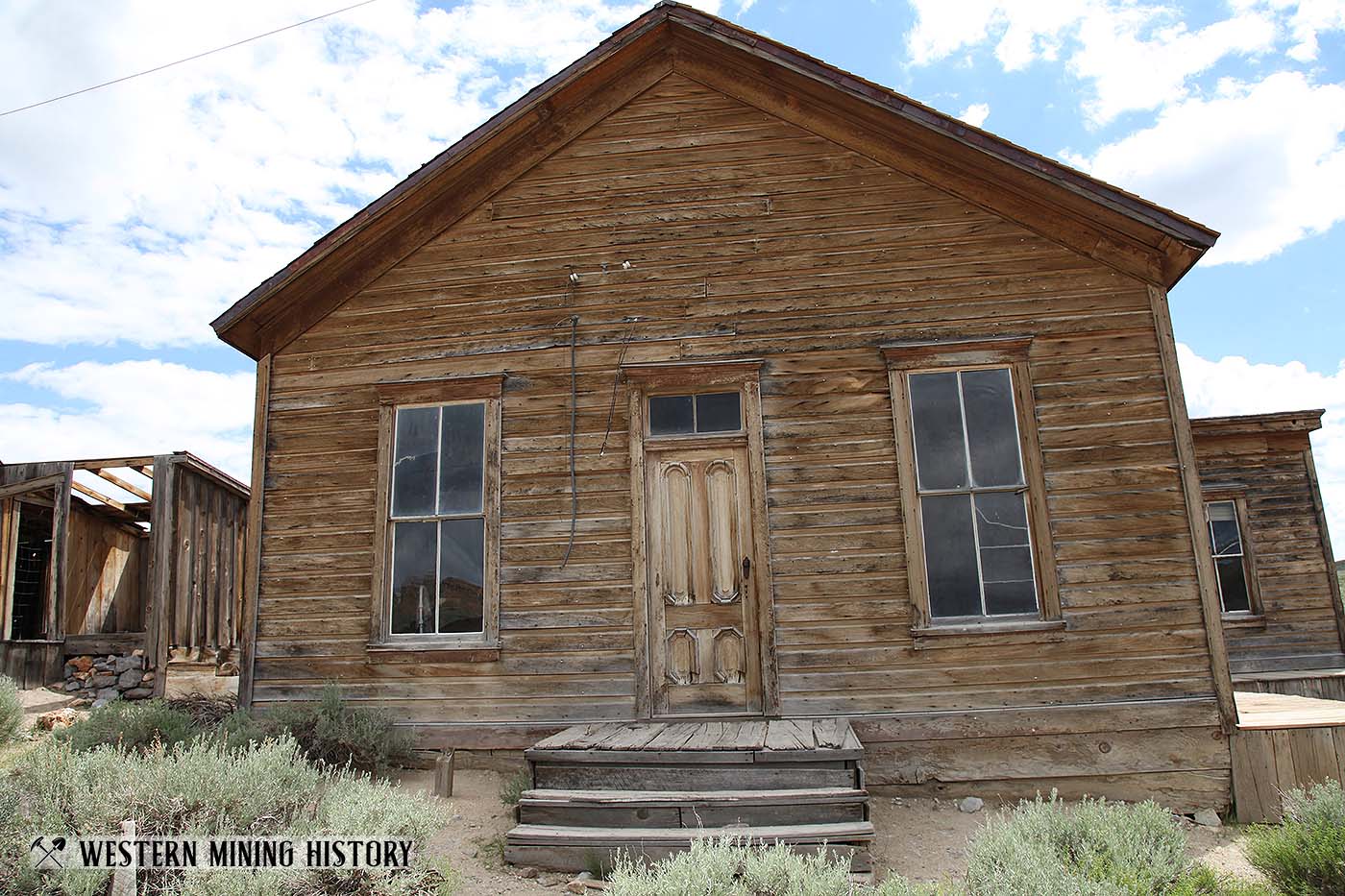
The Bodie tour guide book calls this the Mrs. Miller's (other) boarding house, indicating she operated more than one.
Pelton Wheel - Bodie, California
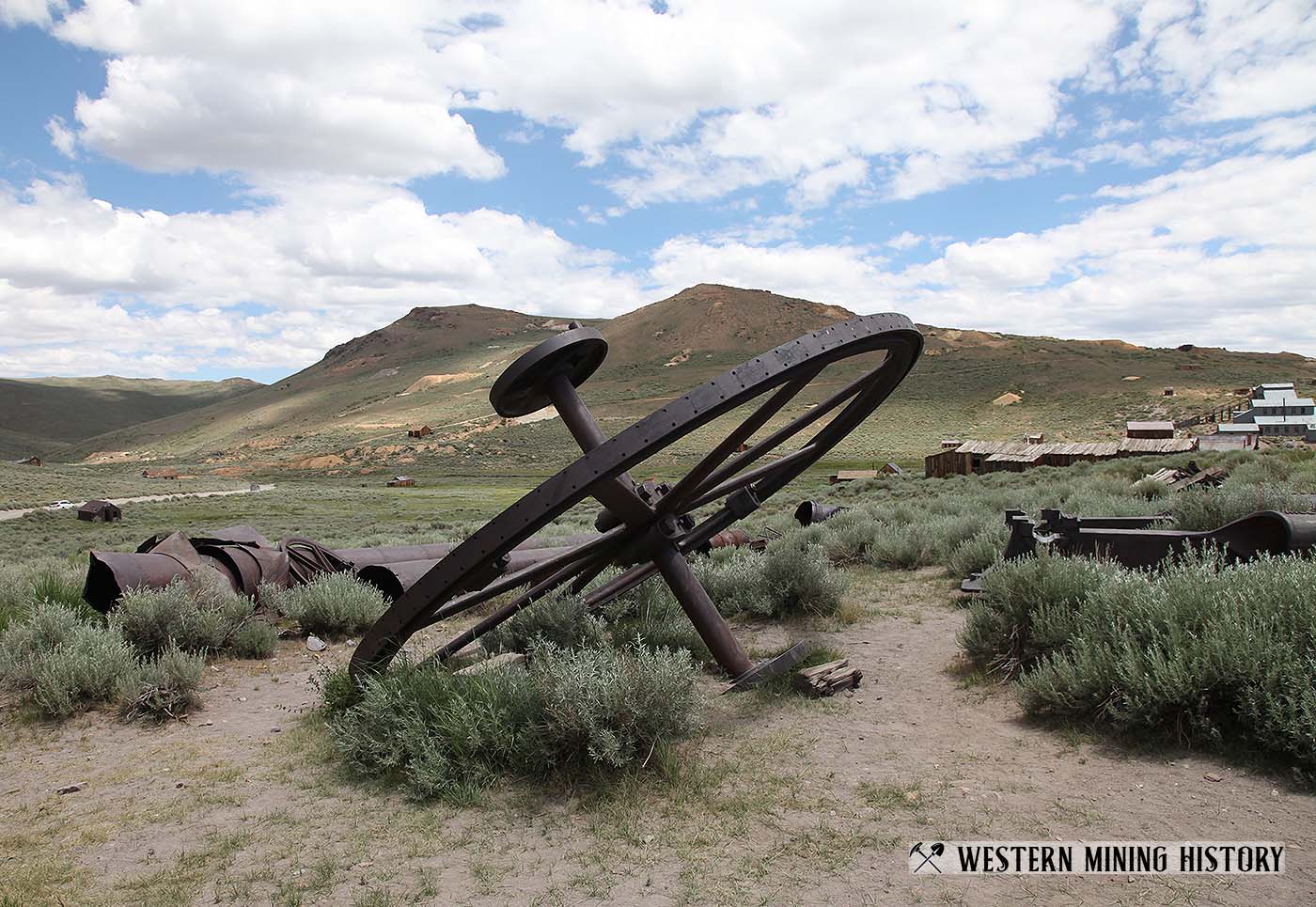
This is the runner of a large pelton wheel, the buckets (or vanes) are missing. This could have been brought over from the Green Creek power station that provided power to Bodie.
Gas Pumps at Bodie, California 2014
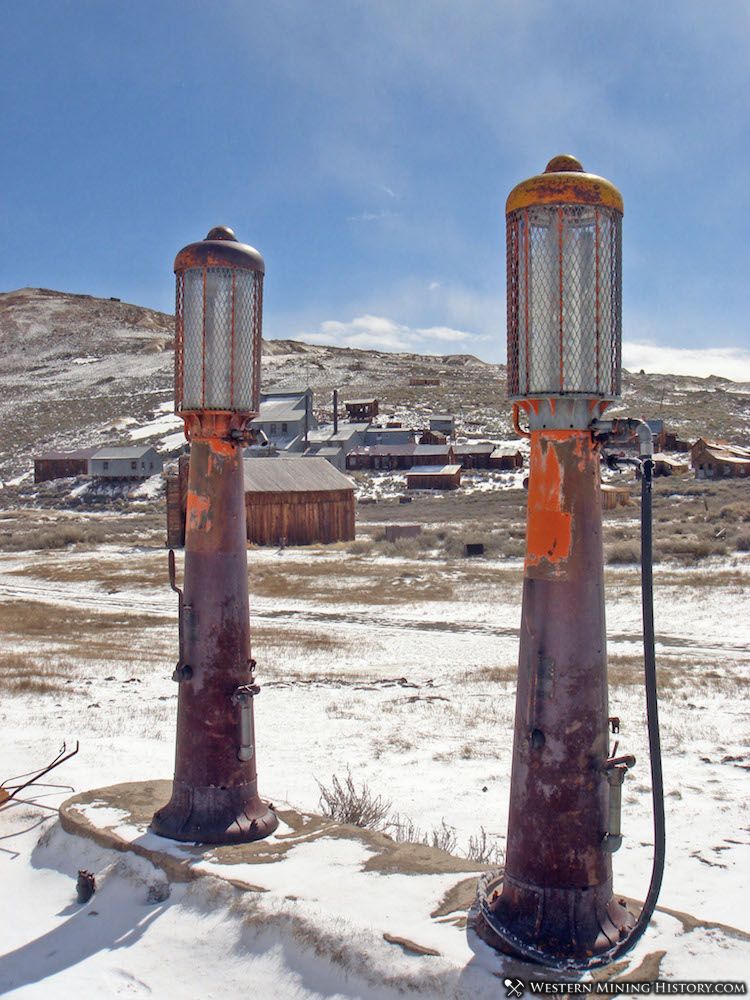
Photo provide by Rick Tegeler. Read about Rick's "Desperate Dreams" DVD - an extensive presentation of mine and ghost town photography from Nevada: Desperate Dreams Blog Post
